
Issue 136 Term 4 | 2022 ISSN 1170-4071 Principal | Careers Advisers | HODs | Administration Dept | Board of Trustees | Property Manager | Outdoor Ed Dept | TeachersHAVE THE FOLLOWING PEOPLE SEEN THIS? The spice of life Diversity in the classroom ONLINE Future planning How to prioritise initiatives for 2023 Connecting with Te Reo Māori Creating waves of change for the future of Aotearoa Comfort zones The importance of feeling emotionally safe at school Pondering solar power Navigating energy efficient options Achieving happy headspaces Reflecting on Mental Health Awareness Week




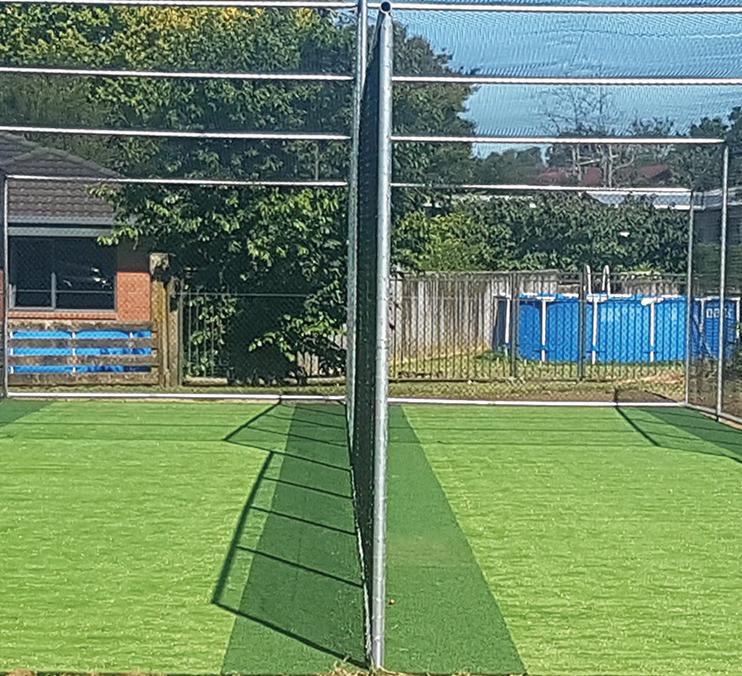
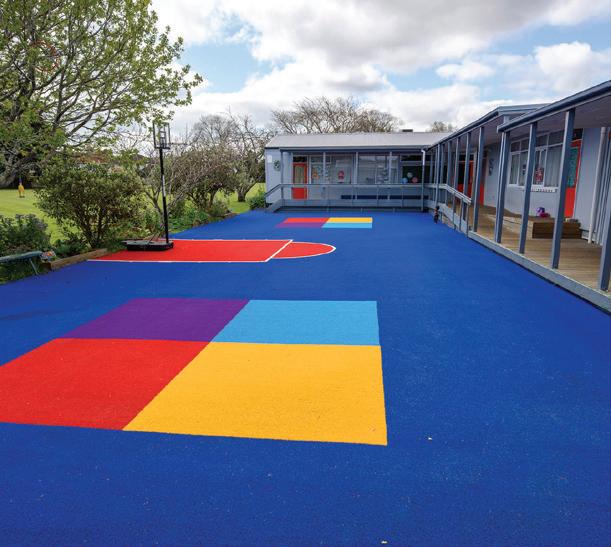

Upgrading your playground surface or school multi-use court? WE ARE ARTIFICIAL TURF SPECIALISTS, SERVICING NZ WIDE. P. 0508 836 647 E. info@teamturf.co.nz www.teamturf.co.nz Multi-use courts. Playground surfacing. Cricket wickets. Courtyards. Landscaping areas.
This issue of Principals


Today casts an eye towards 2023 with a piece on future planning, discussing how to prioritise initiatives for the year ahead.
We look at how connecting with Te Reo Māori is creating waves of change for the future of Aotearoa, and how diversity in the classroom is the spice to educational life.
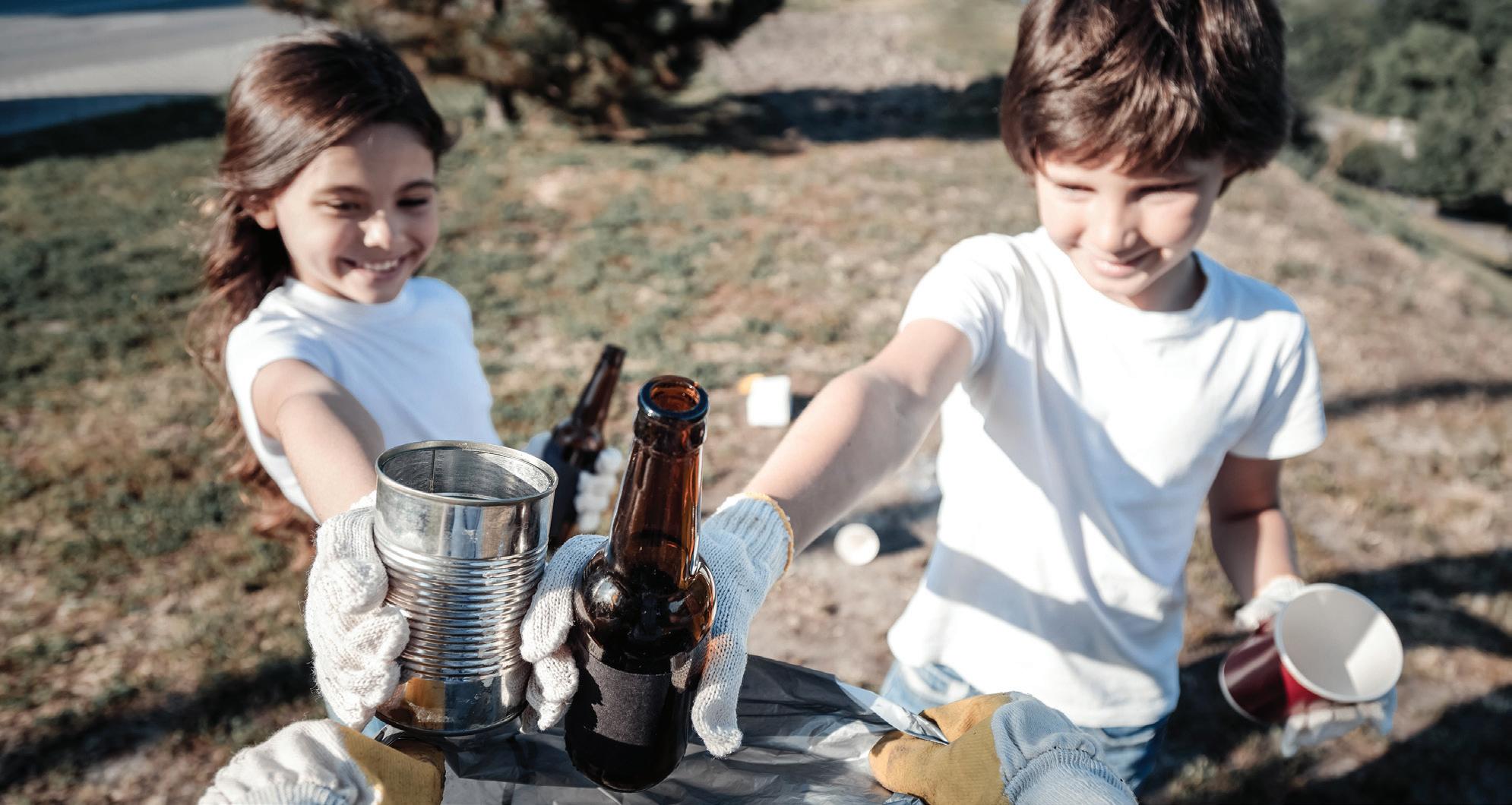



There are articles on mental wellbeing, looking at the importance of feeling emotionally safe at school, and we reflect on Mental Health Awareness Week.
This issue also looks at solar power’s energy efficient solutions, understanding climate change and the impact severe weather events have on schools.

We also profile two schools’ 150th anniversary celebrations, plus much more.
Enjoy!
WORKING & LEARNING
Green solutions

better
sports injuries

Keeping it green

4 | Term 4, 2022 www.principalstoday.co.nz
6 This publication is printed on papers supplied by All wood originates from sustainably managed forests or waste sources. All mills utilise the Chain of Custody system to verify fibre source. The end product is recyclable. All mills are ISO 14001 certified. Conditions of entry: One entry only per person and must be sent on the official entry form or as otherwise stated. Entry is free and open to all residents of New Zealand. All entrants must be over the age of 18, proof of identity and date of birth may be requested. Employees and their immediate families of Academy Group, the promoter and agencies associated with any promotion in this publication are ineligible to enter. Winner(s) will be notified by email/phone. The judges’ decision is final, no correspondence will be entered into. No responsibility is accepted for late, lost or misdirected mail. Prizes are not transferable or redeemable for cash. Academy Group, the promoter and agencies associated with any promotion in this publication shall not be liable for any loss or damage whatsoever suffered (including but not limited to direct or consequential loss) or personal injury suffered or sustained, during the course of prize winning travel or in connection with any other prizes won. Academy Group, the promoter and agencies associated with any promotion in this publication accept no responsibility for health, luggage, insurances, travel, personal expenses and transfers other than specified. Entries remain the property of Academy Group, the promoter and agencies associated with any promotion in this publication and cannot be returned. Academy Group, the promoter and agencies associated with any promotion in this publication reserves the right to photograph and publish winners. Entries may be used for further marketing purposes by Academy Group, the promoter and agencies associated with any promotion in this publication but are not made available to any third party. This publication is provided on the basis that AMark Publishing NZ Ltd is not responsible for the results of any actions taken on the basis of information in these articles, nor for any error or omission from these articles and that the firm is not hereby engaged in rendering advice or services. AMark Publishing NZ Ltd expressly disclaim all and any liability and responsibility to any person in respect of anything and of the consequences of anything done, or omitted to be done, by any such a person in reliance, whether wholly or partially upon the whole or any part of the contents of this publication. Advertising feature articles are classified as advertising content and as such, information contained in them is subject to the Advertising Standards Authority Codes of Practice. Contents Copyright 2013 by AMark Publishing NZ Ltd. All rights reserved. No article or advertisement may be reproduced without written permission. FOR ALL ADVERTISING ENQUIRERS Contact the sales team on (03) 961 5083 | sales@academygroup.co.nz ISSN 0113-8340 (Print) | ISSN 2230-6331 (Online) MAGAZINES TODAY OVERVIEW Academy Group has grown to be one of New Zealand’s largest privately owned publishing houses, with carefully targeted publications offering in-depth analysis of current issues, exciting profiles, interesting people, and details of the latest projects and products making news. HEAD OFFICE AUCKLAND OFFICE 38 Lowe St Addington Christchurch 8011 Phone: (03) 961 5050 Email: admin@academygroup.co.nz Web: www.principalstoday.co.nz MAGAZINES TODAY MANAGEMENT Gary Collins MANAGING DIRECTOR Kylie Palermo GENERAL MANAGER OF OPERATIONS Monice Kruger CHRISTCHURCH SALES MANAGER Jonathon Taylor EDITOR Jarred Shakespeare ART DIRECTOR PRINTER Level 6, 3-13 Shortland St Auckland CBD Auckland 1010 Editor YOUR SUCCESS IS OUR BUSINESS 15 Achieving happy headspaces Reflecting on Mental Health Awareness Week 17 Understanding climate change Tackling the issue of an era 18 Keeping an eye on the horizon The impact of severe weather events
20 Spreydon School A school steeped in 150 years of history 22 Pareawa Banks Avenue School A new school with a new name 24 Opawa School Marking its historic milestone in style 27 Better connections Delivering Chatham Islands' schools with better broadband 34 Pondering solar power Navigating energy efficient options 36
Helping bring solar energy to New Zealand schools 44 Stepping out Field trips to the great outdoors 50 Establishing
outcomes Supporting school children through mentoring 52 Minimising
Almost one-third of all childhood injuries occur during sports activities 57
Giving your school lawns a little extra TLC Publishers note 10 82042 17 IDEAS 8 Connecting with Te Reo Maori Creating waves of change for the future of Aotearoa 14 Comfort zones The importance of feeling emotionally safe at school 16 Future planning How to prioritise initiatives for 2023 NEWS 6 Principal Q&A Greymouth High School’s Samantha Mortimer 10 The spice of life Diversity in the classroom 12 A good idea well received Free period products prove a huge success
EXTENSIVE RESEARCH
RIGOROUS TESTING


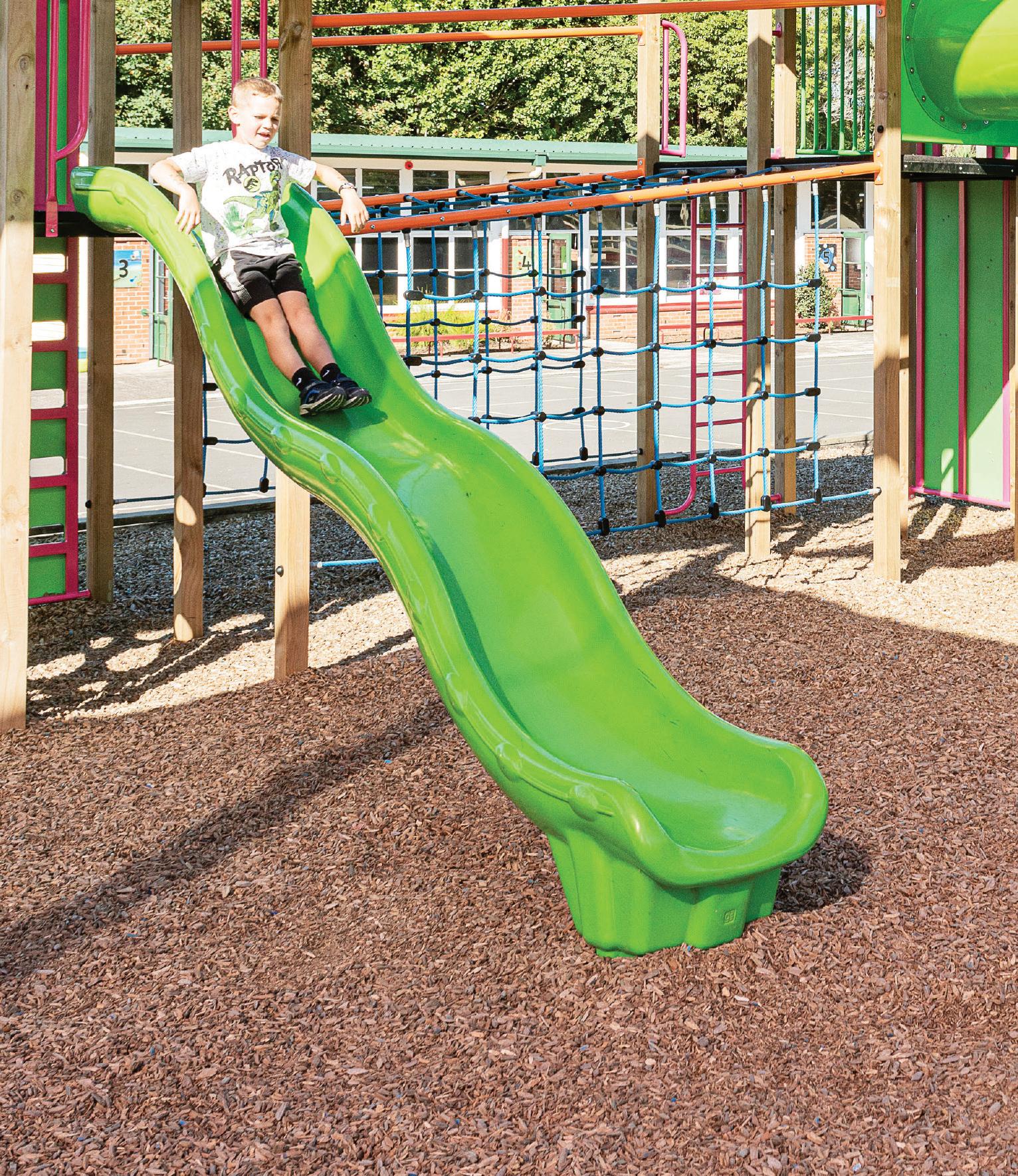
ONGOING QUALITY TESTING

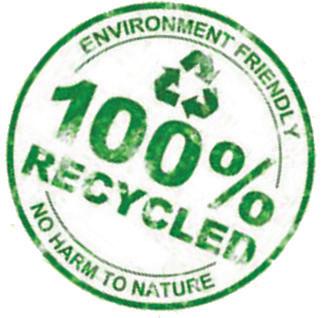

HIGHEST IMPACT TESTS

NZ’S 5-STAR RATED PLAYGROUND SURFACING
2 years of product development before launch
3 years testing of Cushionfall by 3 councils in 5 playgrounds before council approval
More than 50 tests in the last 10 years alone!
In Australasia achieved PREFERRED CHOICE Councils, the Ministry of Education, Kindergarten Associations, Play Centre Associations and Preschool Centres Manufactured exclusively by Reharvest Timber Products LTD Phone: 09 299 3999 / 0275 299 399 | Email: info@reharvest.co.nz www.reharvest.co.nz SAFETY CONFIDENT We are so devoted to ensuring supreme quality and safety that we have spent 15 years perfecting our grinder that produces our wood chip so that it removes all traces of nails, staples and hazardous metals/materials, and has no “sharp edges”. Since safety is paramountwe implement an extensive testing regime every two to three years, evaluating the impact efficiency of the wood chips being produced.
keeping learning at the heart of the community
By Timmi Aplin-Barrett
Samantha Mortimer has been teaching for 25 years and began in Manchester in the UK.
She taught PSHE (Personal, Social and Health Education), Citizenship and Sociology as well as working for the Local Authority as an advisory teacher.
Samantha moved to New Zealand at the end of 2007 where she picked up a position within less than a week of landing.
She was a Dean, Teacher in Charge, Assistant Principal and Deputy Principal at Te Aroha College. Now, she’s the principal of Greymouth High School, the West Coast’s biggest high school.

She’s been there since January, 2021 and has been working hard to keep learning at the very heart of the community.
What brought you to Greymouth High School?
I was looking for a school whose values aligned with mine as a person, a teacher and a leader.
Grey High’s values of Akoranga (learning), Respect, Community and Hauora (wellbeing), with equity at the centre drew me in.
I was also looking for a community school where everyone is welcome and I love that GHS offers a wide range of different experiences for all of our rangatahi.
These include classes for our scholarship students, a Kaupapa Māori class, a large Supported Learning Department, a Service Academy, Trades Academy, a Rainbow club and so on.
I was also very excited that we have a good working relationship with Ngāti Waewae and our kaumatua at school is part of the local iwi.
My interview with the board was fantastic; they made me feel welcomed and at home. I felt that they were “my people!”
Everything they talked about resonated with me and who I am even when they were asking me tricky questions.
How do you work to connect the school to the community? What values do you see in this?
Our vision clearly states that we want Greymouth High School to be at the heart of learning in our community and that we want our students to make a positive difference in Māwhera.

We believe that working closely with our local community partners is key for the success of our students.
We put the learning and wellbeing of our students at the heart of everything we do and to do this we need to work with all of our community.
Greymouth is a very supportive place and I have experienced nothing but kindness since I have arrived.
Our whānau want the best for their children and when we work together, we make great strides.
The primary school principals and their staff agree that “their kids are our kids and our kids are their kids” and having those strong bonds is vital.
We have strong connections to Ngāti Waewae which we are very grateful for.
The generosity of our local businesses has been amazing to support our students financially and with opportunities for Gateway placements and work experience and we want to continue to develop our close relationships with other government and local agencies.
What’s been the most rewarding part of running this school?
We are very proud when we see all of our students continue to learn, grow and develop into amazing young people.
I have been very appreciative of how our staff pulled together to keep our school open this year, for the most part, even though this was very difficult at times.
I am also very proud that in the last couple of years we have done our utmost best to try to run all of our usual activities, even though we had to think outside of the box.
For example, we still managed to have our prizegiving last year and
athletics day this year, even though we had to run five in a row for both events.
It was very important to me that we could offer our students a range of opportunities wherever we could as learning is not just found inside a classroom.
We had to cancel a couple of things but for the most part we said “OK, how are we going to do this within the rules so our students could have some fun!”
I very much enjoy working with our Senior Leadership Team with our complementary strengths, as well as the rest of our staff.
What are you looking to achieve in the future with Greymouth High School?
We want Grey High to continue developing a fantastic learning culture where all of our rangatahi develop into great people and can achieve success whatever success looks like to them and their whānau.
6 | Term 4, 2022 www.principalstoday.co.nz Interview | Principal Q&A
Samantha Mortimer


Connecting with Te Reo Maori
Creating waves of change for the future of Aotearoa
By Michaela Pointon
Progressive changes to our education system, such as the implementation of Te Reo Māori into the NCEA curriculum, will have a major impact on the future of our country.
Starting with our Tamariki (children) means their relationship to the Māori language and culture will be embedded into their world view.
From 2020, all schools who follow the NCEA curriculum are required to support the Mana ōrite mō te mātauranga Māori (equal status for mātauranga Māori), integration into classrooms. These changes are creating waves of change for the future of Aotearoa.
Takapaukura is leading change in the NCEA education system with humility and legacy. Manahautū (Managing Director and CEO) of Takapaukura, Nellie-Ann Abraham says,
“By placing ākonga (students) at the centre and with mana ōrite guiding us, ākonga will feel safe to bring their ‘whole selves’ to kura (school).
“This includes their language, cultural beliefs and identity will no longer need to be ‘left at the gate.”
Mana ōrite invites the sharing of power and honouring of the kete of knowledge ākonga bring into kura.
“The voice and vision of kura for ākonga will weave together with the vision and aspirations of whānau, leading and guiding educational pathways.

“We can only benefit from these diverse perspectives in all spheres of society,” she says.
Mana ōrite have created an online web-series for teachers to access modern resources about Māori in schools. This programme includes 10 webisodes and supplementary resources, as well as bi-weekly seminars to follow the professional development webisodes.
The webisodes range from 12 to 20 minutes long and are “Short, sharp and to the point” as Nellie-Ann says. There are four more webisodes to be released until the end of 2022.
“We wanted to expect senior management, principals and board members to play an important role in collective change in schools.
“If there is one piece of advice for schools, it’s get your wider whanau community involved.
“Hold the mana. If you have families in support of this, get them involved with families who are not in the mana whenua. We don’t have to do it on our own. Find spaces to collaborate.”
Nellie-Ann mentions how as a citizen of Aotearoa New Zealand, te reo Māori and tikanga Māori (customs) make up critical components of who we are.
“They are the foundation on which our nation was born. As kaiako, it is our responsibility to learn about our ākonga and their values.
Mana ōrite provides us with the opportunity to reset and realise our collective potential.”
She says embracing diverse perspectives empowers all of us with greater empathy. It also engages teachers and students with the constant cycle of learning and enacting the concept of ako (learning) in real time.
There are a number of strategies kaiako can use to ensure mana ōrite is upheld in akomanga (classrooms).
“For authentic learning to occur, ākonga need to share the decisionmaking process when it comes to their learning.”
Takapaukura suggests the presentation of assignments is important to the response kura may have with their engagement of Te Reo Māori.
Giving students ownership over learning topics and leading activities within the classroom is one way to do this. Considering different modes of learning and embracing these in the classroom space is important.
“Ākonga must feel their voices are heard and their perspectives are valued.”
Consideration must be given to what content of the curriculum is being covered, while ensuring equal status for Māori knowledge constructs.
“With the science curriculum, for example, there are opportunities to explore the maramataka (Māori lunar calendar)
“Ākonga might explore the Takapaukura response to questions about the impact the moon phase has on agriculture-planting and harvesting, on hauora–physical and emotional energy, as well as the traditional application of rongoā (Māori medicine).”
She says teachers creating genuine relationships with kura and sharing a curriculum where they can see themselves, will lead to Māori achieving as Māori.
Mana ōrite is the second Change Priority in the NCEA Change Programme. Equal status for Māori us about knowledge of our history and culture, but it’s also ‘bigger picture’.
“It is an open doorway, welcoming you into te ao Māori and offering genuine and authentic cultural richness for you, your kura and your wider communities.
“Just as our wāhine who stand as kaikaranga would call out to welcome you onto our marae and into our whare:

“Nau mai, haere mai rā, kei ngā rangatira o te ao mātauranga.” Welcome, my esteemed nobleman from the realm of education.”
To find out more visit: manaorite.ac.nz or takapaukura.co.nz.
8 | Term 4, 2022 www.principalstoday.co.nz News | Inside Education
The Takapaukura team (from left to right), Peter Jones, Gina Marcum-Darlington, Te Arawa Tumai, and Nellie-Ann Abraham. Photo supplied by Takapaukura.
Creating engaged students
The government has created an Attendance and Engagement Strategy to ensure more pupils attend and engage in schools, as discovered through Kōrero Mātauranga and the Education and Workforce Select Committee Inquiry looking into school attendance.
According to the Ministry of Education (MoE), the strategy and nationwide campaign were launched in June this year, and is now called All in for Learning, Kia kotahi te ū ki te ako.
The MoE stated this was created to help ākonga “go to school more regularly, participate, and make progress”.
As of August 22nd, associate education minister Jan Tinetti joined pupils, teachers, parents, and principals to help launch a nationwide school attendance campaign called Every School Day is a Big Day.
The campaign was filmed on the 5th of August in nine schools around Aotearoa to display what a normal school day looks like from some tamariki’s perspectives.
The MoE believe parents can sometimes forget how significant schools are for tamariki. Every day is filled with education, fun and


memorable moments, friends and teachers, sports, games, culture, and more, which is important for tamariki to involve themselves in.
The campaign was led by Te Mahau with help from Te Tāhuhu and was a great opportunity for parents, whānau, communities, schools, and kura to partake in helping Aotearoa’s tamariki and ākonga to attend and engage in schools.
School attendance has gradually decreased across Aotearoa schools since 2015 and has continued even more due to Covid. Only around three in five kids attend school regularly (60 percent), and only five percent of kiwis believed attendance was critical, which was also seen as an issue by the ministry.
“I launched the Attendance and Engagement Strategy in June, which set some pretty tough targets. I want to see the number of kids attending school regularly increased from 59.7 percent in 2021 to 70 percent in 2024 and 75 percent in 2026,” Jan says.
“Going to school regularly is how our kids learn. It means they are better able to pass exams and get qualifications - that’s obviously important.
“But being at school also helps children and young people develop in other important ways. It strengthens their social, cultural, and mental well-being. Attending school means that these young people will grow up having more choices.”
According to Aotearoa’s Post Primary Teachers’ Association/Te Wehengarua (PPTA), the chair of the secondary principals’ council Kate Gainsford said in response to the strategy, “The majority of parents take the responsibility of making


sure their young people attend school every day very seriously.
“A few situations require longer more intensive communications and support.
“By meeting with whānau we gain better understandings of why there might be a problem and how we can strengthen young people’s connections with their learning and future pathways.

“Investing in this work is an investment in young people.
“At this time schools are straining under the pressure of inadequate staffing in the areas of pastoral support. Secondary schools are looking for considerable heft in the government’s commitment to action.”
www.principalstoday.co.nz Term 4, 2022 | 9
News | Attendance
The spice of life Diversity in the classroom
Approaching diversity in the classroom is becoming increasingly more fundamental for successful teacher-to-student relationships, as well as developing safe spaces for students in learning environments.
The Ministry of Education (MOE) outlines inside The New Zealand Curriculum, Cultural Diversity is one of eight principles which provides foundational support for a school’s decision making.

The Cultural Diversity principle asks for schools and teachers to deliver a curriculum which reflects our culturally diverse nation and affirms students’ different cultural identities.
It also encourages the incorporation of cultural contexts into teaching and learning programmes through responsiveness to diversity towards ethnic groups.
This helps students understand the importance of respecting diverse viewpoints, values, languages and customs.
MOE says teachers and schools who embrace diversity help to increase student engagement and attendance.
A progressive mindset towards diversity in the classroom is a necessity to ensure all students are supported.
By Michaela Pointon
Published on the MOE website, University of Auckland lecturer in bi-literacy, Rae Si’ilata, encourages teachers to consider how cultural diversity is celebrated and reflected in their own teaching practices, and wider school environment.
She suggests teachers don’t need to be expert in all of the linguistic and cultural knowledge of the students that they work with.
Just by having an inquiring mind, a teacher can support students with diversity, even when you may not know much about their culture specifically.
MOE suggests one way you can do this is to deliberately ask questions to their students.
Questions such as “I don’t know very much about that; can you tell me about that?”
Or instead, “Can you be the teacher in this situation and teach all of us?” are appropriate questions to include these students, without assuming or dismissing their differences.
The MOE suggests this approach to understanding cultural diversity and learning about different cultures as a teacher, is a positive example of ako (learning) and tuakana-teina (shared mentorship between ages).
Giving some students the position of the tuakana, where they are offered a moment to teach about their individual diversity and the teacher is the learner, is a positive way to reinforce this.
“When we create learning opportunities for children where their identities are being represented at school, they want to ‘buy into’ school.
“I think even in schools that are largely monocultural we recognise we live in a linguistically and culturally diverse world.”
The MOE suggests that even if some Aotearoa communities might be fairly monocultural, the online digital world space is not.
Promoting the value of linguistic and cultural diversity is important to still teach.
Ā Mātou Kōero - Our Stories, is a series of illustrated storybooks, which have been developed by MOE and Te Kete Ipurangi (TKI) to specifically support, reflect, and celebrate the Kiwi Muslim community in Aotearoa. They are a way for non-Muslim Kiwis to learn about others, so they are no longer others.
The books are available for educators on the TKI website, and focus on the wellbeing and resilience of these communities.
They also promote unity, diversity and inclusion. There are Kaiako support materials to go alongside this storybook series, to help teachers incorporate these discussions into practice naturally.
Relationships and sexuality education for teachers is another area of diversity which is important to consider.
As society continues to develop and younger generations push for
inclusion and equality, it’s important teachers understand respectful protocol for students within the LGBT+ community.
In April 2022, Associate Education Minister, Jan Tinetti released a number of resources available to teachers to support the wellbeing and teaching of diversity, relationships and sexuality in schools.
“Students who are happy and confident learn better. I want all our schools to be safe places for all our students whatever their gender, race, nationality, beliefs or sexual orientation,” she says.
The resources have been developed with young people, universities and teachers.
They include information ranging from the importance of online digital safety to consent, with a focus on building quality healthy relationships.
Acknowledging and supporting diversity in the classroom as a teacher is one way to ensure healthy relationships and spaces are available to students who need support in these areas.
No matter what diversity students bring to the classroom, it is important to create a non-judgemental safe space for everyone.
There are many support networks and resources available to schools and teachers to ensure effective pedagogy is present in the classroom.
To find out more and view the resources mentioned above, visit: tki.org.nz.

10 | Term 4, 2022 www.principalstoday.co.nz News | Inside Education

Free period products in schools a huge success
By Timmi Aplin-Barrett


For over a year now, the
funding free
products in over 2,000 schools across the



The initiative, set to run until at least June

been incredibly
to school
Associate Minister of Education, Jan Tinetti, says it’s been a huge success.
“The results speak for themselves backed up by the feedback we hear from students, principals and teachers across the country who are unified in describing the positive impact the free period products in schools is having,” she says. “We have had overwhelming demand and support.”
So far, it’s estimated that the initiative is reaching 96 percent of menstruating students. Jan says the initiative is open to all schools and it’s their choice to opt in.
The focus now is to refine deliveries, introduce a broader range of products and additional access methods for students.

According to Jan, students have said they value the choice in the type and size of the products as well a show they get it.
“There has been some feedback to provide more sustainable options such as period underwear and menstrual cups but at the moment, the initiative supports tampons and pads.”


The method of delivery ranges from school to school with some schools offering a dispenser while others can be taken from a cupboard or offered
by teachers. So far, 1,200 dispensers have been installed across primary, intermediate and secondary schools in New Zealand.
Heretaunga College was a lead supporter of the initiative and has provided more than 700,000 packs of products to an estimated 216,000 menstruators in participating schools.
They were part of the original pilot that involved 15 Waikato schools before becoming a nationwide initiative.

The current government is committed to continuing this initiative but Jan says it’s budget contingent. Since its inception and until June 2024, it will cost around $25 million.
The initiative aligns with the current government’s commitment to remove on of the barriers that prevent children and young people regularly attending school.
It works in very well with other current initiatives such as “Every School Day is a Big Day” which aims to improve school attendance overall.
Period poverty is an issue impacting students nationwide (and worldwide) so this initiative is one way the government can support whānau and positively impact children’s wellbeing.
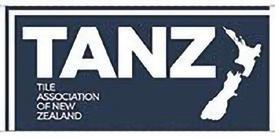
The initiative compliments more than 75 initiatives included in the Child and Youth Wellbeing Strategy that was launched in 2019.
This includes things like free school lunches, cheaper doctors’ visits and the school donations scheme that will help families with the costs of essentials.
12 | Term 4, 2022 www.principalstoday.co.nz News | Health & Hygiene Specialises in delivering quality before school care, after school care and action-packed holiday programmes. From cooking healthy meals to participating in sports and recreational activities, there is something for everyone!! WE GROW AWESOME KIWI KIDS WE STRIVE TO CREATE A FUN AND SAFE ENVIRONMENT THAT OUR KIDS JUSTLOVE! • Locally owned and operated • MSD approved • WINZ subsidies available • Sibling discounts • Grandparent discounts • Teacher discounts CONTACT JOOLS DA SILVA TODAY! TEL: 021 0254 3249 JOOL S@SKIDS. CO. NZ TONY HORSFALL M: 021 935 699 T: 09 533 5566 P.O.Box 82264 Highland Park, Auckland. 2010 www.surfacetiling.co.nz Find us on QUALIFIED PROFESSIONAL BCITO Member of TANZ Tile Association of New Zealand.
New Zealand government has been
period
county.
2024, has
valuable
students.




Slash Your Storage Costs!!! Save Thousands $$$ Looking for Sliding Storage Systems? for a quote!! Ex Hire Lundia & Hydestor Systems Now Selling Up to 60% off retail Near New-Lundia-Sliding & Static Shelving NOW Admin Furniture available 60% cheaper than new Call Mike today Ph 0800 42 42 47 Email: advancehire@xtra.co.nz SHELVING SOLUTIONS – Auckland • Wellington • Christchurch • All areas Serviced www.advancehire.co.nz / www.shelvingsolutions.co.nz / www.cabrafurniture.co.nz
Comfort zones
The importance of feeling emotionally safe at school
By Michaela Pointon
Feeling safe in a classroom environment, as both Kaiako (teacher) and Tamariki (children), ensures a positive and stable foundation for active learning at school.
Managing behaviour in the classroom creates cultural dynamic, as well as setting clear expectations for students.
Expert in Educational Psychology and Neurosequential Therapeutics practitioner, Kathryn Berkett, says forming relationships where students feel respected and relaxed in your classroom environment will help provide a foundation for students to be actively engaged at school.

Kathryn is committed to helping teachers and parents to work better with their students, youth and colleagues.
Her company, Engage Training, delivers the latest neuroscience information to educators.
Engage Training provides strategies to teachers around having ‘more control and less impulse’ in the classroom.
She says one of the first steps to creating a safe feeling classroom environment is managing stress for both students and teachers.
Managing stress in the classroom is about understanding each individual student’s need to feel safe.
Kathryn runs professional development sessions about this subject, and has many online resources developed to complement the in-person training.
“If we can create these values in our classrooms, schools, communities, homes, then we can create a general sense of safety.
“From a neurological lens, we cannot activate the ‘thinking’ parts of our brain unless we have a sense of safety and belonging.
“The difficult situation in a classroom is we all have different ways of feeling safe. So, for some Tamariki it is quiet
Educational Psychologist and Neurosequential Therapeutics practitioner, Kathryn Berkett.
and ordered, and for others, ‘safe’ could be flexible, random and noisy.”
One of the most important aspects of being able to engage in academic learning is to feel secure in your environment.
“When we feel unsafe, we can’t engage in learning. The first priority in a classroom is creating safety, which in itself is a way towards managing behaviour.
“Many teachers do this naturally, but some of our environments make it difficult for our students to feel truly safe.”
In these cases, teachers need to be able to be flexible and adaptable. “To do this in a biologically respectful way, they need to understand what trauma is, and how it can impact the brain and the body.”
Personal trauma often affects students’ engagement with school. Depending on the severity of the individual situation, trauma can increase mistrust in an environment.
“Experiencing trauma can mean the brains of our Tamariki and Rangatahi may be concentrating on survival, putting more cognitive energy into scanning for danger.
“The body stays in a physical state of activation, ready to attack or escape.”
She says students’ energy in these situations is used towards the body for survival. This means for some students’ energy isn’t going to the brain, which is required to engage in lessons.
“Quite often this means focus is low, and their reactions are heightened to noises or changes.”
Kathryn suggests schools can sometimes concentrate too much on learning how to implement curriculum subjects, and forget to spend enough time developing understanding the need people have for connection, safety and predictability.

Of course, the curriculum is important and should be given the time and attention it deserves however, she advocates for teachers educating themselves about personal needs their students have.
“If we understood this better, we could improve engagement hugely.”
She further suggests it isn’t possible for a teacher to establish safety in their classroom, or be intuitive to the needs of their students, if they themselves are not feeling safe.
Engage Training notes there are four things required for the sense of safety:
Feeling seen - being acknowledged, recognised and validated
• Having a sense of belonging to those around us - the sense of sameness, connection, familiarity is important
• Knowing what is happeninghaving a sense of what is coming next is important for establishing safety
• Mana - the feeling you are contributing, you are valued and have agency. This is an important part of feeling safe.
“Creating a workspace which is safe and supportive of our Kaiako has to happen if we want the best outcome for students.”
If you want to find out more from Engage Training in regards to professional development at your school, make sure to reach out to Kathryn or the team.
There are multiple online resources ready to read to upskill in these areas. Kathryn is exceptionally knowledgeable and approachable, and will be able to answer any questions you may have as a teacher or principal. Find out more at engagetraining.co.nz

14 | Term 4, 2022 www.principalstoday.co.nz News | Mental Health
"Experiencing trauma can mean the brains of our Tamariki and Rangatahi may be concentrating on survival, putting more cognitive energy into scanning for danger."
Achieving happy headspaces
Reflecting on Mental Health Awareness Week
By Natasha Parrant
With the Mental Health Awareness Week (MHAW) that just occurred (September 26th until October 2nd) it’s important to reflect on mental health awareness among young people and tamariki.
Aotearoa’s youth are struggling to deal with mental health. In 2021 Unicef stated, “In Aotearoa, mental distress among youth has increased significantly over the last decade and around 21 percent of adolescent boys and girls aged 10-19 live with a mental disorder.”
So, what are Aotearoa schools and the government doing to prevent these statistics from rising in the future?
The Ministry of Education (MoE) operations and integration leader (hautū) Sean Teddy says the ministry acknowledges life is challenging for Aotearoa’s youth.
“All young people deserve an education that enables them to develop healthy relationships to become confident in their own identities and develop the skills to look after their own wellbeing and that of others.
“We work alongside educators to help them develop effective whole school approaches to supporting student wellbeing.
“Providing safe, inclusive learning environments where students feel they belong is an important aspect of supporting mental wellbeing and initiatives such as Positive Behaviour for Learning (PB4L) School-Wide, the Bullying-Free NZ website, the Wellbeing@School survey toolkits, and PB4L Restorative Practices support schools to do this.
“There is also a growing range of resources and initiatives including Ka Hikitia, Tā Taiako (cultural competencies for teachers of Māori learners), Huakina Mai aim to support schools and teachers to affirm the language, culture, and identity of ākonga Māori.”
Do tamariki have enough support?
Various psychologists, learning and behaviour resource teachers, school staff, and early childhood education (ECE) are supporting the development of skills, knowledge, and systems regarding supporting student learning and wellbeing, Sean says.
“Budget 2020 provided a total of $75.8 million over four years to increase access to counselling in schools… This made counselling support available to more than 24,000 of our most vulnerable students in 164 primary, intermediate, area, and small secondary schools and will run in participating schools over three years.”
The MoE also supports the Mana Ake programme conducted by the Ministry of Health. In Budget 2022 the government announced its commitment to expand Mana Ake with $90 million to hopefully begin services in Northland, Counties Manukau, Bay of Plenty, Lakes, and West Coast regions, including existing services in Canterbury and Kaikōura.
“Mana Ake is a school-based programme that gives children the skills and support to deal with issues that include grief, loss, parental separation, and bullying. It also provides advice, guidance and workshops for parents, whānau, and teachers,” he says.
Mental health education forms part of health and physical education. Mental health education encourages thinking more positively, more about societal pressures, and selfacceptance, Sean says.
The ministry is currently developing Mental Health Education guidelines to assist teachers and kaiako in developing their mental health education programmes.
The guidelines will help schools ensure there’s quality teaching, learning, supportive policies, and that the school community acknowledges local needs. These resources will be released later this year, Sean clarifies.
“Ka Ora, Ka Ako, which is part of the New Zealand Child and Youth Wellbeing Strategy, provides food to children at school to directly address poverty and food insecurity, and positively impact children’s wellbeing.”
Anna Mowat works under Real Collective where she project manages/leads Sparklers on behalf of the Mental Health Foundation (MHF), and Te Whatu Ora Community and Public Health. Sparklers is a project the MHF supports to improve wellbeing education in schools.

Anna says MHAW is important as it will “broaden tamariki’s understanding of mental health”.
While some people can talk about their physical health, they might not feel as confident to talk about mental health and ask for support, Anna says.
“At Sparklers, we like to use the definition of our mental health and wellbeing as feeling good and functioning well.”
Mental health is about knowing who you are, contributing to overall health, and doing things that make you feel good, she says.
“Schools and kura often use Tā Mason Durie’s Te Whare Tapa Whā as
their model of hauora (health and wellbeing), which does a great job of recognising and embedding feeling good and functioning well inside it. We love it!
“Te Whare Tapa Whā takes a holistic view of health and wellbeing and includes our taha tinana (physical health), taha whānau (the health of our whānau and friends), taha wairua (our spiritual health), taha hinengaro (our mental health), and whenua (the health of where we live and our land).
“If school teams and tamariki understand that all the elements of their hauora are interconnected and interdependent then they’re able to focus on all the things that can help them feel good.”
This way, MHAW and Te Whare Tapa Whā is a good way to normalise mental health, she says.
Anna also advises five ways that can boost people’s mental health and wellbeing:
1. Connecting with friends and having trustworthy relationships
2. Learning new things
3. Being active daily
4. Taking notice of what’s around you 5. Giving your time or presence.
Often tamariki won’t approach mental health experts for their advice. That’s why adults need to connect, check in with them, and ensure they’re there for them when they need it most.

The MHF is happy to support schools and kura with enquiries about hauroa, mental health, and wellbeing. Feel free to get in touch: Anna Mowat, director at Real Collective: anna@realcollective.org, 021 712 173, www.realcollective.org.nz

www.principalstoday.co.nz Term 4, 2022 | 15
Real Collective director Anna Mowat
News | Mental Health
Before you start the process of planning for the new year, cast your mind back over the past 12 months. Apart from it being really tough to get relievers, what have been some of your most significant challenges?
The demands of constant communication due to Covid? Or maybe your staff or community struggled with hybrid learning? And what about your significant wins? What’s gone well for you? Similarly, in which areas did you ‘knock it out of the park’ for your students, staff and community? How have they excelled or made the most progress?
How this has panned out for you will be similar in so many ways across our 2,500 schools. For example: delivering hybrid learning, identifying issues to overcome related to equity, helping teachers to plan for what is most important. And for you, perhaps it is just about getting through in one piece while keeping your school open!
The fatigue is real
Whatever your wins have been, with all the demands that you’ve been under for the past two and a half years, the fatigue is real and it is likely that you, your staff and students have diminished energies.
Rather than creating grand plans for the future without fully considering your school’s capacity to implement them, now is an opportune time to take stock of what is most important for your school and community, and plan for the future with renewed positivity and hope; after all, there is much to be excited about for the future of the NZ education system. For example, the refresh of the New Zealand Curriculum and Te Marautanga o Aotearoa are just two exciting changes in the pipeline. Both of these initiatives will help open the doors for educators to teach in ways that are increasingly holistic, inclusive, relevant and engaging.
How to avoid implementation-itis
The impact of the current changes upon education, coupled with the ongoing challenges of the context you are leading in, means that it’s more a test of how to spread limited energy rather than a lack of desire to embrace change.
Future planning - matching capacity to reality How to prioritise initiatives for 2023
Rob Clarke CEO of Learning Architects
And the last thing anyone wants to do is fall into the trap of implementation-itis, where one initiative is layered over another, and possibly another, without checking to see if the first one has embedded properly.
The solution to this is figuring out which initiatives are most important to your school or kura, and then balancing the capacity your staff has to implement these. If you have already spoken with staff, community and board regarding the NELP, then you’ll likely have a good sense of which priorities are the most important for your school to focus on next year.
Evaluate what worked well in the last year
As part of your planning process, it’s useful to evaluate the success (or otherwise) of recent initiatives to identify what worked and what could be improved. Using a framework to go deeper helps to ensure a rigorous evaluation of how well plans have been turned into action.
The Effective Change Model
One tool that is useful for this is the Effective Change Model first put forward by Tim Knoster, professor at the McDowell Institute that details five elements of successful change.
The useful thing about this model is that it illustrates when any of these five elements are lacking, then there will be a negative resulting impact. These elements are:
1. Vision - a lack of vision leads to confusion.
2. Skills - a lack of skills means anxiety.
3. Incentives, commitment or motivation - a lack of incentives or motivation can lead to resistance.
4. Resources - a lack of resources can lead to frustration.
5. Action plan - poorly put together action plans can lead to false starts.
The author Grant Lichtman has added the following three elements to this model:
• Leadership
• Communication
• Inclusiveness.
The value in using this model is gained when you determine which elements of a particular initiative could have been more effective. This helps to improve how you might design future initiatives.
Use it as a review tool
An easy way to use it is to get your team together and follow these steps:
1. Select a recent initiative and draw a table with eight elements across the top and put your team’s names down the left side.
2. Next, get your team to give each element a rating 1-10.
3. Add up the totals and then have a discussion about which element(s) could have been better, and why.
4. Finally, make a plan for how you will lift the elements you want to improve in.
This will give you ideas of how to better support your team in future, any potential gaps in understanding relating to the initiative, plus insights into their perceptions. Doing this together may give you valuable information about the quality of the initiative, and you may learn more about one another which is always a bonus! For example, you might gain insights into mindset, motivation, commitment and skills of team members.
Balance organisational energies with bigger priorities
Given that peoples’ energies are likely to be diminished at the moment, it is really important to consider your teams’ capacity when planning future initiatives. This is an exercise in prioritising the available energies. Again, using a tool or framework will help with this.
Tools to help you prioritise
Two useful tools that can help you evaluate whether you are ready to take on a new initiative, or if that initiative is even right for your school are the Impact vs Effort matrix, and another (which sounds like it is out of a Star Wars movie) a Force Field Analysis.
The Impact vs Effort matrix is a simple tool to use. Draw a table on a whiteboard or piece of paper with four quadrants. The vertical axis represents Impact, and the horizontal axis represents Effort. Each square in the matrix is labelled as High or Low Impact and High or Low Effort.
Label the four squares starting from the top left moving in a clockwise order as follows:
1. Low effort, High impact = Quick wins (Yes!)
2. High effort, High impact = Major projects (Maybe)
3. High effort, Low impact = Time wasters or thankless tasks (No!)
4. Low effort, Low impact = Fill ins, which are often unimportant (Maybe)
Beyond the pros and cons
A Force Field Analysis goes beyond the pros and cons by taking into account that most of the time, any particular pro (or con) are not weighted the same, instead it adds a relative weight to each, which helps you weigh up the forces for and against change, in a visually clear way.
Take a piece of paper and list the decision you’re making at the top (eg. Implement the Aotearoa NZ Histories Curriculum). On the left-hand side, list the forces for change (the pros). That is, the pros of the decision. On the right, list the forces against or the cons of the decision.
Next, assign a score of between one and five for each item - for and against. A score of one means that this item isn’t that important; a five means it is very important. Once you’ve done this, add each column up. If you can turn the numbers into a graph, it will make it even clearer to see.
Where the magic happens
Of course, the real magic happens when you involve your team in this process, so you can discuss areas where people have differing viewpoints about various aspects of the decision - this will help you to get better alignment. Once you’ve done this, you’ll have a more accurate assessment of your decision.
Do a reality check
If you were at the recent NZPF conference in Ōtautahi, you might have heard Professor Russell Bishop’s challenged attendees to look at the ‘fidelity of implementation’ of initiatives. What he means by this is gauging how consistently initiatives are being supported by checking them against the following areas:

Goals
• Pedagogy
• Infrastructure
• Leadership
Reach
• Evidence • Ownership
These seven areas, according to Dr. Bishop are essential to ensuring that whatever you decide to implement, has a higher chance of success. So it is worth considering each of them as you plan.
16 | Term 4, 2022 www.principalstoday.co.nz Working Space | Life in the Classroom
Understanding climate change
By Natasha Parrant
Climate change is a global issue, particularly affecting the younger generation.
So, what are Aotearoa schools doing to save the planet, and do tamariki understand the impacts of climate change?
New Zealand Council for Educational Research senior researcher Rachel Bolstad wrote a national overview in 2020 on ‘How can New Zealand schools respond to climate change?’
The country’s required four-yearly National Communication reports to United Nations Framework Convention on Climate Change (UNFCCC).
The last report, as reported by the Ministry for the Environment in 2017, suggests there are opportunities for schools to teach their pupils about climate change and sustainability issues through many year levels of the curriculum.
The government also provides resources and funded programmes to encourage schools to educate the youth on climate change. It’s up to individual schools whether they want to take part in focusing their energy on educating pupils on climate change and living sustainably, Rachel stated.
School principals and boards of trustees are often in charge of anything to do with school property and how the school will run, Rachel wrote.
However, her surveys and interviews showed that some people within
the education sector are “looking for clearer signals about the significance of climate change from the top”.
One of her interviewees said, “We tend to do a really good job in education of saying, we want to do this, and then it is just left to people to get there on their own. Not all schools are created equal.
“And in this instance, that’s not going to be acceptable,” (Secondary educator, cited in Bolstad, 2020b).
According to The New Zealand Curriculum Online, one of the curriculum’s resources is on Education for Sustainability (EfS), which is about highlighting the importance of learning about community values, knowledge, and skills to make a positive change in the world.

The website provides the benefits of EfS, celebrates educational success, emphasises teaching strategies, and dives into ways EfS can help schools teach tamariki how to be more sustainable.
This curriculum teaches pupils (ākonga) to care for people and the planet as the environment will affect their lives and future. Teachers and ākonga take charge in fighting climate change to help the many generations to come, as well as Aotearoa’s social, cultural, and ecological systems.
A whole-school approach is important because it allows ākonga, teachers, team leaders, and the community to take in the various EfS terms and values and implement this into the school culture. There are EfS progammes, resources like
“We can’t help by sitting around and talking –we need to do something. If our class can plant 100 trees, think what could be achieved if all the classes in the world did it.”
Enviroschools, research projects, climate change guides for schools, Para Kore, and more.
Aotearoa New Zealand Education Gazette (Tukutuku Kōrero) wrote an article about ‘The time is now: education’s contribution to a climateresilient future’ on June 2022. This article presents how the government wants to help Aotearoa become a “world leader in climate change action” but first it’s important to educate the youth as “education is contributing to a sustainable future”.
Some of Christchurch’s Governors Bay School’s Year 7 and 8 pupils gave a speech to the Christchurch City Council concerned about the impacts of climate change in 2020.
“Parents and adults listen but they don’t take very much action to do anything about it because they think; it’s your future, not ours. The work we did made us feel like we had a voice,” one of the pupils Zoe said.
Year eight pupil, Theo Vincent from South New Brighton School, also takes action and speaks up.
“We can’t help by sitting around and talking – we need to do something. If our class can plant 100 trees, think what could be achieved if all the classes in the world did it.”
The conversation around climate change occurred as the councilengaging educator Sian Carvell has been working with 13 Ōtautahi schools in low-lying or coastal areas that may be affected by rising sea levels.
“Communities recognise that there’s a way for young people to thrive and flourish rather than be anxious and unable to affect change,” Rachel says.
“Schools can connect with Mana Whenua, not with demands or expectations, but to understand what they are doing or want to do in terms of environmental projects and climate adaptation, and ask; how can we support the aspirations of Mana Whenua?
“It’s not just about schools but the learner pathway through to work and further study with a coherent and systematic approach needed to support transitions.”
Along with this, tamariki are protesting, doing presentations, gardening, learning about various environmentally-friendly initiatives and are combating climate change.
www.principalstoday.co.nz Term 4, 2022 | 17
News | The Environment
Keeping an eye on the horizon
The impact of severe weather on schools
By Timmi Aplin-Barrett
Over the winter season, bad weather can really impact schools with thousands of students unable to attend when they have to close.
The Ministry of Education has reported dozens of schools closing on various days during the past winter because of bad weather.
The recent weather bomb in the Nelson/Tasman/Marlborough region has been particularly hard with at least five days during August alone where more than 5,000 students have been impacted.

Hira School in the Nelson region is reported to have been the worst affected by the weather bomb and had to close for several days.
Hira School’s acting principal, Pam Stack, says these closures, on top of covid related closures, have felt like the final straw. “We had many homes affected and we had a sense of some
tamariki coming back very emotionally affected by it all,” she says.
Around two thirds of the primary school’s outdoor area have been cordoned off and their grounds have been severely compromised and damaged.
Pam says although they’re a small school, outside time gets very intense without as much room. She says the school is facing a long and ongoing repair job.
However, Hira school and many others are prepared for events such as this. With the rise of online schooling, students are still able to keep up with their learning.
“Our whanau are pretty committed to being at school,” Pam says. “The robust online learning we have provided along with the support of ministry initiatives has allowed parents to know that learning can carry on virtually.”
Pam says there’s nothing like face-toface school but it’s all about families looking after themselves.
She says that effective learning can’t take place if kids are feeling upset. “We’ve got four contributing valleys and all of them were closed during the weather event.
“Families had major damage on their properties to clean up. The home learning program helps because people can make choices based on their situations,” she explains.
Ensuring children can continue learning even when their school has to be closed aligns with the Ministry of Educations recent strategy and commitment to get more kids attending school regularly.
The Attendance and Engagement
Strategy – now called All in for Learning – is a nationwide response to finding out that only around three in five kids attend school regularly.
Associate Education Minister, Jan Tinetti says she wants to see the number of kids attending school regularly increased to 70 percent percent in 2024 and 75 percent in 2026.
“There’s no quick fix and there can be many barriers but we are working with schools to help turn our school attendance rates around,” Jan says. It seems that providing a robust online learning program for school kids may well be a big help in this nationwide issue.
NEW BERNINA HAS NEVER BEEN SO AFFORDABLE
POWERFUL TO SEW THROUGH HEAVY FABRICS
EASY TO USE AND THREAD
SMALL, STRONG AND QUIET
30% SAVING ON RRP FOR SCHOOLS
Fashion and design is going through a resurgence in New Zealand schools, and BERNINA is committed to helping schools meet the demands of today’s students.
Technology in the sewing world has moved greatly in the last 15 years, however, many schools still have fleets of machines in need of replacement. BERNINA, as a platinum sponsor of HETTANZ, offer special school prices on a full range of machines suited to the demands of the modern classroom.
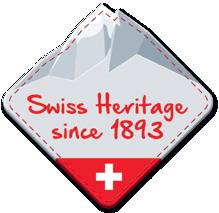
We do not sacrifice on the quality or robustness of our machines, we believe that a machine that lasts is the right investment to make in schools. Machines in classrooms need to be durable and user friendly but also suitable for all students from Year 7 through to Year 13. We still have the heart of the BERNINA machines that teachers, and students, have loved and trusted for decades
but with technology that is advanced enough to keep students engaged during class. Sewing is such an important skill for the future and students deserve the best tools to learn with.
Through our association with HETTANZ, BERNINA offer training to help your teachers get the most from their machines and we have a nationwide network of trained BERNINA Service Centres to ensure your machines are kept in the best condition and last.
The BERNINA 3 Series is small but powerful enough to stitch through your toughest materials and ideas!



T
o discuss your schools sewing needs, or for more information contact your local BERNINA Sewing Centre or call BERNINA NZ on 0800 701 818 or email info@bernina.co.nz

18 | Term 4, 2022 www.principalstoday.co.nz News | The Environment A
•
•
•
•
Fattastic websites starting from $997+GST




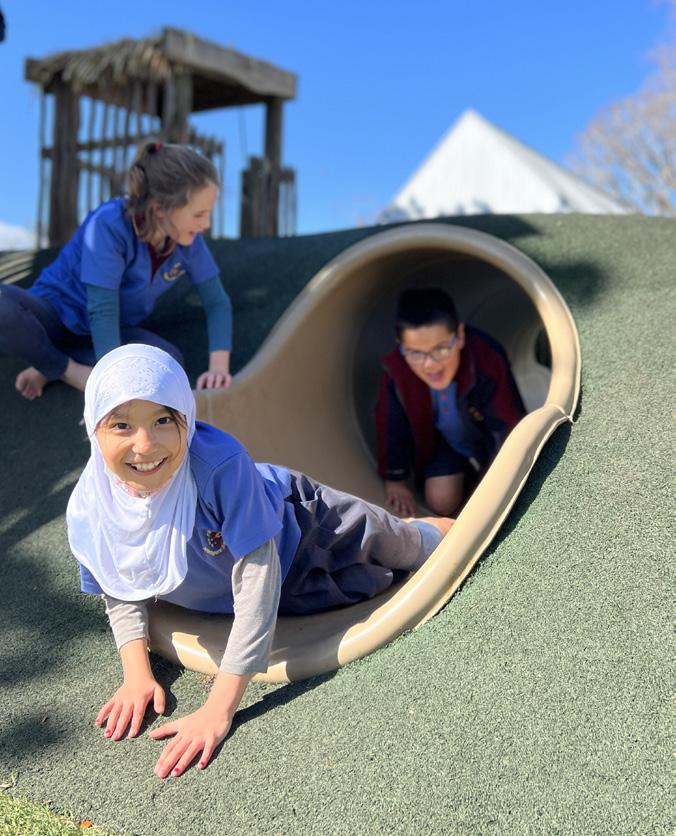


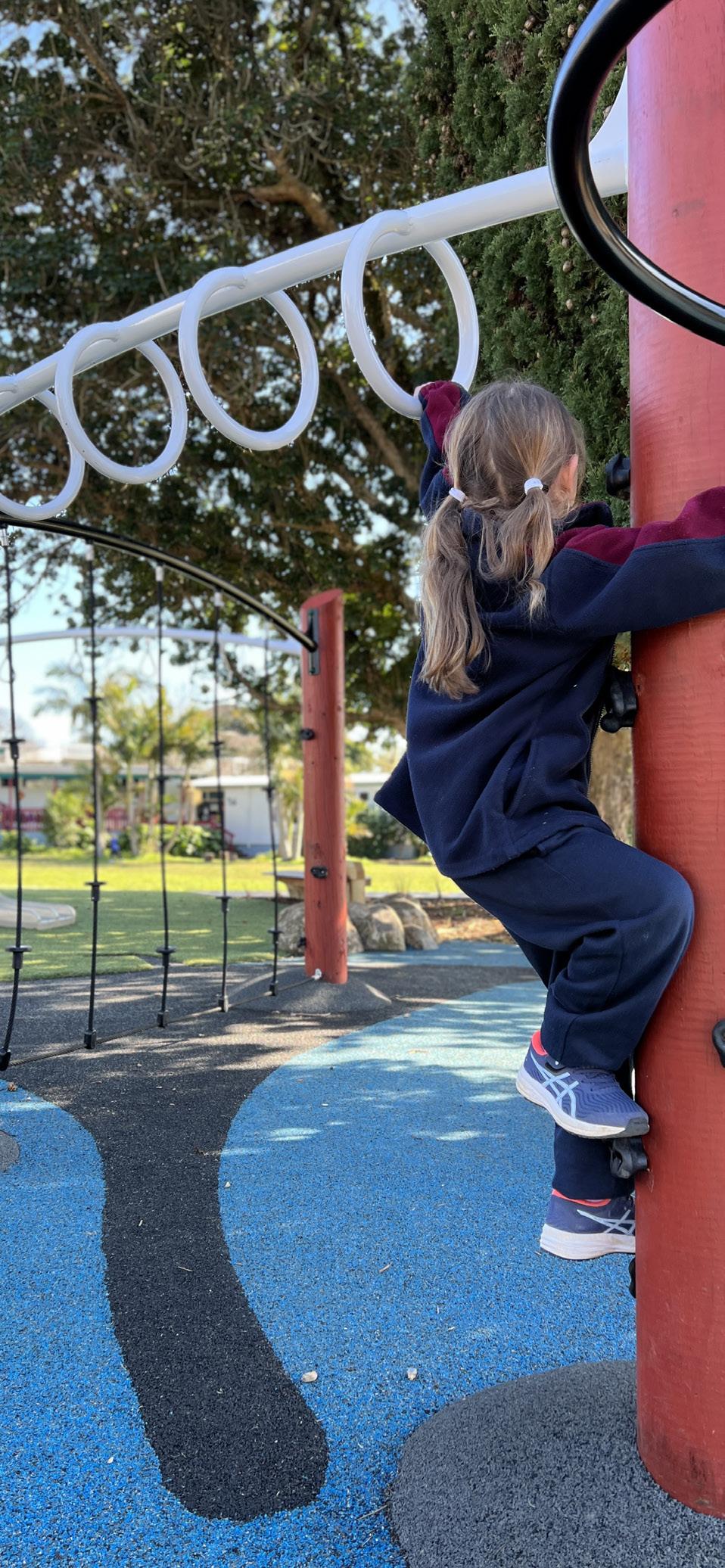
www.principalstoday.co.nz Term 4, 2022 | 19 0800 757 555 www.playscape.co.nz Leaders in the creation of unique, natural (and fun!) outdoor spaces. From playgrounds to outdoor learning environments, we create magic nationwide. We Design and Build Outdoor spaces that tell your school’s story EARLY CHILDHOOD, SCHOOLS & PUBLIC NEED A NEW website FOR YOUR SCHOOL? enquiries@fatweb.co.nz | 0800 FATWEB | www.fatweb.co.nz
Simply email enquiries@fatweb.co.nz your domain / website address, and we’ll send you a comprehensive audit of your current school website. And if you’d like to chew the fat after, we’re here to help. 1. We can write all the content for you and load it 2. We have made over 2000 websites, we know what we’re doing 3. People tell us our websites are the easiest to use, if you want to change any of the content, photos etc.
A school steeped in history celebrates 150 years
By Timmi Aplin-Barrett

From traditions and treasures, proud academic achievements to long serving staff and students, the school will celebrate in style this Labour weekend.
Spreydon School Tumuaki, Andrea Stewart, says they’ve got plenty of events planned. “Our whole school is stepping back in time, as part of the 150th year celebrations,” she says.
Spreydon School, though virtually unaffected by the devastating 2011 earthquakes, was relocated in 2018 as a result of the Ministry of Education’s Christchurch Schools Rebuild Programme.
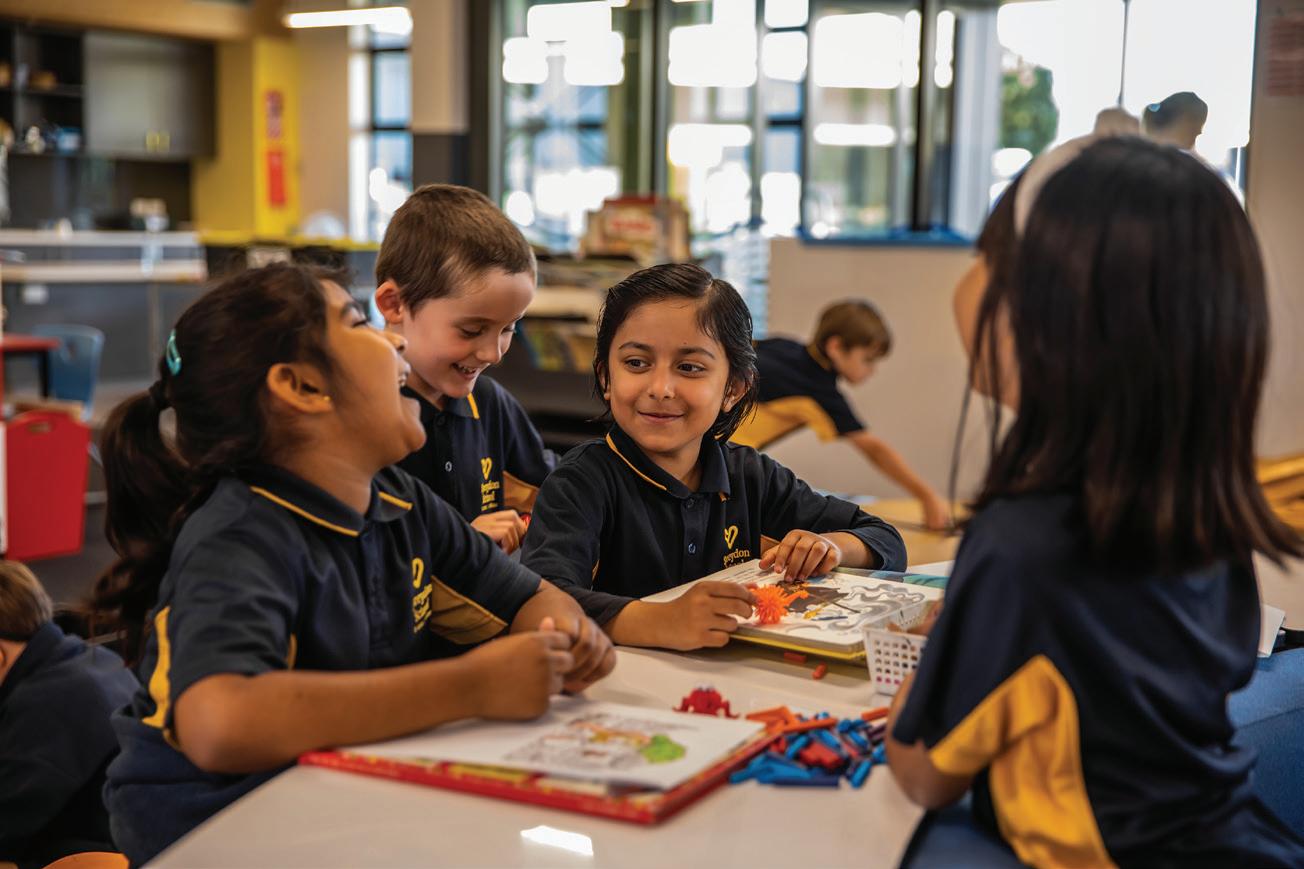








Here, they got a purpose-built site which ensured Spreydon school was a school of the future.
Andrea says it’s been four years since the move and students from Year 1 to Year 4 don’t know anything other than their new learning environment”.
“We’ve got a new generation of tamariki who haven’t known schooling any other way,” Andrea says.
“It’s hard to look back in time when we are in new buildings, we’re planning to step back in time as part of our learning about our school and local history.”
Spreydon School might look like a brand new and shiny school, but
with decades of history behind them, they’re insistent on remembering the past.
“We’re having a school dress up day which is ‘a decade in time’ so tamariki can dress up in a moment of time from 1872 to our present day,” Andrea says. “We are hopeful our school community will also get involved.”
Andrea says this means that tamariki and whānau can have conversations about parents and grandparents schooling and really open up the narrative on how schooling used to be.
“It’s a great way to link challenges and opportunities from the past to the present day.”

There are many people associated with the school now that were also past pupils. Andrea says they’ve got an office staff member and a teacher who both used to be past pupils.
“We’ve also got people who are active board members who were present at the 125th reunion in 1997.”

Another link from the past to the present are six large verandah posts from the original site which have been salvaged.
“They’re going to be restored and a new home will be found amongst our new landscape,” Andrea says.

20 | Term 4, 2022 www.principalstoday.co.nz In Profile | Spreydon School Quality. Service. Reputation. Joinery for the Education sector –made specifically to suit your space 130 Hayton Road, Wigram, Christchurch Phone: (03) 348-9223 Email: martin@aspenjoinery.co.nz www.aspenjoinery.co.nz
Formed in 1872, Spreydon School has so much to offer when it comes to history and tradition.
“Over the decades, they’ve been painted and repainted but they will be stripped back to their original wood
carved.”
Three of the six posts will contain the names of the three schools involved in the Spreydon School – Upper Heathcote Primary School, Spreydon School and Te Kura o Mōkihi. The remaining posts, Andrea says, will likely contain the maunga and awa reflective of the school’s location.

They’re hoping that by doing this, they’re creating a timeless piece for future tamariki and kaiako to look upon.
“We don’t want to place words, phrases or values that may change over time,” Andrea says.
The other events celebrating 150 years are spread out over the weekend and on Saturday, there will be decade style photos at the original school site.
There’ll be a marquee for gathering and Andrea says they’re going to put the school flag and original school bell back in their rightful places for the day.
“The old school bell frame and flag pole are still standing,” she says. “It is important to return these so that people will have something that they recognise and a central point to meet at and share stories.”
After this, everyone will head back to the current school site for an evening
of mixing and mingling. Andrea says there will be a jukebox and a centennial cake which will be cut using a historic sword.
The sword was gifted to the school back in 1932 by the Centennial Public Committee with this wish that the sword be used to cut any future celebratory cakes, Andrea says.

“This kind of tradition, along with the taonga such as the school gates made in 1983, the rolls of honour and school bell, all show how steeped in history our school is and how important it was to transition these to our new site.”
Andrea says it shows how their forebears were always thinking ahead and proud of the record of achievement and community spirit.
“Many of the traditions are ones that were able to be continued because
they were simplified but powerful in their message.
“We see this 150th celebration as a chance to welcome all our past pupils, staff and community to our new space and provide an opportunity to reconnect with one another,” she says.
“Celebrating 150 years at a new site presents some challenges but it also shows that the heart of our school is not defined by the land it is on but by the people who make the school we are all proud to be associated with.”
He aha te mea nui o te ao? He tangata he tangata he tangata.
Spreydon School

50 Hoon Hay Road Christchurch (03) 338 5033 www.spreydon.school.nz admin@spreydon.school.nz
Back to School
Online Packs bulk stationery

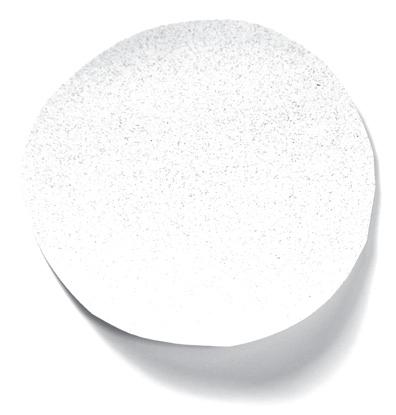



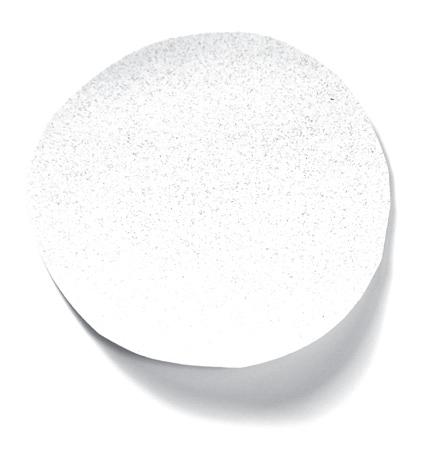


www.principalstoday.co.nz Term 4, 2022 | 21 In Profile | Spreydon School MODO FLOORING THE FLOORING EXPERTS Carpets | Carpet Tiles Floorboards | Vinyl | Tiles 0800 867 028 sales@modoflooring.co.nz modoflooring.co.nz NAME YEAR NAME YEAR NAME YEAR Student & Teacher packs we give back 5 good reasons 3 easy options brilliant service quality materials 29 Years Experience
Ziggy Hamish Izzy Pop Bounce Parents buy direct. Delivered to home. Delivered to school. Delivered to school.
before being
The old Spreydon School and Baths
A new school with a new name
By Timmi Aplin-Barrett
After 11 long years, the students and teachers of Banks Avenue School finally have a new school and new name.
Now known as Pareawa Banks Avenue, the school is getting a fresh start.
For 66 years, the school has been going strong and then, in the devastating 2011 earthquakes, was badly damaged. Pareawa Banks Avenue School principal, Toni Burnside, says she’d been working at a different school during that time and moved to Pareawa Banks Avenue in 2014.

“In 2012, when the Ministry of Education looked at restructuring the education system in Christchurch, some schools were shut, some were merged and some were either partially or fully rebuilt. I lost my job to a merge school,” Toni says.

“Banks Avenue was to be a rebuild school and when I took over in 2014, we all knew it was going to be rebuilt.”
Toni says everyone thought they were going to be in the new school by 2017. However, this wasn’t the case and it stretched out until 2022.
“The prime reason for that is that finding a location for a whole new school isn’t easy,” Toni explains. “It was going to be on a park but then locals wouldn’t have had anywhere to do sports. We couldn’t use our
old site because the land was damaged and it would have compromised the build.”
Eventually, it came out that Shirley Boys High School was moving to a new site and merging, which left their old site empty.
Even then, the process still took a long time. “We had to wait for them to leave and then for the old buildings to be demolished and the new one built,” Toni says.
Now though, the students and faculty of Pareawa Banks Avenue School are happily installed in their brand-new buildings. It’s a far cry from what they’ve been dealing with at the old location.
“Because we knew we were going to be rebuilt, there was no money put into the old school,” she says.
“So, the kids were in a really grotty environment. We literally had stuff duct taped together. Kids complained of the toilets smelling and not working but credit to them –they boxed on and put up with it.”
Toni says they got everything they wanted out of their new build. “The first thing the kids said was that it was warm and clean.”
They now boast a stunning hall fit for school discos, productions and community hire. Shirley Boys left behind their gymnasium so now the kids have a full gym to explore. There’s even a radio room like the one they had in the old school.

22 | Term 4, 2022 www.principalstoday.co.nz In Profile | Pareawa Banks Avenue School 0800 472 2369 03 344 6164 • Local, national & international moves • 100+ years of moving experience • Packing & unpacking service graceremovals.co.nz For all your school procurement needs Don’t hesitate to contact our dedicated Account Managers to discuss your requirements today! Email: twgbsalessupport@twgroup.co.nz | Phone: 0800 737 5223
But, that’s not all. Along with the new school came a new name. Toni says the name was a big process and took nearly a year to work through and get right.
“We worked with local iwi and consulted with families to find the name. Eventually, we were given the name “Pareawa” from iwi, which means “adorn the banks of the river”.
This talks about the plants on the riverside… but it’s more than that too – our children are coming through here and being adorned with the skills we give them.”
However, they wanted to honour the past and where they came from. The old school was located on Banks Avenue, so after much deliberation and discussion, they made the decision to merge their new name and their old name.
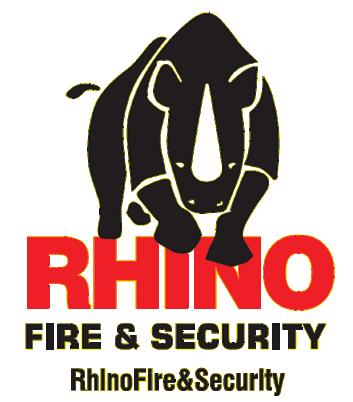
“It both shows our past and the cultural narrative. You can see the authenticity all throughout the school.”
Toni says the process was absolutely worth it. “All our learning pods are named after significant plants along the banks of the river. Of course, we had to redo all our branding: the manifestations on the glass windows, the hall mural and our school value pillars all reflect our cultural narrative,” she says.
The new school was opened first with a blessing and a cleansing from local iwi over the holidays and then a powhiri on the first Wednesday of term three. Christchurch’s mayor and the Minister for Education, Chris Hipkins, attended the event. Toni says during the blessing, they planted a memorial tree.
Now, Pareawa Banks Avenue School can forge ahead in their purposebuilt spaces. Toni says they’re working on collaborative teaching.
“We prototyped this at the old school but with the new spaces, it’s different,” she says.










“We’re taking the time to figure it all out and how to use the spaces to our advantage.”
It’s clear that this means so much to students, families and teachers. Toni says the long process was absolutely
worth it. “What a privilege it is as a leader and a principal to be in a new environment,” she says. “It took thousands of decisions to get here and, finally, here we are.”
Pareawa Banks Avenue School 57 Averill Street, Richmond Christchurch (03) 385 4163 tburnside@pareawabanksave. school.nz www.pareawabanksave.school.nz

www.principalstoday.co.nz Term 4, 2022 | 23 www.rhinof iresecurity.co.nz P. 03 982 5900 E. admin@rhinofiresecurity.co.nz Fire & Security - 24 Hours Service Security Systems Automatic Gates Access Control Camera Systems Fire Systems Intercoms
RHINO
FIRE SECURITY IS PROUD TO BE ABLE TO HELP PAREAWA BANKS AVE WITH THIS EXCITING NEW SCHOOL In Profile | Pareawa Banks Avenue School
“We worked with local iwi and consulted with families to find the name. Eventually, we were given the name “Pareawa” from iwi, which means “adorn the banks of the river.”
Opawa School’s history is big but they’re working towards an even bigger future. They work on a Māori proverb: Kia whakatōmuri te haere whakamua: I walk backwards into the future with my eyes fixed on my past.

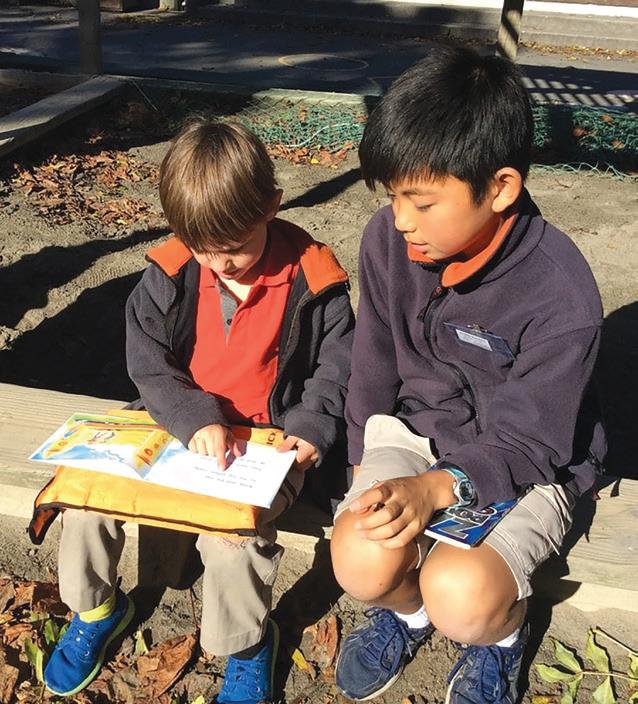


Historic school celebrates 150th jubilee
By Timmi Aplin-Barrett
Te Kura O Ōpāwaho/Opawa
School is a school rich in history. Opened under the name of Hillsborough School on the 22nd of July, 1872, the school had a roll of just 30 students.
In 1880, it became Opawa School and in 1927 moved from the original site on the corner of Garlands and Opawa Road, to where it resides now.
During Labour Weekend, the celebrations for the 150th Jubilee will take place.
Opawa School principal, Sally Ormandy, says they’ve got a great line-up of events to commemorate the special celebration.
“We’re having our community picnic on Friday night, so our current community can mix and mingle with those who have connections throughout the school’s history,” she says.
“We want people to come back and connect – it’s about connecting with one another and with our place.”
On the Saturday, Sally says they’ll have decade photos and some of the school will be open to look through and there will be displays of memorabilia and photos. This will be followed by speeches, performances by our Pasifika and Kapa Haka groups and cake cutting.
“Hopefully, we will have Joy Jarvis, the eldest living former student (91) to cut the cake.”
After the events at the school, the celebrations will move to local venue, Blue Smoke at the Tannery for an evening gathering.
Sally says one of the teachers will be the DJ. “We will also have a group of ex-students called the Nelson Loney Band who will perform a set for us. They named themselves after one of their teachers here.”
Not only is Opawa School rich in history, it is a school incredibly
connected to its community.


“We have school Jubilee committee members connected to almost every decade,” she says.
“From current students to ex-students and their kids and grandkids, we’ve got people who are connected throughout the history of our school.”
This means that there are always heaps of people to help out. “Garden City Rotary will do the barbeque, another group in our community will help with the morning tea, and our wider community, including our Home and School and `Whānau Group will help with other things.
“We’re a school for our community and we want our school to continue to be at the heart of our community.”
Sally says they have great resources at the school that the community does utilise and can continue to utilise.
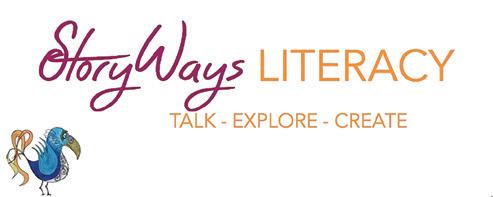
They’ve got a netball court size astro turf, artificial cricket pitch, state of the art basketball hoops on a full-size basketball court, skateboard ramps, school hall, an indoor pool and extensive grounds with
well-developed trees that are fantastic for climbing.
“We encourage our community to use our grounds and facilities out of hours,” she says.
The event has drawn the interest of many local council members, Ministry of Education dignitaries and guests such as Sir Kerry Burke.
Sally says they’ve also got representatives from the Mauger family coming along and keen to be involved.
Writing
24 | Term 4, 2022 www.principalstoday.co.nz In Profile | Opawa School Congratulations to Opawa School – 150 years! For all your lock and key security Home - Business - Vehicles Suppliers of quality Safes Electronic digital Locks Vehicle Transponder Keys 24hr Mobile Emergency Service Remotes for Cars, Alarms & Garage doors 170 Waterloo Rd, Hornby www.accesslocks.co.nzPHONE 0800 539 537 storywaysliteracy.co.nz storywaysliteracy@gmail.com “He mana tō te kupu” “Words have great power” Listening to stories can put the whole brain to work.
Reading ListeningSpeaking Hearing begins in utero and makes a rapid transition to listening soon after birth. It is never too early to talk to and share stories with a child. Evolution has wired our brains for storytelling. Reading and writing float on a sea of talk Britton 1970
“There has been, and will continue to be plenty of growth and development for the school, but also lots of core things that stay the same and will be really familiar to our past students and whanau.”
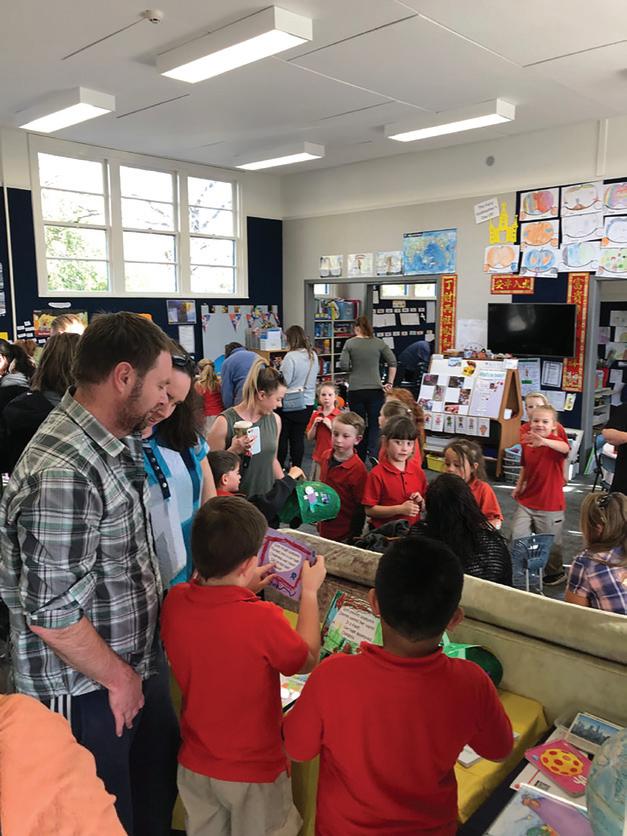

“Ivan Mauger (past pupil who is sadly deceased) was an international motorcycle speedway champion (multiple times), and his family will be displaying some of his bikes at the school for the celebrations.”
A special part of the celebrations was the rededication of the World War One and Two Honours Boards. Nationally awarded teacher and school history buff, Robyn Drummond, says the boards are a real slice of history.

“The boards were from the original brick building and had been stored away. The WWII board had been stored under the floorboards and as time went by, people forgot about it.
“During renovations it was uncovered again and had been under there for about 40 years. Last year, I thought, somebody needs to do something about that.”
The boards were riddled with bora and after some care and investigation, Robyn found some interesting names on the back of the WWI panel.
“It read that it had been executed and presented by Beatrice Tish from Huddersfield, England in 1919. I did a bit of research and found that her grandson lives in Wellington,” Robyn says. She also found a connection for every family from the WWII board.

In Robyn’s other investigations, she came across the history of the school bell.
“In 1932, an old student drowned while saving someone else’s life. So, the young man’s father and mother bought the land the old school was on and placed a playground there in his memory.
“Then, in 1937, one of the fathers’ ships met the end of its life and was stripped of all its things. He donated the bell to the school to use.
“We’ve now found that bell but it was missing its clanger so we’re getting that made.”
You can register your interest online, or contact the school office to register and attend the celebrations.
Sally says they plan on the weekend being a real celebration of how far they’ve come.

“There has been, and will continue to be plenty of growth and development for the school, but also lots of core things that stay the same and will be really familiar to our past students and whānau,” she says.

“We are valuing those who are here now and those who have come before us.”
Opawa School 30 Ford Road

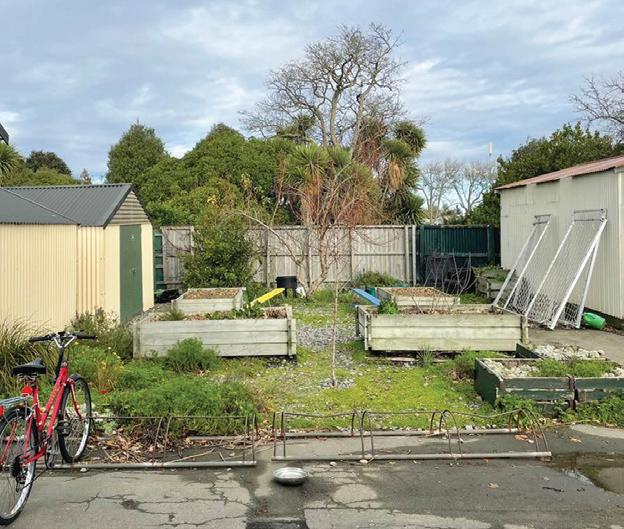
Opawa, Christchurch (03) 332 6374

www.opawa.school.nz
admin@opawa.schoo.nz
www.principalstoday.co.nz Term 4, 2022 | 25 Mud Free: Hassle Free: Maintenance Free: Long term lawn solution Readylawns Life series artificial turf range is the most realistic turf available in NZ. Whether you need a pristine landscape area, all-weather learning space or recreation zone we have the product to suit. Our quality range of artificial turf is not only easy to maintain, it is a safe, anti-bacterial, eco-friendly product that requires no mowing, no fertilizers and no watering.BEFORE AFTER www.readylawn.co.nzCONTACT US FOR YOUR FREE CONSULTATION AND QUOTE In Profile | Opawa School
The original school and the headmaster's cottage
Kiwi kids create digital pet-care resource that’s inspiring the world
welfare
New Zealand school students for other children
The hit resource, a Minecraft world, created as a series of learning experiences nested on a giant SPCA paw print logo, has proved so popular it’s receiving enquiries from the SPCA’s sister organisations in Australia and the UK.

Minecraft: Education Edition is used by millions of school students around the world to make learning more immersive in a game-based environment.
Year 5 and 6 students from Elmwood Normal School in Merivale, Christchurch created a virtual world using Minecraft that features rooms such as a patio, which students can transform into a “catio” fit for a cat, based on SPCA’s own learning materials.

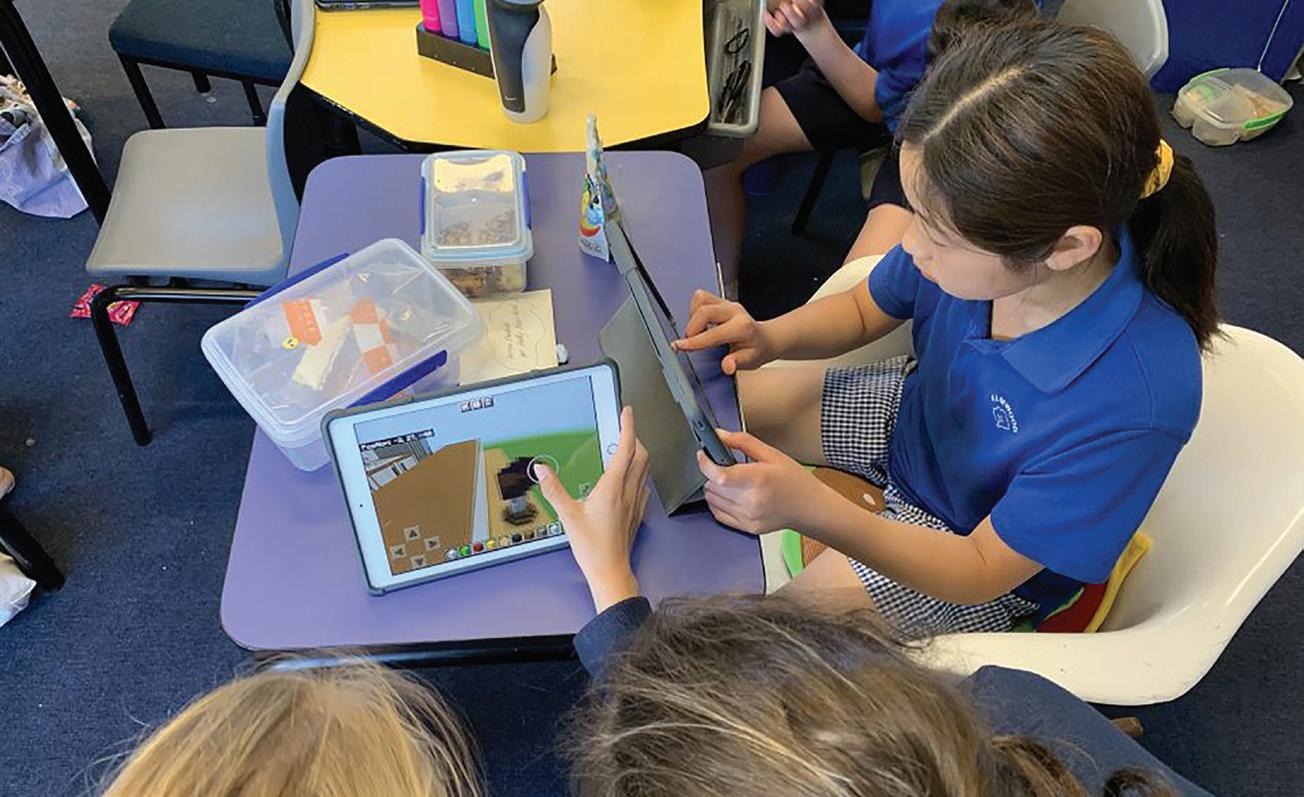

Microsoft partner ImpactED helped the Elmwood students build the resource to SPCA’s requirements.

Called “Care & Create” lessons on animal welfare and exciting interactive

opportunities to build pet-friendly environments are combined in a single powerful tool for classrooms to use.
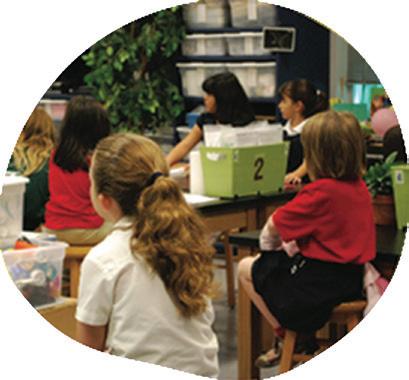
The programme is designed to teach children what animals need to be properly cared for, and in the process, they develop the important life skills of empathy, communication and digital literacy.
It's the first time an SPCA resource has been built by students, for students.
“What’s truly amazing is that a global company [Microsoft] and a large charitable organisation [SPCA] have entrusted a group of nine to eleven-year-old children to meet the requirements of the brief and put the responsibility of creating this resource in their hands,” says Wilj Dekkers from ImpactED.
It’s been so popular with students, SPCA organisations around the world are now keen to roll out the programme too.
“Minecraft is a really cool, unique platform and tool for education – the resources are better than we could have ever imagined.
“Excitingly, they have also caught the attention of other SPCAs' including Australia and the UK, who are asking when they can get the resource there,” says SPCA education engagement officer Caroline Dowsett.
Jo Mottram, a teacher at Elmwood School, says she sees opportunities for many other schools here and overseas to use technologies like Minecraft to create inspiring lessons.
“I see what we’ve achieved as a way to inspire other teachers to use this tool and show them that you don’t

have to be an expert in Minecraft for your children to be experiencing these amazing lesson plans.”
Microsoft Education Industry executive, Lydia Kronawetter agrees.
“It's great to see kids helping kids and developing key competencies along the way.

“These tamariki have not only demonstrated the impressive digital skills they’ve learned, but have given back to their community as well.
“And because this technology is used by students around the world, it has the potential to go global, which is hugely exciting,” she said.
Schools across Aotearoa can now download the virtual rooms for their students to pet-proof their homes via the SPCA teacher portal. Whilst the resource is free for everyone, each download contributes valuable analytics to support SPCA funding. Students can also download this resource, and many more, via the Microsoft: Education Edition website.
Minecraft Education Edition licensing is free to state, state-integrated and kura via Microsoft’s agreement with The Ministry of Education.
26 | Term 4, 2022 www.principalstoday.co.nz News | Technology Incentive Tokens and Token Collection Boxes 48mm Diameter Tokens | Perspex Collection Boxes | Made in NZ Email. sales@exquisiteproducts.co.nz www.exquisiteproducts.co.nz Order Now School Reward Incentive Programmes PB4L Positive Behaviour for Learning Schoolwide Framework Safe for all ages Easy ordering
An SPCA animal
resource created by
is set to be used around the globe.
“These tamariki have not only demonstrated the impressive digital skills they’ve learned, but have given back to their community as well."
Better connections
Upgrade gives remote Chatham Islands schools more reliable and faster broadband
In recent months, kaiako and ākonga at three of New Zealand’s most remote schools on the Chatham Islands were connected to fast, reliable 4G broadband for the very first time.


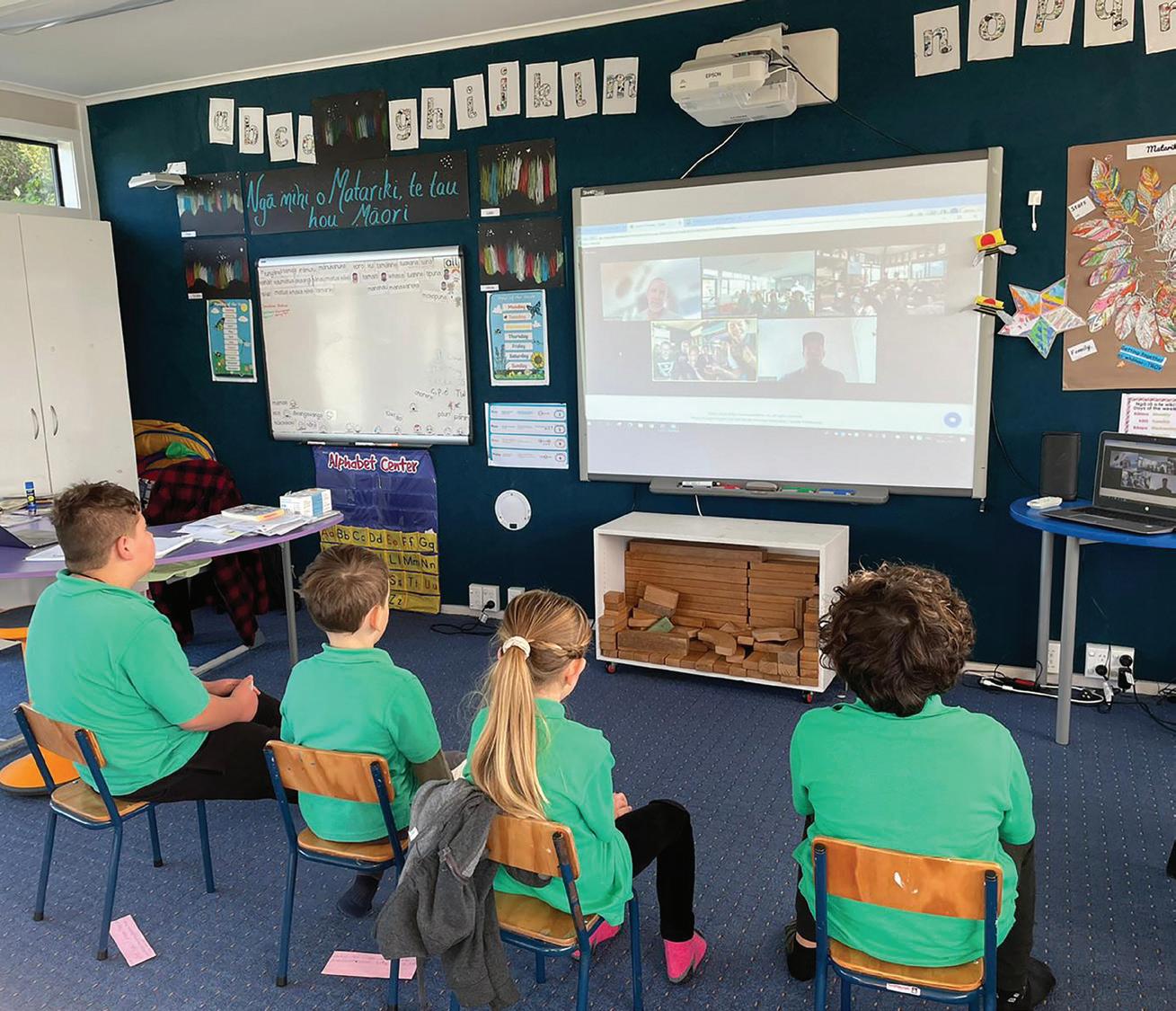

This was thanks to a partnership company, Network for Learning, internet service provider, Wireless Nation, and the New Zealand Government’s Rural Broadband Initiative.
Although the three Chatham Islands schools (Kaingaroa School, Pitt Island School and Te One School) had internet access before the network was upgraded, connections were much slower than today and unreliable.
The wild, wet and windy weather and remote locations also meant kaiako and ākonga would experience frequent frustrating outages.
Kaingaroa School’s Philip Graydon says their internet service is now three times faster than before, due to the upgrade.
“It’s now reliable, especially when our students are on Mathletics.” he says. “Previously, about 30 percent of Zoom calls would fail and drop out. Since the installation, no Zoom or Teams calls have failed.”
N4L, which provides faster, safer internet for Aotearoa New Zealand’s schools and kura, connected the schools to the new 4G network, which was built by the Government’s Rural Connectivity Group (RCG).
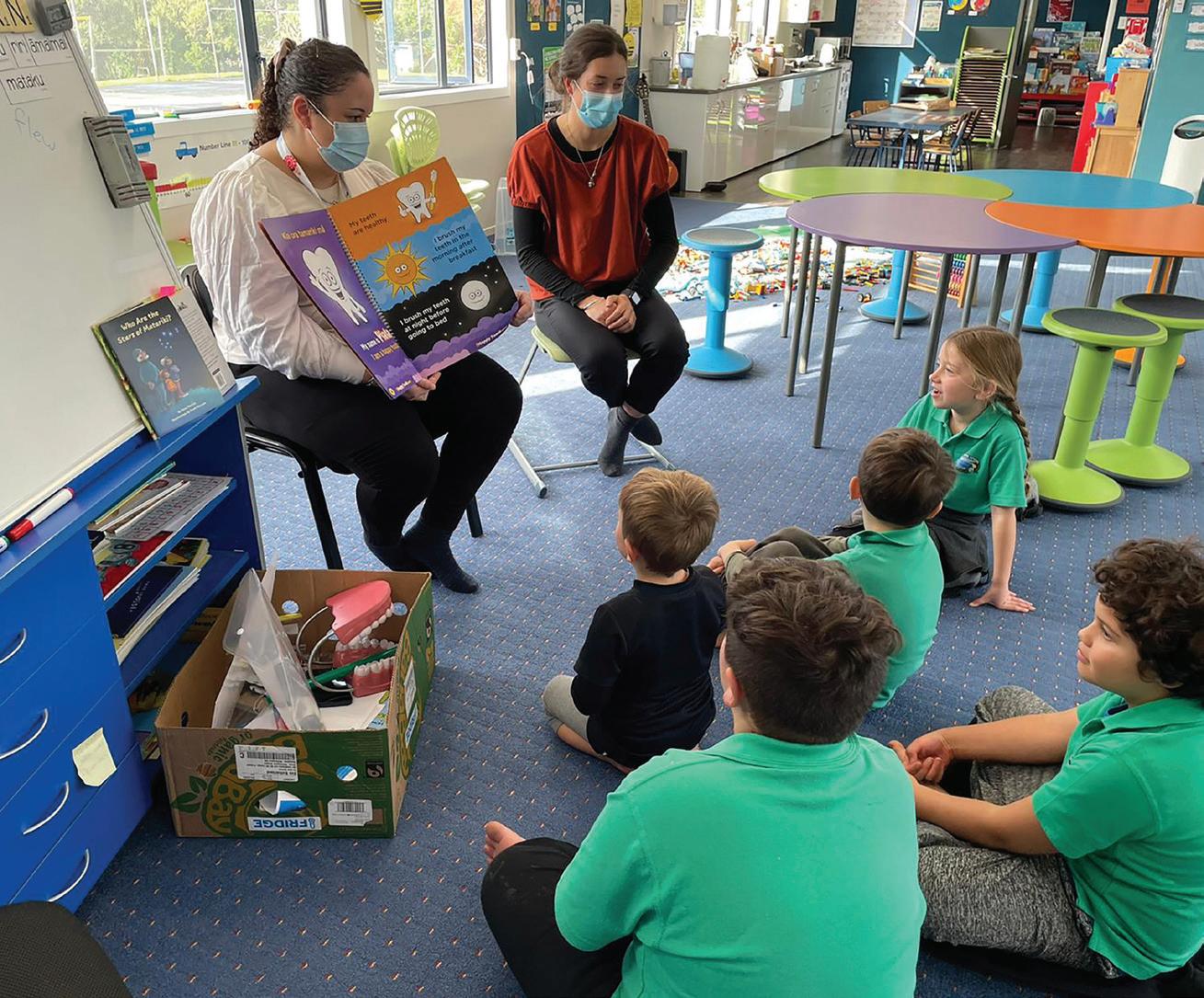
Five new cell towers, built by the RCG, were designed to cope with the islands’ windswept nature and salty air, while a satellite dish connects the island network to a telecommunications exchange in Wellington.
N4L has built and now operates and secures Aotearoa New Zealand’s largest managed network, providing connectivity and cybersecurity for 2,450+ schools and kura and more than 855,000 ākonga and kaiako.
“One of our priorities at N4L is ensuring all schools and kura across the country have access to a network that’s fit for purpose,” says N4L CEO, Larrie Moore.
“Schools’ terrain and remoteness can make this a challenge. The new network offers more learning opportunities and experiences to ākonga, giving them brighter futures.”
Rob Campbell, group manager of Business Services Te Puna Hanganga Matihiko says, “A key objective for the Ministry of Education is to reduce barriers to education, and continually improving the Managed Network service is an essential component to meet this in an increasingly digital world.
“This improved service for some of New Zealand’s most geographically remote schools means better connectivity for the learners and their local communities.
“The Ministry is very pleased with what the work N4L and Wireless Nation have done to enhance connectivity for schools on the Chatham Islands.”
“This improved service for some of New Zealand’s most geographically remote schools means better connectivity for the learners and their local communities.
Technology | Smart Education



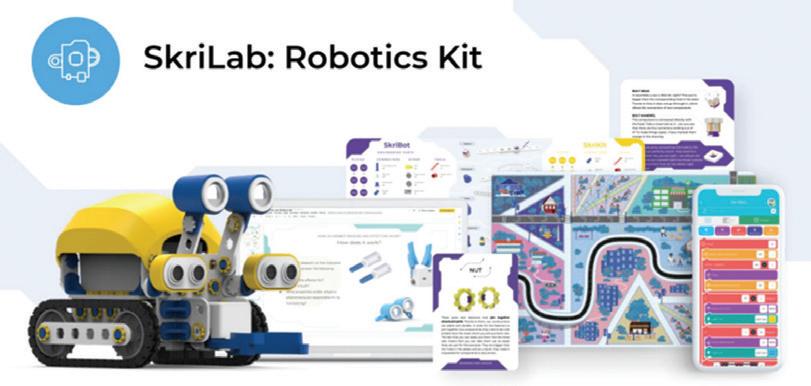


Combining STEM hardware with full lesson plans & online training. A Full Turnkey STEM Solution. Join the group of Modern Educators. An innovative bridge between teaching and creativity in an immersive environment. SkriLab Engineering Kit Robotics Kit 3D Print Kit 0508 467 483 sales@conbrio-it.com ww.classtech.co.nz Education. Today.
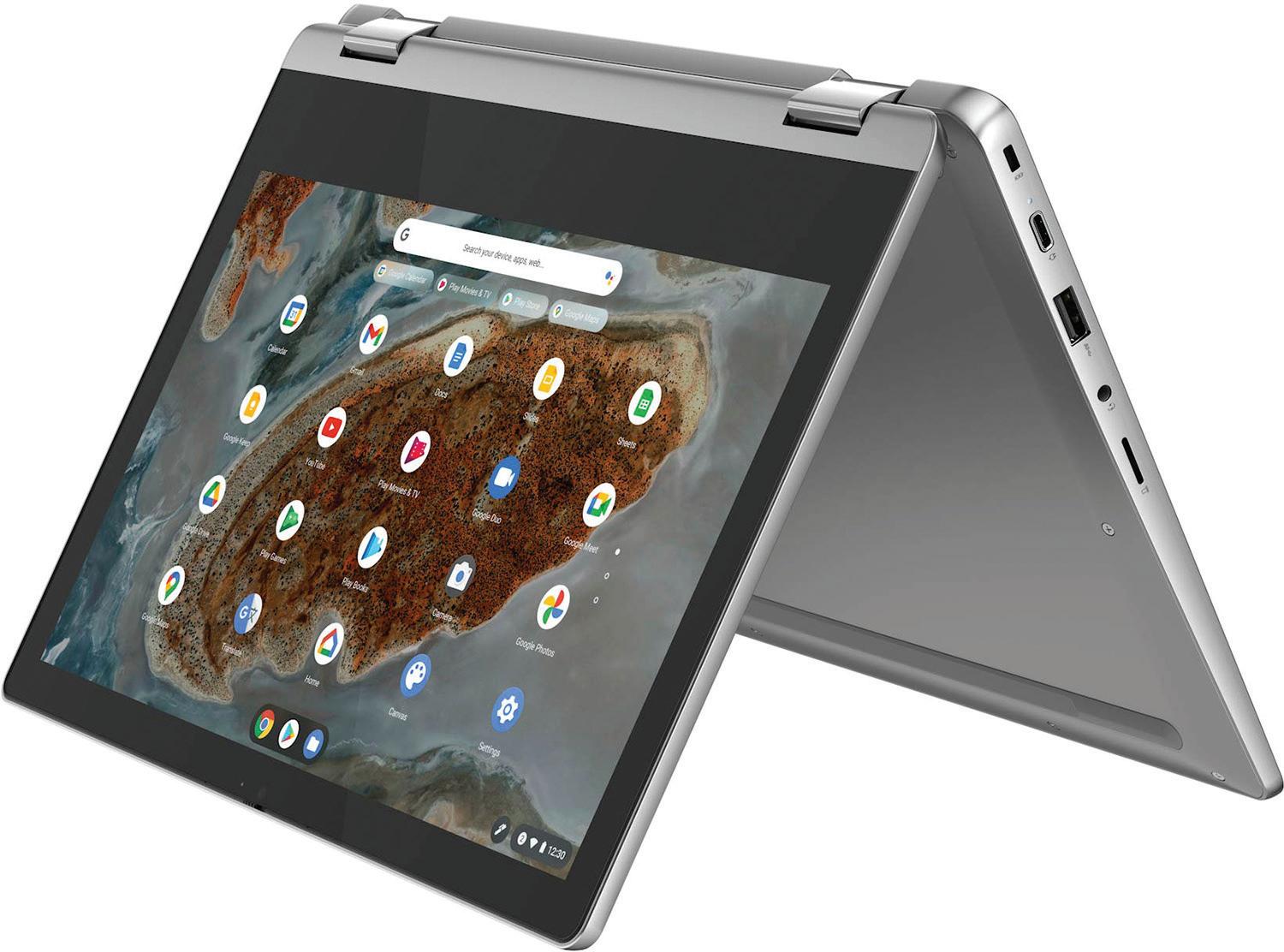



Brand New $270 + GST from Phone. 0508 467 483 Email. sales@conbrio-it.com www.classtech.co.nz CHROMEBOOKS
U-Skills 3+2
3+2 students have the chance to gain a tertiary qualification and in some cases start their apprenticeship while still at school. You will spend 3 days-a-week at UCOL and 2 days-a-week at school as you work towards a New Zealand Certificate in a particular career pathway
Ben Duck
U-Skills & Automotive Graduate
Juggling UCOL studies, secondary school classes, and work experience requires great commitment, but it has paid off for young automotive apprentice Ben Duck.
“I’ve always had an interest in cars. My dad and all of his mates were all into cars, and dad used to race out at the Manfeild club days. So, working as a mechanic was always something I had at the back of my mind,” says Ben.
Ben completed UCOL’s U-Skills Academy Automotive programme while he was in Year 12 at Freyberg High School. This one-day-a-week programme gives secondary school students a taste of automotive engineering while they work towards NCEA credits.
The following year, Ben enrolled in the New Zealand Certificate in Automotive Engineering Level 3 as part of the U-Skills 3+2 programme. Normally 3+2 students spend three days a week UCOL | Te Pūkenga and two at school, but Ben arranged to spend one of his school days doing work experience at a local car dealership.
Learners who complete the New Zealand Certificate in Automotive Engineering Level 3 at UCOL benefit by having completed the first year of their apprenticeship and reducing the time to become fully qualified.
Ben did a stint of work experience at Manawatū Toyota, before moving onto McVerry Crawford Motor Group. He says he got the best of both worlds by developing his skills in the workshops at UCOL and McVerry Crawford.

“The UCOL programmes were helpful for learning the tools and working on a range of vehicles. There are things I do at work now that I learnt from UCOL, like changing tyres. It really surprised some of the guys at work that I already knew how to do that.”
“Doing work experience while studying helps because you get to know the people in the workshop, how they work, and how they like things done. Workshops have time schedules they need to stick to, and that kind of thing can be overwhelming if you come into a job without any work experience.”
As Ben was coming to the end of his UCOL studies, McVerry Crawford offered him an apprenticeship. Ben was delighted, as landing an apprenticeship had been a big motivator for doing work experience.
“I’m really enjoying my apprenticeship, especially now that I’ve been there for a while and I’ve got into the flow of things. I’m now doing some of the bigger jobs, which is nice because it takes me out of my comfort zone. I’m getting into the engine bay, taking apart components, and putting them back together.”
For Ben, the best thing about his job is that he is always learning something new and applying it.
“It’s quite cool to be able to spot and diagnose problems yourself. It’s a great feeling when you can say, ‘I know what the problem is, and I know how to fix it’.”
Enrol Now!
UCOL 3+2 Study Options
Primary Industries
New Zealand Certificate in Primary Industry Operational Skills
New Zealand Certificate in Apiculture
Services Industries
New Zealand Certificate in Business (Administration and Technology)
New Zealand Certificate in Business (Administration and Technology)
New Zealand Certificate in Beauty Therapy
New Zealand Certificate in Food and Beverage Service
Social and Community Services
New Zealand Certificate in Exercise 4
New Zealand Certificate in Early Childhood Education and Care
New Zealand Certificate in Early Childhood Education and Care
Manufacturing and Technology
New Zealand Certificate in Mechanical Engineering 3
New Zealand Certificate in Automotive Engineering
New Zealand Certificate in Collision Repair and Automotive Refinishing
Construction and Infrastructure
New Zealand Certificate in Construction Trade Skills (Carpentry)
New Zealand Certificate in Refrigeration and Air Conditioning (Trade Assistant)
New Zealand Certificate in Construction Trade Skills (Allied Trades)
New Zealand Certificate in Plumbing, Gasfitting and Drainlaying (Pre-Apprenticeship)
Designed for
Students who are looking to gain hands on experience and begin the transition from school to tertiary study.
Benefits
Gain a FREE relevant tertiary qualification while still at school. Build on previous achievement and experience at NCEA and/or U-Skills Trades Academy. Still be enrolled at school.
Where does 3 + 2 lead?
Higher level of study (i.e. Level 4 and above), apprenticeships or employment.
To apply
Students and schools follow the usual U-Skills application process however there is a specific 3 + 2 application form. For further information please email u-skills@ucol.ac.nz
This advertisemtnet is intended as a guide only. Programme details are subject to change. For more information or most up-to-date information, contact: u-skills@ucol.ac.nz or visit ucol.ac.nz/u-skills
UCOL.AC.NZ
Level Manawatū Whanganui Wairarapa Horowhenua
3
3
3
4
4
3
3
4
3
3
3
3
3
3
Getting events off the ground

Affording everything a school would like on its operations budget
rarely possible.
why schools
ways to afford
There are numerous ways schools can fundraise for events, other than the humble chocolate bar. Firstly, there’s the traditional mufti day, which could be given a twist.

Students (and teachers) could get dressed up as animals for the SPCA, for example, or as superheroes. Mufti day could become a Wild Shirt Day or a Wacky Tie Day. Sometimes a teacher will offer to ‘shave their lid for a kid’ – go bald to raise money for a child cancer charity.

Then there’s food. Sausage sizzles, bake-offs and school fairs are commonplace but good fun. Getting active can run alongside this – fun runs, walk-a-thons, skipping contests, bike rides or a touch rugby game gets the heart racing in an enjoyable way.
Competitions can also be a fun way to raise money. Musical children can play guitar hero, singstar, or schools can hold a talent quest or a NZ Idol
to
competition. Children could also perform a play, or a series of skits from each class or year group.
Local businesses are also passionate about supporting schools and other charities, and could be persuaded to give products for a raffle. They might also donate equipment such as face paint for a school fair or sponsor a team or event.
There are also car washes, trivia nights, book fairs, carol singing, jumble sales, bingo and much more.
Here are a few ideas to help you promote your school fundraiser and get the word out throughout the local area.
Focus on word of mouth
No one is ever going to know your school is holding a fundraiser unless you let them know, so share a flyer for the event to friends, work colleagues and family to let them know and to see if they can support.
Post flyers or posters throughout the local area
In most communities, there are noticeboards outside local supermarkets and in community spaces that allow for posters or flyers to be shown promoting upcoming community events.
Promote events on social media
You would be surprised how much attention you can get via digital
mediums especially when it comes to platforms such as Facebook and Instagram.
Post details on community websites
There is a swag of community websites that share information on your fundraisers. Have a quick search and you will be able to find websites such as Eventfinda that list community events for free.
Chat about it on your local radio station
If there is a member of your fundraising committee that is a great public speaker, you can contact local radio stations to see if you can promote your event via a chat with the local radio announcers. Ensure your info is short, sharp and to the point, so it’s easily converted to a radio announcement.
Create a media release and send it to local media outlets
Whether you want your fundraising event promoted in the print news, local parent networks or even in local parents’ magazine, you will need to present the information in a way that is easily transferable to media outlets and this means a media release.
Working Space | Fundraising Sell ice-creams anywhere. Purchase at wholesale and sell at retail. FREE TO USE Trailers & Carts! For more info www.tiptop.co.nz/fundraising For details & to book tiptopfundraising @ brandspec.co.nz or call 0800 66 0013
is
That’s
turn
fundraising to find
camps, field trips and sometimes even to make ends meet.
YOUR ADVENTURE BEGINS here#skills4life




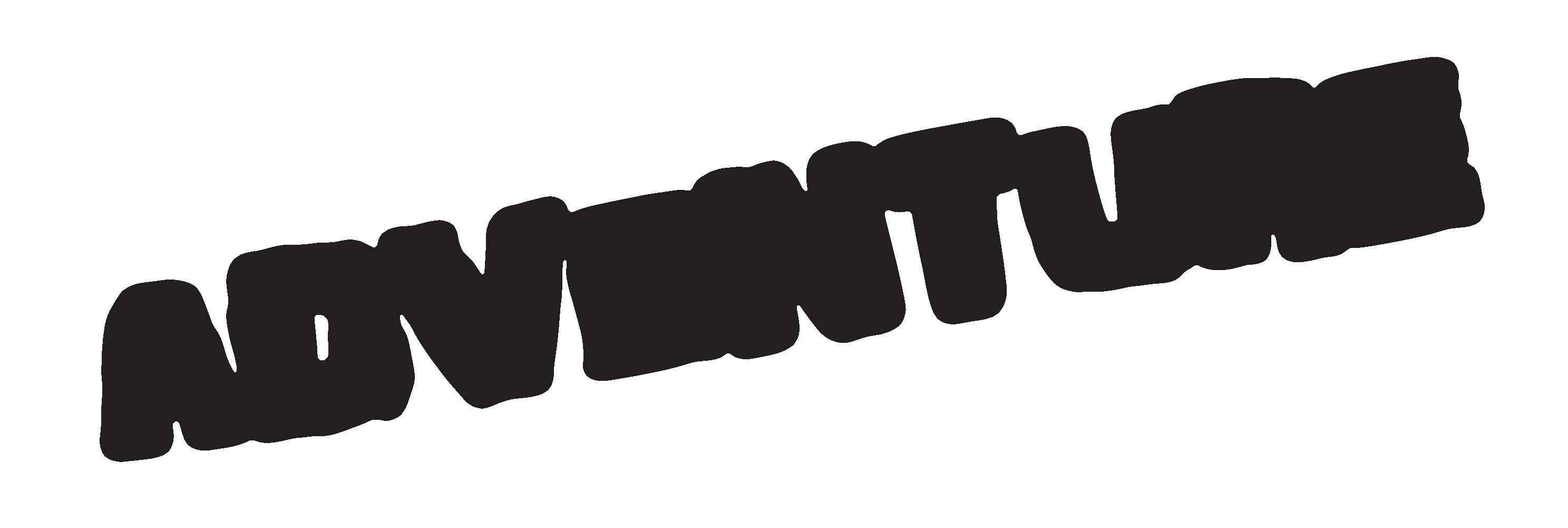





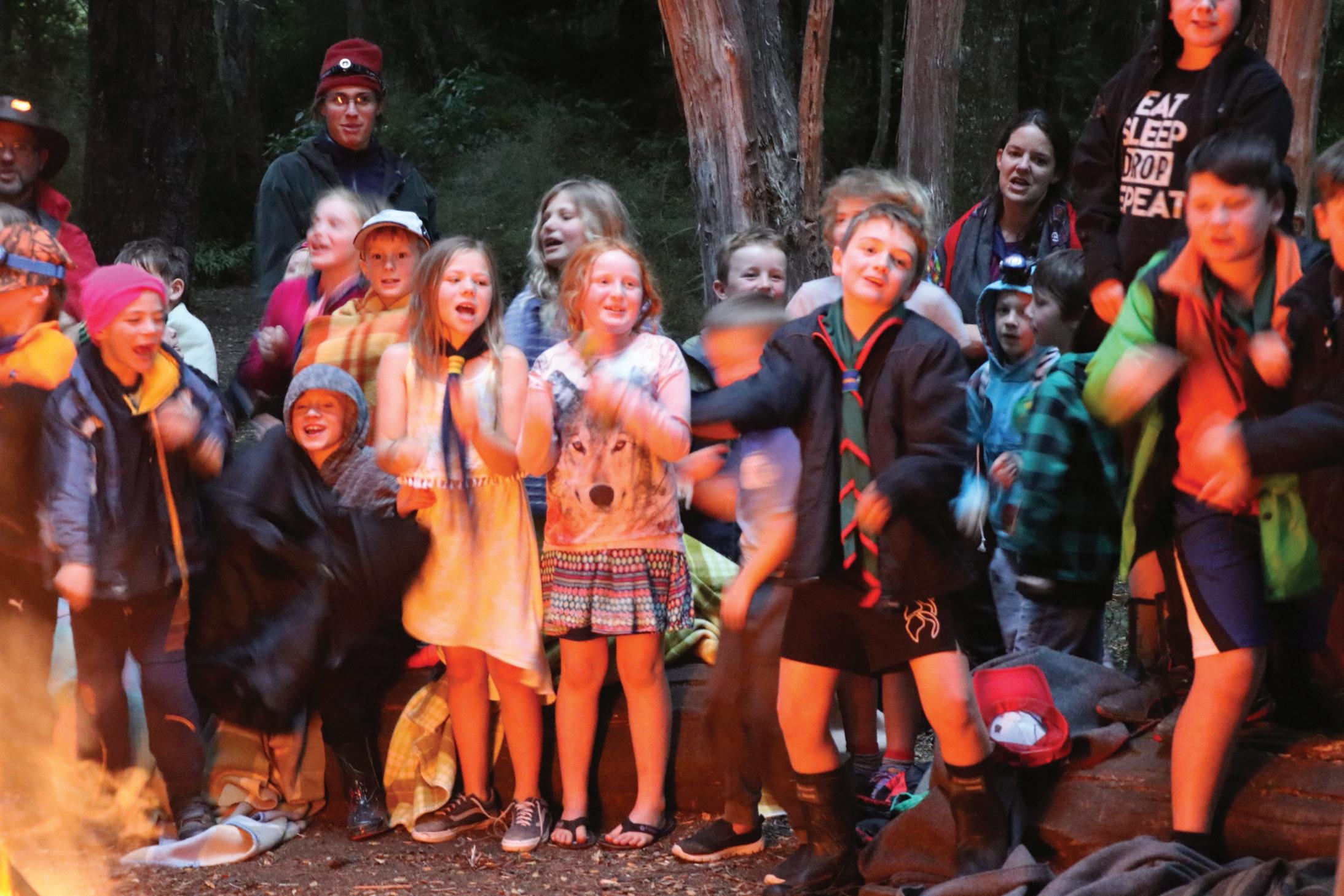
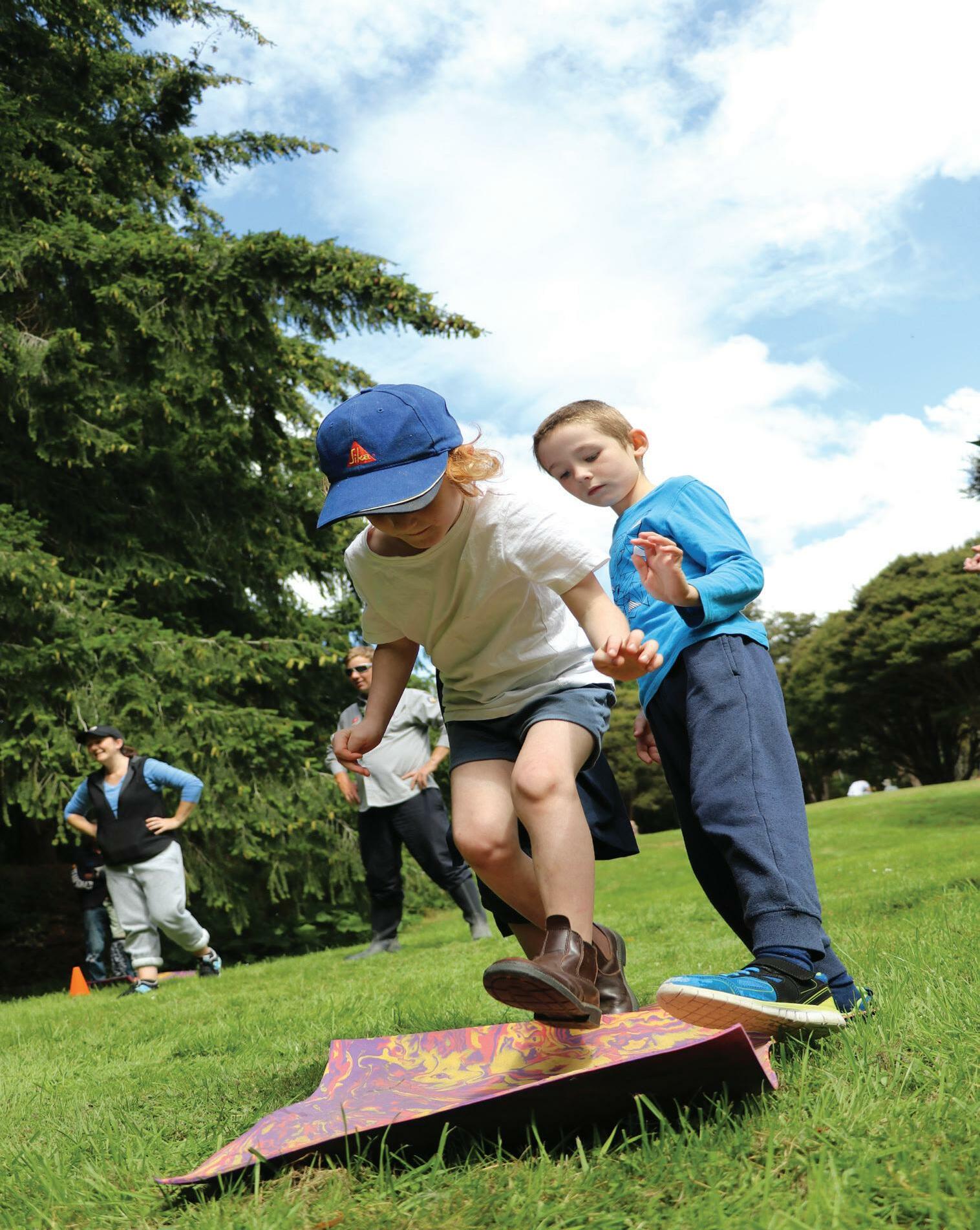



Navigating energy efficient options can be confusing, especially if you’re not familiar with what’s available like solar panels. However, solar panel installation is a long-term investment that deserves much forethought.


Solar power can be accessed from anywhere in New Zealand through the use of solar panels.
According to Gen Less, solar panels are made up of semi-conducting, electron containing materials like silicon. The panels are positioned in a way so that photons from the sun cause the electrons in the solar panel to generate an electric current.
Even though everyone has the potential to harness energy from the sun, different regions and panel orientations help determine the amount of electricity solar panels generate. In addition to your school’s location, there are other aspects to consider before pursuing solar panel installation.
SOAKING IT ALL IN
Before installing solar panels at your school, the Ministry of Education suggests that schools make other efforts to reduce energy use like improving building insulation, using energy efficient lights and appliances, and practicing energy efficiency initiatives.
The Ministry suggests this because it finds that making these efforts is more cost-effective than solar panel installation.
Even if a school has made previous efforts to increase its overall energy efficiency, there are other considerations to be made.
Pondering solar power
With the Government’s efforts to make the public sector carbon neutral by 2025, many can’t help but feel a sense of urgency to do their part.
Gen Less lists the pros and cons of solar panel installation in residential homes; some of the benefits include the ability to sell excess electricity to a retailer, function on cloudy days, and to charge big power users like hot water cylinders and electric vehicles.
On the other hand, Gen Less balances the pros with potential drawbacks to consider, like the fact that solar panels produce less energy at different parts of the day and year, retailers buy electricity back at lower rates than they sell it, solar panels generate less power as they degrade, and the inverter accompanying solar panels often needs replacing before the panels do.
In 2020, the Government announced that the public sector would become carbon neutral by 2025. The following April, it was announced that 36 schools would receive financial support from the State Sector Decarbonisation Fund to make clean energy upgrades – this is in addition to the $55 million allocated to replace coal boilers in 90 schools.
Although these pros and cons are applied to residential homes, there is some crossover when applied to school buildings.
For example, another pro listed is that solar panels best service energy users in the day.
While many homes are dormant in the day, schools are busy with a variety of activities and can use the energy generated by solar panels during the day.
The Ministry of Education requires solar panels to be installed by Sustainable Electricity Association of New Zealand (SEANZ) members. The Ministry’s reasoning behind this is to ensure solar panel installation is compliant with all standards and requirements, including roofing product warranties and the Ministry’s weathertightness and durability requirements.
Ultimately, the decision to install solar panels should be made on a case-bycase basis because there are so many factors to take into account. With that said, each school’s journey to energy efficiency and sustainability will vary and differ from school to school.
TAKING IT HOME
It’s one thing to create an energy efficient learning environment for students while they’re at school, but it’s another thing to instil energy efficient practices into students.
When students learn how to best use energy, their families, the community and future generations benefit from it.
There are a million ways to teach students of all ages about energy efficiency and sustainability. For instance, when students are learning about photosynthesis, students can also learn how solar panels work and draw on the similarities and differences between both processes.
High school students can use EECA’s solar tool to determine whether their home is suitable for solar panels.
When using the tool, students will need to input their home address, the amount of electricity their household uses in a month and the price their caregivers pay for the electricity used. This exercise can easily be made into individual projects or a class activity.
Integrating activities on energy efficiency and sustainability into lesson plans gives students the opportunity to think about ‘big picture’ ideas and to take those ideas with them when they go home or when they eventually leave school.
34 | Term 4, 2022 www.principalstoday.co.nz26 | Term 3, 2021 www.principalstoday.co.nz Sustainability | Energy
SOLAR
The programme consists of five main components to ensure there is a tailored solution for every school
Power
Schools are perfect for solar. A solar array produces energy during daylight hours when students are in school, which means that electricity is used to assist in educational activities.
Solar on the roof of a school enhances this long-term investment with impressive guarantees.
Under the NEW ZEALAND SOLAR SCHOOLS programme Power Technology has successfully installed many different sized solar arrays on to over 80 schools in New Zealand with impressive guarantees.



Every facet of the programme is managed by our experts, and the NEW ZEALAND SOLAR SCHOOLS programme is available to EVERY school across New Zealand.


Design, supply, and installation of a solar power system: Our experts design a solution to meet the school’s energy demand. The requisite components are then supplied and installed by our crew to ensure optimal performance, minimal disruption to school activities and ensure the long-life operation of the system in each school.
Finance:
We provide highly flexible solar finance. Each school is different, and our purchase options provide a variety of solutions to enable every school to go solar.
Monitoring & Data sharing:


The performance of the school’s solar power and (optionally) energy consumption at the school is monitored and reported live in real-time data.
Educational Learning Experience:
Our team includes highly experienced professional educators who will guide your schools nominated staff through a solar learning programme and interactive experience for your students.
STEM:
The Solar Energy and Energy Efficiency education programme revolves around all aspects of STEM as it is based on Science, Technology, Engineering and Maths.
HOW TO FUTURE PROOF YOUR SCHOOL
Schools are now installing larger solar arrays with five of the most recent schools installing more than 20 kW solar arrays.
There is a huge impact having a solar array on the school roof as it is a great visual example of a percentage of the school’s electricity being produced from a renewable source right where the students can see it, use it, and learn about it.
New Zealand schools are already investing in the future of energy. Where to next?
As the popularity of electric vehicles soars, EV charging stations are emerging everywhere. But there are few places
where EV chargers are used more often than schools and universities.
Adding EV charging stations to your school Solar PV system will have multiple benefits.
We are thrilled to be helping schools here in New Zealand on their journey to optimise their Solar PV + EV asset relationship.
If you also want to encourage sustainability at your school and have an extra source of income, EV charger stations are a perfect addition to your school with or without a Solar PV system.
It is an exciting time as New Zealand schools embrace Solar Energy and Power Technology will continue to lead the way.
Technology 09 836 6744 | 0800 POWER NOW sales@powertech.co.nz | powertech.co.nz
POWER WILL ALWAYS BE PERFECT FOR SCHOOLS
DECARBONISATION AND EDUCATION FUNDED BY THE SUN
Green solutions
Helping bring solar energy to New Zealand schools
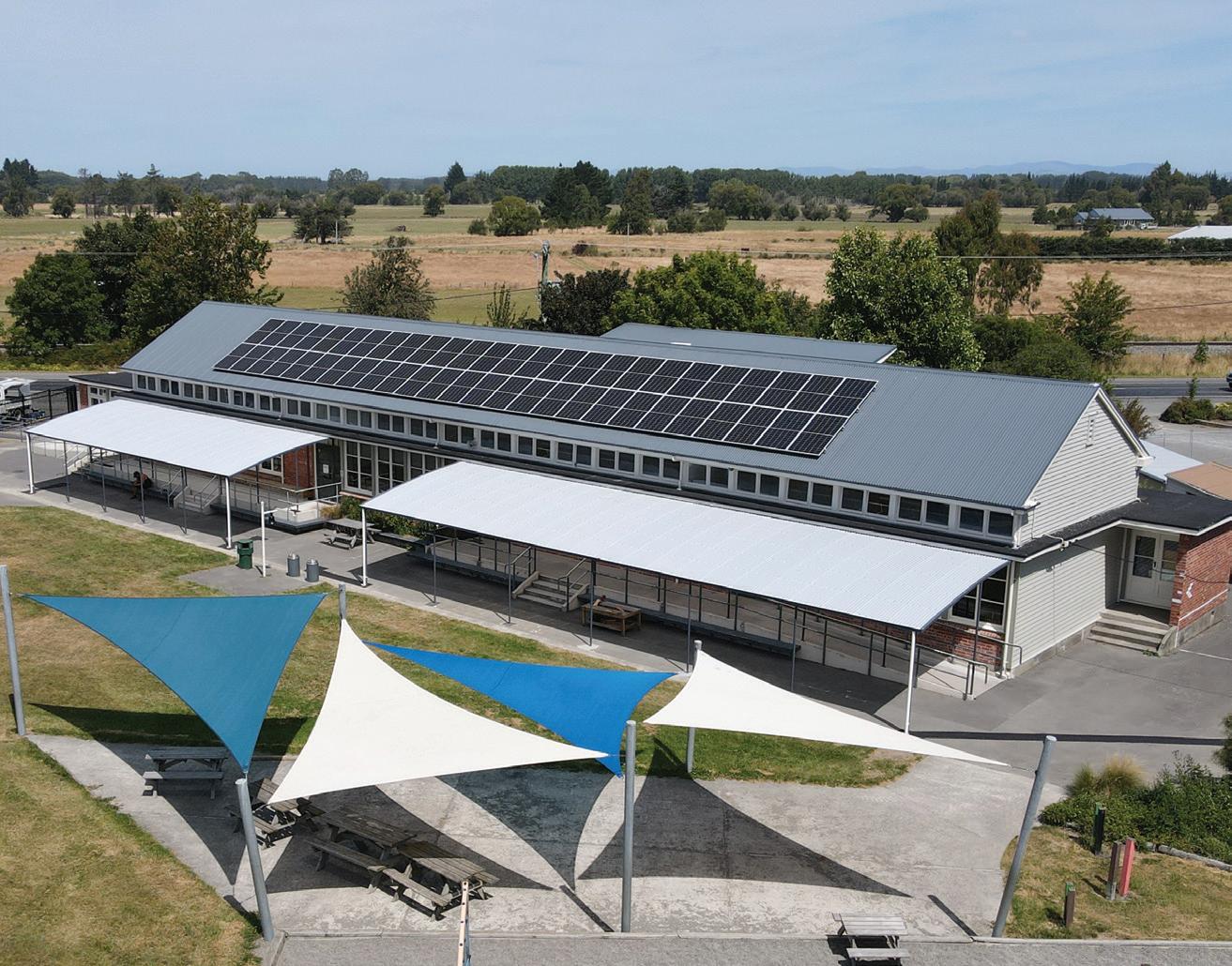


The Sustainable Energy Association New Zealand is working hard to make sure quality solar technology makes their way into schools.
The organisation comprises of members across New Zealand who are involved in designing, supplying and installing renewable energy generation in schools, the residential and commercial sector.
Although there are many companies that offer solar system installations, Sustainable Energy Association New Zealand (SEANZ) offers companies that are honest, tried and true.
Sustainable Energy Association New Zealand digital director, Kristin Gillies, says they have members from private business both big and small.
“Our role is around a number of things from promotion of the tech and industry to industry standards,” he says.
SEANZ has a lot of input on the standards which are used to govern
Sustainable Energy Association
New Zealand members must meet the entry criteria whereby their business, company principals and directors past history is considered.
They’re also held to a strict code of conduct and non-compliance with the code of conduct results in their membership being revoked.
This means that members are accountable and engaging a non-SEANZ member leaves the consumer at risk with little recourse, should things go wrong.
Members must:
• Disclose any history legal and court disputes
• Continue to run their business operation with honest and integrity
• Apply their skills and knowledge ethically in the interest of their clients
• Agree to report any breach of the above by another SEANZ member.
the technology associated with solar energy. They also provide a safeguard for people and schools who want to install such technology.
“We do due diligence on all businesses before they can become members and we have an internal process to make sure our members are abiding by a code of conduct,” Kristin says.
Is solar right for your school?
With the government committing to having the public sector carbon neutral by 2025, solar seems like an easy win to begin with. Coupled with enthusiastic tamariki who love the idea of generating electricity from the roof of their school, you find that most boards and Tumuaki are interested in whether solar is right for their school. Schools operate during daylight hours, matching solar generation perfectly, so the simple answer is yes, solar is right for your school!
The difficult part is finding a provider that you can trust. In a rapidly growing industry, there are unfortunately some unscrupulous operators that will prey on schools, which are seen as easy government money. As a board it’s important to refresh your understanding of the Ministry’s procurement guidelines, www.education.govt.nz/school/ property-and-transport/schoolproperty-procurement/planning/, and ensure you’re following them.
A solid procurement process should identify any issues with potential suppliers before it’s too late.
Schools obviously vary in size, and therefore, so will the solar solution.
You should expect your solar provider to ask you for half hourly consumption data, and they may even want to install their own data logger device. This is important because when you use the power is more important than how much
you use. Proposals should also be considering your generation during school holidays and whether your existing power provider is the best option for the school.
Once you’re satisfied with the solution, the question becomes how do you want to fund it? If you’re lucky enough to be looking at priority 4 projects with your 5YA funding then you may wish to invest in a capital purchase. For the rest of us there are two other options available, whilst they may be dressed up differently, they will fall into either a lease or a Power Purchase Agreement (PPA). A PPA is where a provider installs solar on your school at no cost and sells you the electricity generated at a set price.
These contracts often have terms exceeding 20-years. Extreme care should be taken to understand the fine print of these offers as there can be fish hooks that end up costing
your school substantial sums of money for a long time. A lease is usually the better option with terms available up to 10-years, a solar system can often save you money from day one, and at the end of the term you can buy the asset for an agreed rate. These are essentially the same as your TELA leases.
Sunergy Solar are the leading provider of solar systems for schools in the South Island
operating from Golden Bay to Stewart Island. We know schools, we know the MoE, and we’re passionate about our tamariki learning through real life applications. Solar systems not only save your school money, but offer exceptional learning opportunities for science and maths in particular.
For more information head to sunergysolar.co.nz or give them a call.
36 | Term 4, 2022 www.principalstoday.co.nz Sustainability | Solar Energy
Pegasus Bay School
Otonga School with arrays on several roof areas ( courtesy Genesis Energy School-gen_Power Technology)
POWER TO THE PEOPLES’ PUPILS!
Because of daylight operation hours, most schools are ideal candidates to benefit best from solar.
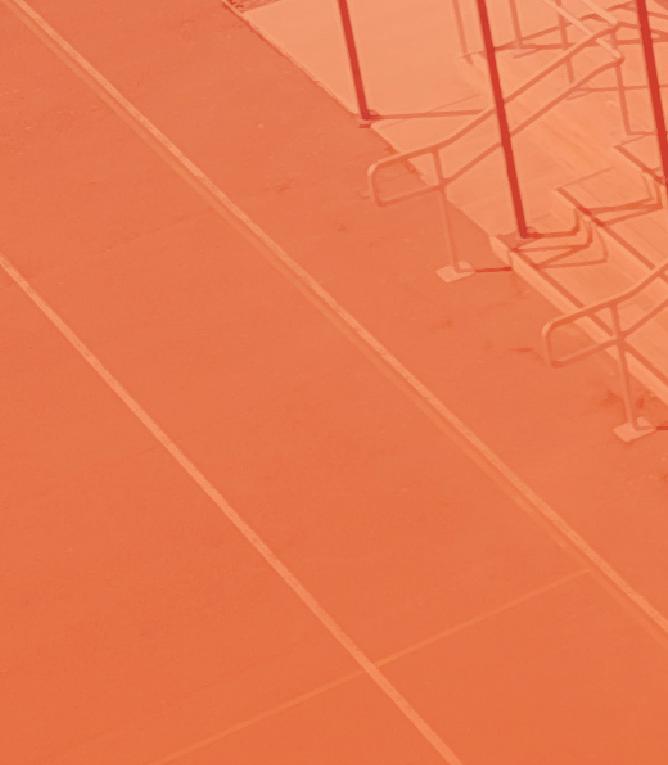
As the South Island #1 installer of solar for schools, Sunergy are your passionate, experienced specialists, able to maximise your savings from funding, finance, quality design and installation through to ongoing optimised power generation.


Getsolarsmart—putyourhandupforafreesiteassessment











BRILLIANT BENEFITS FOR SOLAR SCHOOLS
0800 SUNERGY sunergysolar.co.nz a powerful investment
Zero Upfront Cost Options
“Any government initiative involving solar energy like this stipulate that you need to use a Sustainable Energy Association New Zealand member.”
Kristin says it makes sense for schools to utilise solar energy. “Peak loads are during the day, so they don’t have to worry about storing energy overnight,” he says. “This means they can just use it as they produce it so schools align really well with solar.”
Schools that use solar energy use it alongside being on the grid and have been making some pretty significant savings. They’re also able to sell excess back to their provider.
“If a school is creating more electricity than they’re using, they can sell it back. On the other hand, if a school uses more than they make, they just buy the top up from their grid provider,” Kristin explains.
Kristin says there’s some other interesting models around the utilisation of solar energy in schools as well.
“One school up in Northland had a really big system installed and they’re actually able to supply to houses in their local neighborhood,” he says.
“Whānau are able to sign up and excess power generated from the school is able to be passed onto them.”



According to Kristin, there are three core levels that schools utilise solar energy. Firstly, there’s savings.
“Schools are making some outstanding savings. Every kilowatt of solar used is one less to buy from the grid,” he says.

Then there’s the sustainability side of things which links into, finally, the moral aspect. Kristin says it makes sense as people feel they’re doing the right thing.
“Plus, the government is encouraging it so, it’s really driven by both the Ministry for Education and the schools themselves.
“It’s also an educational move,” says Kristin. “What we see a lot of is there’s an associated education programme that goes along with it.
“Students will start learning about climate change or the technology involved or renewable energy and then create a whole educational component around it.”
So, how do schools afford a solar energy system?


Kristin says there are actually quite a few finance options offered by their suppliers and installers. It’s not just something for expensive, high decile schools.
“Lots of different schools can get in on it. Some of our members are
offering options where you pay off the cost of the system from the savings generated by the system.”
This is especially apparent in regions such as Northland where electricity is very expensive to purchase. Kristin says a lot of schools up there have been getting solar energy systems to combat the prices.
However, there are also hundreds of schools that only have around 10 solar panels and although that doesn’t put much of a dent in consumption, it’s a good start.
Kristin says that solar in schools and commercial businesses is booming at the moment and it looks set to continue in this fashion.
Sustainable Energy Association

New Zealand
021 2893 893
rebecca@seanz.org.nz www.seanz.org.nz
Solar power is one of the world’s fastest growing sustainable energy sources
Schools are an ideal candidate for making the most of solar energy as the majority of power is used during daylight hours when solar panels are generating. Solar savings are significant and can even effectively become free power for your school.
It gets better: grants are available in some cases to assist schools with solar investment, plus there are different ways of paying for a solar power system—including at no cost to the school! With our specialist, in-house team, we can design the best fit for your school. With electricity prices continuing to rise, solar is a prudent choice for your school.
also a great educational opportunity and environmental responsibility.
38 | Term 4, 2022 www.principalstoday.co.nz Sustainability | Solar Energy
Kaitaia College Solar System - from the air (courtesy SuperPower Technologies)
It’s
Give Future Energy a call today for your school and home energy needs! Solar Energy Air Conditioning EV Charging FUTURE ENERGY SPECIALISTS IN 0800 338 363 enquiries@future-energy.co.nz www.future-energy.co.nz EQCFollow us on:
Solar energy, no capital cost
The oldest state secondary school in Hawke's Bay, Napier Boys High School recently took a lead in sustainability and installed a 40kW system with Integrated Energy. The system comprises 108 PV solar panels contributing approximately 30% of their daytime consumption.

The school’s leadership team felt that, “The financial benefits are great for the school, but it is also key for them to show they are looking at alternative energy and also futureproofing the school”. This was the first phase of installs on an existing building with more to follow as a new building is completed.
NBHS were particularly interested in the educational benefits this system offers. They plan to use Solar Analytics, which comes as part of Integrated Energy’s solar package, to monitor the real-time generation of the solar and teach students about sustainable practices and the effect they have on the world.
Integrated Energy aim to provide a quality solution towards sustainable practices, which as NBHS attested to was achieved with
“minimal disruption and a really quick and easy process for the school to go through”.
One of the main drivers for NBHS and other schools that have also signed with Integrated Energy was this main point of difference;

Integrated Energy install, maintain, and manage the whole process for you, at no capital cost. The system is paid back through the solar energy generated and then used by the school. There are no extra costs involved and savings start from the moment the system is enlivened.
Integrated Energy has been working closely with the Ministry of Education to develop an approval process and energy contract, which
is standardised for all schools and allows all parties to have a thorough understanding of what is involved.
Onekawa School, also in Napier, has been enthusiastic about this partnership from the start and their solar installation is currently on site. Once completed almost 80% of the school’s energy consumption will be from solar energy.
Students of today are our future leaders and decision-makers and by
making sustainable practices more accessible, it fosters the imagination for future projects and hopefully the protection of our planet.
Integrated Energy’s vision is to be a leading provider of solar energy solutions contributing to New Zealand’s goal of 100% renewable energy by 2030. The opportunity is available to all schools to partner with Integrated Energy in New Zealand’s sustainability journey.
www.principalstoday.co.nz Term 4, 2022 | 39
“The financial benefits are great for the school, but it is also key for them to show they are looking at alternative energy and also futureproofing the school”.
Sustainability | Solar Energy
Roofing and solar panels in schools
Obviously, harnessing the free energy which the sun offers makes sense.
However, simply attaching panels to your property portfolio may well diminish expected returns on your investment, unless some thought goes into the process.
Your solar system supplier can advise you about the placement of solar panels on your roof.
Orientation to the sun is important. You will then need to consider several factors, such as: roofing
material, roof age, loads, maintenance and access.


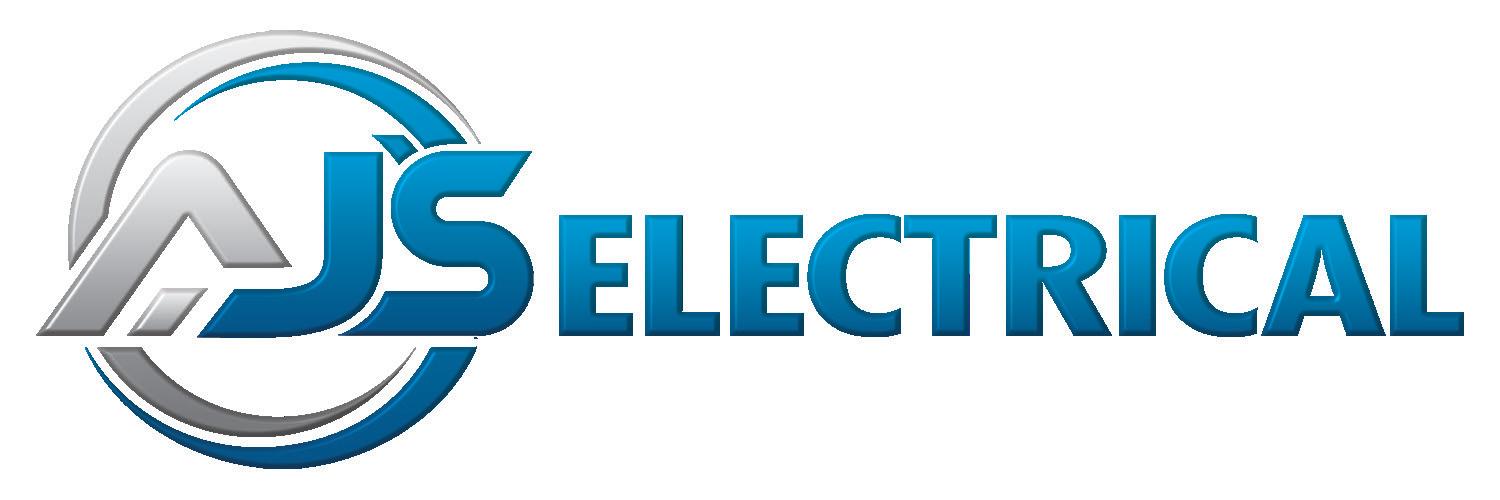
Roofing materials
What type of roof do you have? For example, are we going to cause downstream problems due to dissimilar material contacts?
Some roofing products will react to dissimilar metal contact and even water runoff can cause a reaction in the right circumstances.
Roof age
How old is the roof that will be covered by the solar arrangement?
It may well be prudent to advance your roof replacement programme for this area.
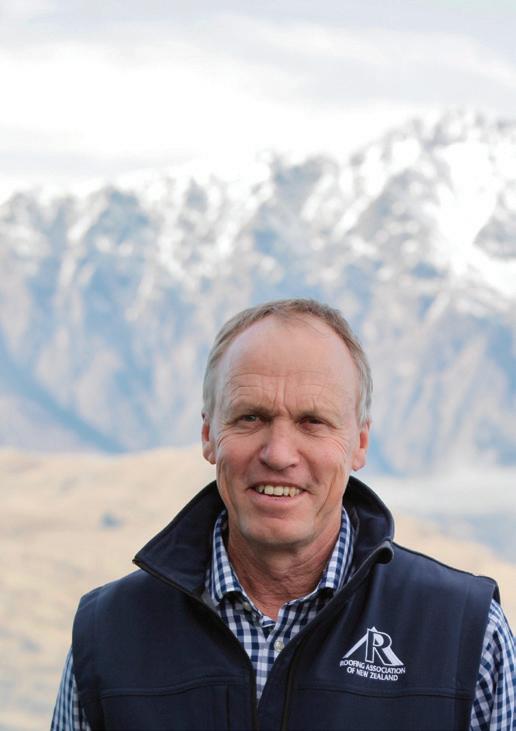
While the roof may be working now, having to move solar arrangements and reinstate comes at a cost when you reroof.
Loads
Solar energy systems impose loads onto roofs and the roofing structure - depending on the type of solar system used of course.
There are solar products available that are laminated into the roofing product. Then there are panelised units which are usually connected.


The most obvious load is the point load or weight that the panel connections impart.
This load should be connected to the roof structure, not to the roofing material alone.
Another load that must be considered is uplift or wind load, as the collection of panels has the potential to behave like an aircraft wing.
Maintenance

As you know, nothing is maintenance-free. Keeping solar collecting surfaces clean is logical.


However, now that you have your solar collectors on your roof - how will you maintain the roofing product under the solar collector?
All roofing products require maintenance.
If some products are not maintained as required, the life expectancy of the roofing product can be diminished significantly.
If you can’t see how the roofing is performing, then how can maintenance take place?
Access
Safety is key when working at heights. Consider how staff and/or contractors will work in this area.
40 | Term 4, 2022 www.principalstoday.co.nz Sustainability | Solar Energy Energy Responsibility in Schools ELECTRICAL AND SOLAR SPECIALISTS Solar (PV) - LED Lights - UV-C - Human Centric Lighting P. 07 571 0376 E. solartech@ajsltd.co.nz
RANZ CEO Graham Moor.
0800 888 987 | GUILDSPENCE.CO.NZ DOMESTIC AND INDUSTRIAL SOLAR SYSTEMS WITH GUILD & SPENCE ELECTRICAL • Locally owned and operated • Bespoke Design - we work with you to design and provide a solar solution which meets your energy needs and budget • Supply and installation throughout the Bay of Plenty region MEMBER CONTACT US TODAY FOR YOUR FREE, NO OBLIGATION QUOTE!
about
to consider
may be work platforms around
It could be having compliant
may be a
In summary
points installed.
of
There’s plenty to consider.
the capabilities of the contractors used are another
Use members of trade/industry associations. SEANZ is the Solar Energy Association of New Zealand and you can find a member at: www. seanz.org.nz


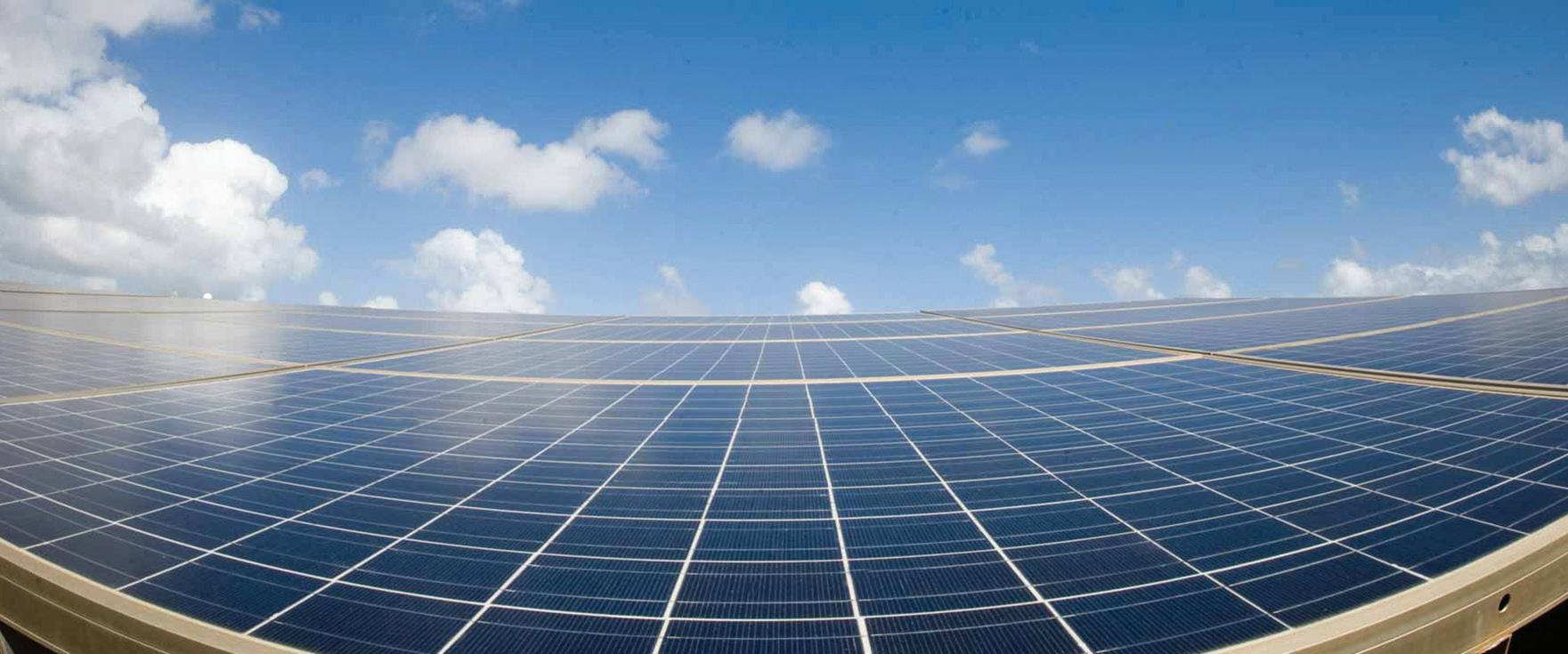



RANZ is the Roofing Association of New Zealand. Find a member at: www.ranz.co.nz Roofing Association New Zealand (RANZ)

Rosedale Road
Auckland (09) 415 0278 info@ranz.co.nz www.ranz.co.nz
www.principalstoday.co.nz Term 4, 2022 | 41 • Residential, Commercial , On or Off Grid • SEANZ approved installers • Hawke’s Bay Regional Council approved • Hawke’s Bay locally owned and operated P: 0508 27 32 39 E: admin@fibreready.co.nz Going solar can be a cash flow positive experience for your school. Contact James: 021 321 427 Email: james@gdnsolar.net.nz www.gdnsolar.net.nz Sustainability | Solar Energy Think
maintenance frequency. Maybe think about whether placing a solar energy system on the roof is actually the best location. If the roof is your best option, then you need
safe options for working at heights. This
the collectors.
anchor
It
combination
controls.
Importantly,
consideration.
396
Albany
Maintaining solar systems
Solar systems are most suitable for installation when they are part of a school’s sustainability and/or energy efficiency programme.
Ideally, they would be installed after basic energy efficiency improvements have been completed. This is important as energy efficiency initiatives generally deliver more cost-effective energy gains and carbon reductions than solar installation projects.
You may choose to purchase and own solar panels at your school, or you may enter into a lease arrangement with a solar provider who will continue to own the panels.
In either case, you should speak with your Ministry Property Advisor before installing solar panels.
Approval process
If the school is considering purchasing or replacing solar panels through their 5YA funding, note they are a priority 4 item in their 10 Year
They would only be funded through 5 Year Agreement (5YA) funding,
after all priority 1-3 items have been completed.
Solar panel installations require that the school’s Ten Year Property Plan (10YPP) is amended in agreement with the Ministry.
This is because most solar panel installations have an impact on a school’s existing infrastructure.
Installation
The Ministry requires all solar panels are installed by the Sustainable Electricity Association of New Zealand installers to ensure compliance with all relevant standards and requirements.




Roofing materials for school buildings
Have you considered the remaining life of the roof and any added expense and risks if solar panels need to be disconnected or re-installed if the roof requires replacement?
• Consider having your roof evaluated to make sure it can withstand solar panel installation
• Consider your roof’s remaining life, including whether your roof is currently included in the project list on your school’s 10YPP for maintenance works
Smart energy for your home or business.

High quality solar energy systems installed by experts. Whether you are looking to improve your businesses sustainability credentials, add value to your house, reduce your carbon footprint, or simply take control of your energy bills, CPS Solar Christchurch

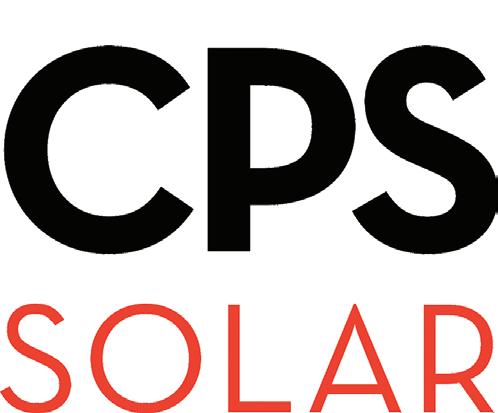
design and install the best system
Undertake the required repair/
avoid the costs in the long run associated with removing and reinstalling the solar panels on the roof.
Cleaning and maintenance
Here are some questions to ask yourselves regarding the ongoing care of solar systems:
• What are the maintenance costs of solar panels (including any costs associated with health and safety requirements for working on roofs)?
What are the replacement costs of inverters and batteries if applicable if you own them and how they will be covered? Are they part of the provider’s package?
• Is there safe access to the panels for cleaning and maintenance (refer to our roof safety webpage for more information)?
Information sourced from the Ministry of Education: www.education.govt.nz.

42 | Term 4, 2022 www.principalstoday.co.nz Sustainability | Solar Energy
will
for you, customised to meet your needs. COMMERCIAL SOLAR GRID-TIED SOLAR HYBRID SOLAR OFF-GRID SOLAR Join the solar revolution. 0800 277 548 | info@cpssolar.co.nz | cpssolar.co.nz E Q C
You may choose to purchase and own solar panels at your school, or you may enter into a lease arrangement with a solar provider who will continue to own the panels.
The Solar and Electrical Professionals for your Northland home & business 021 962 239 info@desolar.co.nz www.desolar.co.nz
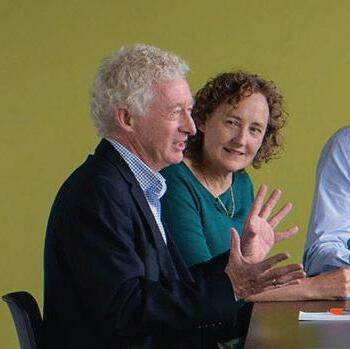


Stepping out Field trips to the great outdoors
By Timmi Aplin-Barrett
Education is becoming something increasingly based in the online world so it’s more important than ever to connect with the great outdoors.


A great way to do this is with field trips and camps. It gives students an opportunity to really get out of the classroom and explore the natural world they live in.
Here are some top spots to base your next field trip as recommended by the Department of Conservation.
Wellington/Kapiti – Remutaka Forest Park
Located in the Remutaka Range between Wellington’s Hutt Valley and the Wairarapa Plains, the forest park is a great spot for students to explore cultural sites, native bush, wildlife habitats, river catchments and mountain ranges.

This trip is suitable for both primary and secondary school students and covers science, social science and green spaces.
Students can learn about pest control, native bush, restoring native bush and much more.
For more information including learning resources, go to: www. doc.govt.nz/get-involved/ conservation-education/ resources/local-field-trips/ wellington-kapiti/exploreremutaka-forest-park .
Auckland – Mangere Mountain
This mountain is one of the largest and best-preserved mountains in the Auckland region. It was once the site of one of the biggest Polynesian settlements in the South Pacific.

The field trip accommodates both primary and secondary level students and is easily accessible from anywhere in Auckland. Mangere Mountain offers a wide range of learning areas from science and history to health and Māori practices.
For more information and to organize a field trip, go to: www.mangeremountain.co.nz.

Central North Island –Tongariro National Trout Centre
From a native aquarium to a rainbow trout hatchery, the Tongariro National Trout Center is a great place to learn about fishing, conservation and the history of fly fishing.
Located in the bush 4km south of Turangi, the center provides hands on learning around fresh water sustainability and information about the protection of freshwater habitats.
For more information and to book a trip, go to: www.troutcentre.com.
44 | Term 3, 2022 www.principalstoday.co.nz Working Space | EOTC
Mt
Mangere in Auckland Book your camp winter for July, August or September 2023 and receive a 20% discount *some conditions apply 07 332 3510 tuiridgepark.co.nz bookings@tuiridgepark.co.nz
Nelson/Tasman – Farewell Spit/ Puponga Farm Park
New Zealand’s longest sand spit is a great place to learn about history and biodiversity. Students have the opportunity to learn about migrating birds, adaptations, food chains, coastal productivity, resource management and weeds.
A three-hour drive from Nelson, students can visit the internationally renowned bird sanctuary, a historic lighthouse, pa sites and more.
This area can cover science, health and PE as well as mathematics and statistics.
For more information, visit: www. doc.govt.nz/get-involved/ conservation-education/ resources/local-field-trips/ nelson-tasman/farewell-spitpuponga-farm-park

West Coast – Punakaiki
A tiny gem on the West Coast, Punakaiki offers a wide range of activities for both day trips and overnight camps.
Punakaiki features 30-million-yearold limestone formations that both educate and fascinate students. This area offers science, health and PE as well as social sciences.
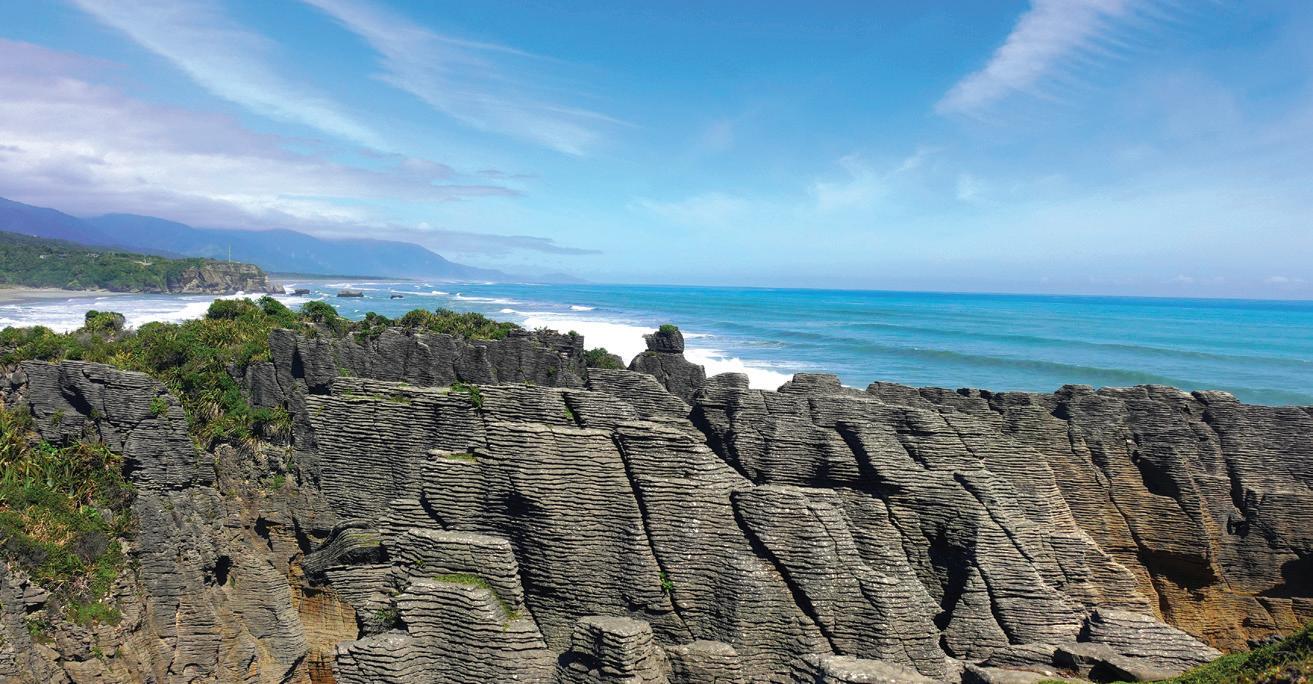
Students can learn about the systems responsible for creating the landforms knowns as the Pancake Rocks and Blowholes.
The settlement is located around 40 minutes’ drive north of Greymouth and 50 minutes south of Westport.
For more information and resource packs, go to: www.doc.govt. nz/get-involved/conservationeducation/resources/local-fieldtrips/west-coast/punakaiki
Canterbury – Temple Basin Temple Basin offers learning outcomes based around life forms within an Alpine Region, history and Māori culture and customs.
This area sits on the main divide of the Southern Alps in Arthurs Pass National Park. Suitable for secondary school students, this trip requires a certain level of physical fitness as the walk from the carpark to the base of a line of bluffs takes 45 minutes.
From there, it’s another 45 minutes to reach the ski huts. It’s a steep incline and the track can be thin and rocky. Students can learn about flora and fauna, cultural sites, ecological awareness and health and safety.
For more information, visit: www.doc.govt.nz/get-involved/ conservation-education/ resources/local-field-trips/ canterbury/temple-basin.
Are you ready for
We would like to start off by thanking all the schools that have been with us this year.
It has been a real pleasure having you with us and it has been so magic to watch your young people laughing (and sometimes crying a little, ha).
It has been completely radical how intrusive the COVID-19 lockdowns and impact have been. We have deep sympathy for the workload our poor teachers are under. We admire your resilience to get back up each day and take just ‘one more step’ up the mountain. We wish there was more we could do to help you.
Coming up to the end of term (yay) we strongly recommend you pat yourselves on the back for having done such a stella job in the circumstances. We invite you to take some time out in New Zealand’s lovely nature, reset and strengthen your inner self, so that when 2023 comes around you are refreshed and ready to see it as a new opportunity.
“We invite you to take some time out in New Zealand’s lovely nature, reset and strengthen your inner self, so that when 2023 comes around you are refreshed and ready to see it as a new opportunity.”
In 2023 we are adding on some new activities (such as overnight in pup tents – by invitation only) and natural abseiling out in the bush.
We wish you and yours all the best health and happiness possible and we would like to thank you deeply for your engagement with us this year.
Happy holidays!
Otago – Catlins Coast

An excellent multiple night camp, Tautuku Outdoor Education Center offers a wide range of activities to promote learning, the great outdoors and working together.
Students can expect to complete activities such as abseiling, kayaking, climbing walls, a confidence course and much more.
Located adjacent to the Tautuku beach in the William King Scenic Reserve, it’s a great place for students to get out of their comfort zones. There are also fantastic opportunities to learn about the environment in both native bush and coastlines.
For more information, visit: www.youthadventure.org.nz/ camps/tautuku.
I am me I am worthwhile
Funding available
Please ask us about funding for active recreation, wellbeing and leadership.
Kokako Lodge (Ak)
A time to refocus
Help your students get back on track by a change of environment, EOTC and even team building to grow their support structures.
Kokako Lodge is only 30 minutes from South Auckland. We are surrounded by 17,000 hectares of tranquility, challenge (high ropes) and adventure.
Spoken Word, Reflection Journals, team building games and personal challenge (by choice).
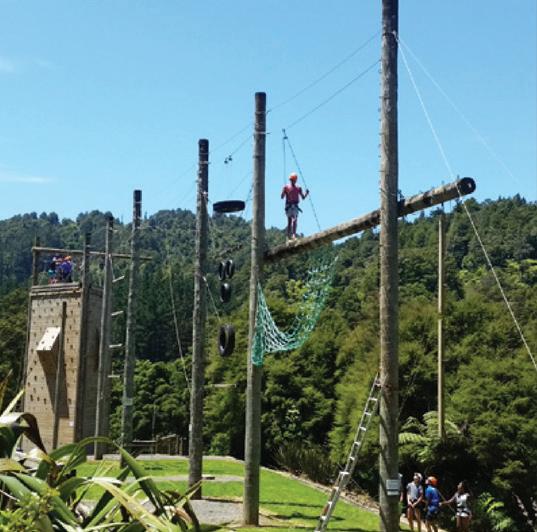
www.principalstoday.co.nz Term 4, 2022 | 45
For more information please contact Kokako Lodge on 09 292 4349 or visit www.KokakoLodge.org.nz
2023?!
Working Space | EOTC
Tautuku Beach
Pancake Rocks at Punakaiki
Outward Bound adventures for 2023
Outward Bound courses are open for booking for the 2023 season. As one of New Zealand’s leading organisations for showing people their full potential through outdoor challenge and adventure, Outward Bound courses are a great way to get teenagers outside and learning.
From outdoor skills to leadership experience, Outward Bound courses offer students an opportunity to get outside and explore the world around them and who they are as a person.
Available Courses

• Leaps & Bounds – for ages 13-15 + parent/caregiver – 8 days –availability from 30th June, 2023
Mind Body Soul Compact – for ages 16-18 – 8 days – availability from 20th April, 2023
• Mind Body Soul – for ages 16-18 – 21 days – availability from 28th June, 2023
• School leaders – for ages 16-18 – 21 days – applications open from 1st February, 2023.
Most courses are available from the middle of next year. Leaps & Bounds takes place in the Marlborough Sounds where activities such as tramping, camping, sea journeys and heigh activities are featured.
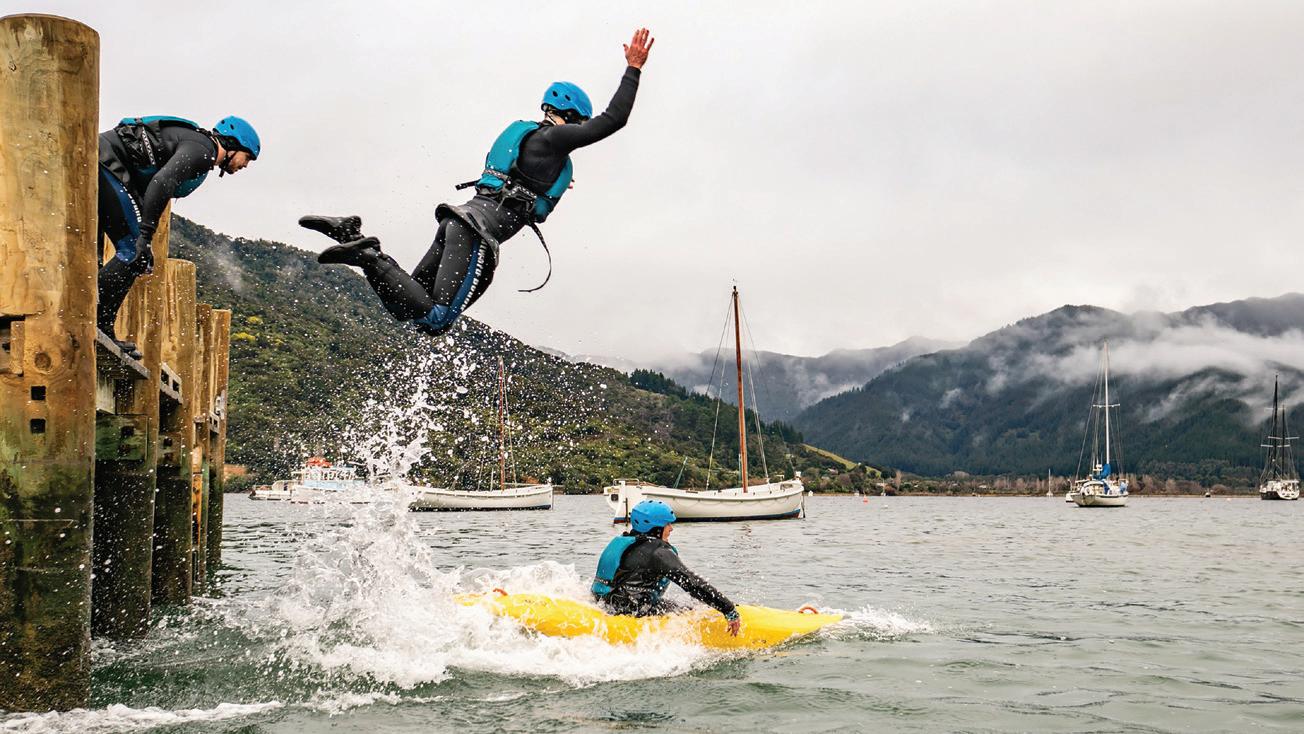
This course is designed to help bond parents with their kids through understanding each other’s strengths and capabilities among much more.
Mind Body Soul Compact is a great way to experience the Mind Body Soul course on a restricted time schedule.
Mind Body Soul helps students gain independence and become a better leader, team member and adventurer. From ocean dips and tramping to
kayaking and workshop sessions, this course packs a lot of personal improvement into its activities.
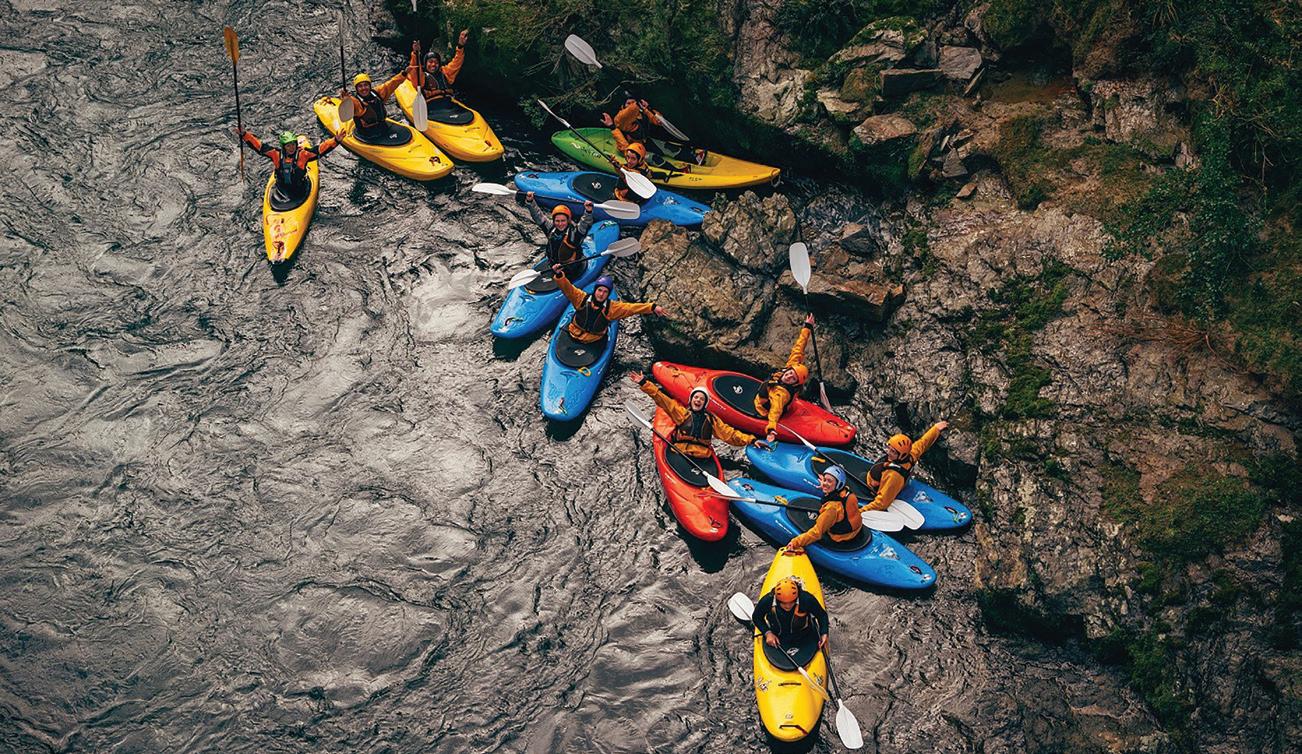
The school leaders’ course is designed for students who are in a leadership role during year 12 or 13. It aligns with the Mind Body Soul course but specifically focuses on leadership.
For students who are looking to become strong leaders, this course offers the opportunity to be the leader of the group for a day, workshops that explore high performing teams, inspirational speakers, action planning and much more.
Outward Bound also offers courses for adults ranging from five to 21 days.
For more information, prices and booking, please visit: www.outwardbound.co.nz.
Are you looking for a venue for your next school camp?
Lakes Ranch offers a beautiful setting with all you need for a fun and active camp.
The experienced hosting team will work with you to ensure your camp runs as smoothly as possible, and will be on hand during the camp to assist where ever necessary.
The onsite facilities eliminate the need for travel elsewhere, with a range of activities available including kayaking, horse riding through to the simple pleasure of relaxing on our large hammock.
Safety is paramount and briefings are given to all supervisors before commencing activity times. We provide our own qualified instructors for activities where specialist skills are required.
Lakes Ranch aims to equip children with tools for the future and create lasting memories. Camp provides a challenging but safe environment for this to take place.
We all grew up where children built a real tree hut, in a real tree. Lakes Ranch is set on 127 acres of outdoor fun and the direction we are moving in is one of adventure. We are helping kids gain confidence in an environment that is both challenging and safe.
Therefore, the goal is to provide a place where opportunities are available to jump in, have a go, and meet the challenges offered by the site.
Activities
There are a huge range of activities for school groups to get involved with at the camp.
Sports facilities and fields are also available to kick a rugby ball on, or have a game of competitive volleyball. Tennis and badminton are also great games for kids to get involved with and sports gear is available at the camp.
School holiday programmes
Lakes Ranch offers extensive holiday programmes. For those who love to get out into the great outdoors on horse back. From trekking to trotting, the camp offers amazing opportunities to harness your skills on horse back. And you don’t even have to know how to ride a horse. The talented team at the camp can teach you.
Lakes Ranch 79 Lake Rotokawau Road
RD4 Tikitere
Rotorua
(07) 350 3010
46 | Term 4, 2022 www.principalstoday.co.nz Working Space | EOTC
www.lakesranch.org.nz
The benefits of teaching outdoors
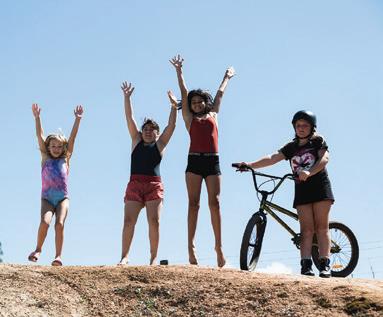 By Timmi Aplin-Barrett
By Timmi Aplin-Barrett
Although getting out for tramps and camps is a fantastic way to get students exploring the great outdoors, taking advantage of school grounds is useful too.
Outdoor education is becoming increasingly important with more and more studies emerging detailing the benefits of teaching outside.

The Department of Conservation says that time in nature can build resilience against stress and adversity, improve concentration, learning, creativity and cognitive development and increase selfesteem and discipline.
It also fosters a love for the natural world and increases cooperation and self-awareness.
Mike Brown, in his report on 'Developing a place-based approach to outdoor education in Aotearoa New Zealand' says outdoor education has a long history in schooling in New Zealand and is generally believed that it can contribute to students personal and social development.




He also says that outdoor education is often thought of as occurring
in remote locations and can be expensive. However, as DOC explains, it doesn’t have to be remote or complicated.
DOC recommends exploring your local environment. Choose a green space in your area, develop connections, form an inquiry and start and investigation.
You can download further resources from the DOC website to aid in this particular investigation.
It includes activities to help plan an investigation into the biodiversity of a local green space which, in turn, helps students build an understanding of ecosystems and

contribute to increasing biodiversity in a green space.
Activities such as orienteering is a great way to get students outside in their local school grounds.
You can base the challenge around different themes; native plants, interesting natural markers and much more. It also aids in developing team work, following instructions and fosters a sense of healthy competition.
You can also get students to create their own orientation maps. Younger students can benefit from activities such as nature sensory bingo, outdoor nature moves and scavenger hunts.
Outdoor learning also creates a fun environment for education to take place. DOC says that nature connection and spending time in nature have significant health and wellbeing benefits for everyone.

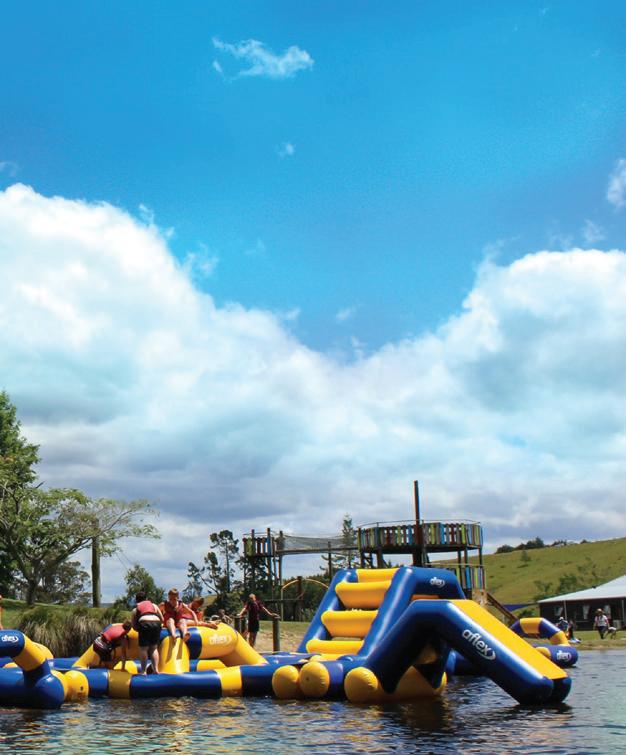

DOC also wants to encourage students to become more involved with nature outside of school as well and find new and interesting things to do outdoors.
Group accommodation in the heart of Rotorua





www.principalstoday.co.nz Term 4, 2022 | 47 An innovative and exciting camp experience Ph 03 541 8465 www.bridgevalley.co.nz Working Space | EOTC
CYC HAVE YOUR NEXT AT ADVENTURE Build confidence and team spirit in both staff and students. Meet your schools EOTC requirements in a safe and cost-effective way. Book a site visit now to check out all we offer at CYC, the home of adventure cycnga christianyouthcampsWWW.CYC.ORG.NZ P. 07 824 8495 | E. info@cyc.org.nz | A. 148 Waingaro Rd, Ngāruawāhia An OutdoorsMark certification shows that our camp has met the highest standard of safety in the adventure activities industry
Blue Lake TOP 10 have a wide variety of accommodation options available to suit every budget, from 180 powered and non-powered tent sites to standard and self-contained cabins. The facilities at the park will keep your group entertained and active, with free Kayak hire available and a private or sole use marquee with attached kitchen and BBQ that can accommodate up to 80 people. The park is central to a variety of local attractions. Lakes Tarawera, Okareka and Rotokakahi are all within 2km of the park, and a short 8km drive will find you in the centre of Rotorua. Blue Lake TOP 10 offer large groups heavily discounted rates from February 1st – December 20th (excluding peak season only) and can work with you to accommodate any size group and any budget. For more information please call 0800 808 292 or visit www.bluelaketop10.co.nz
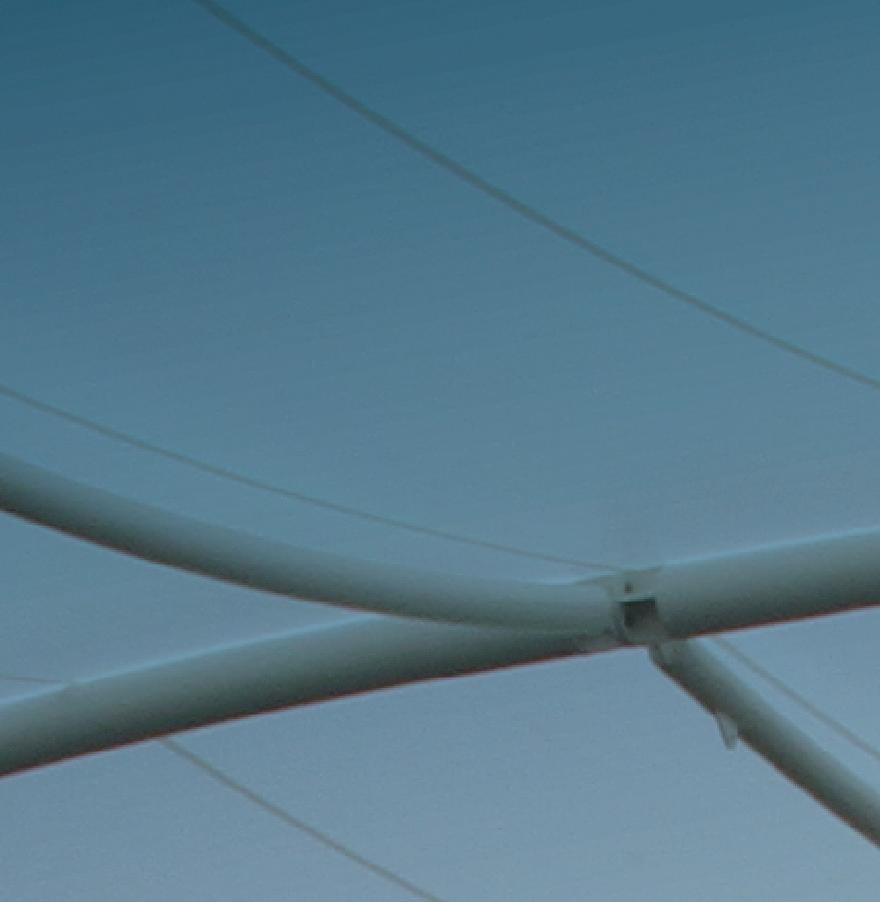

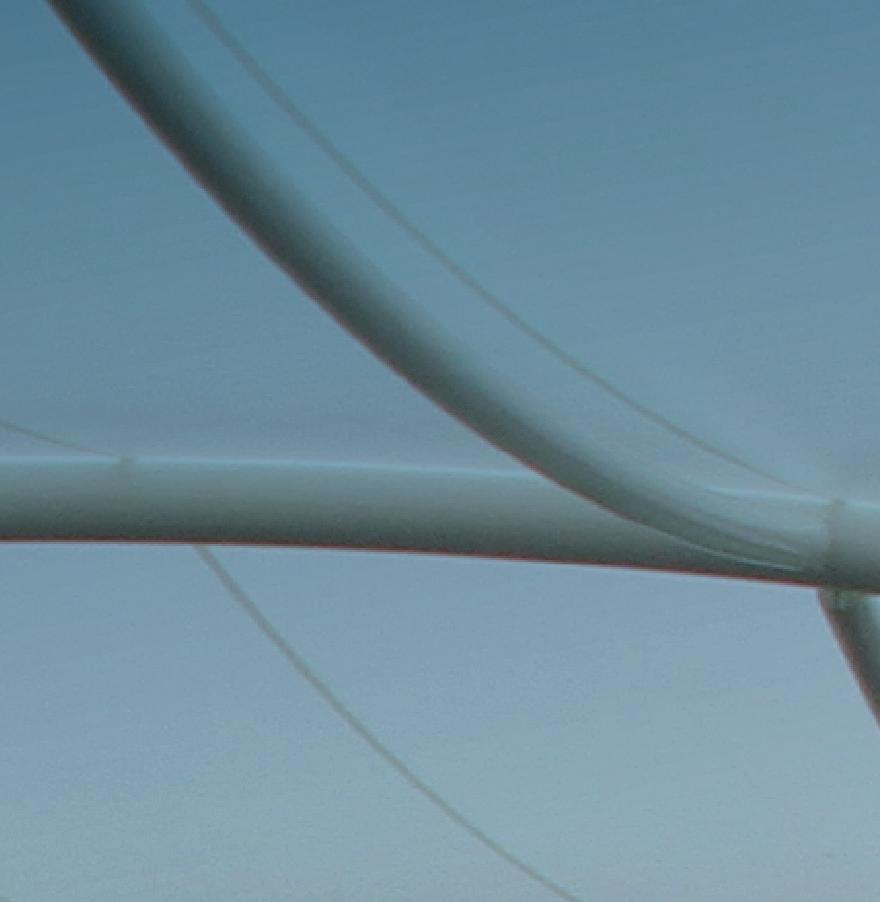





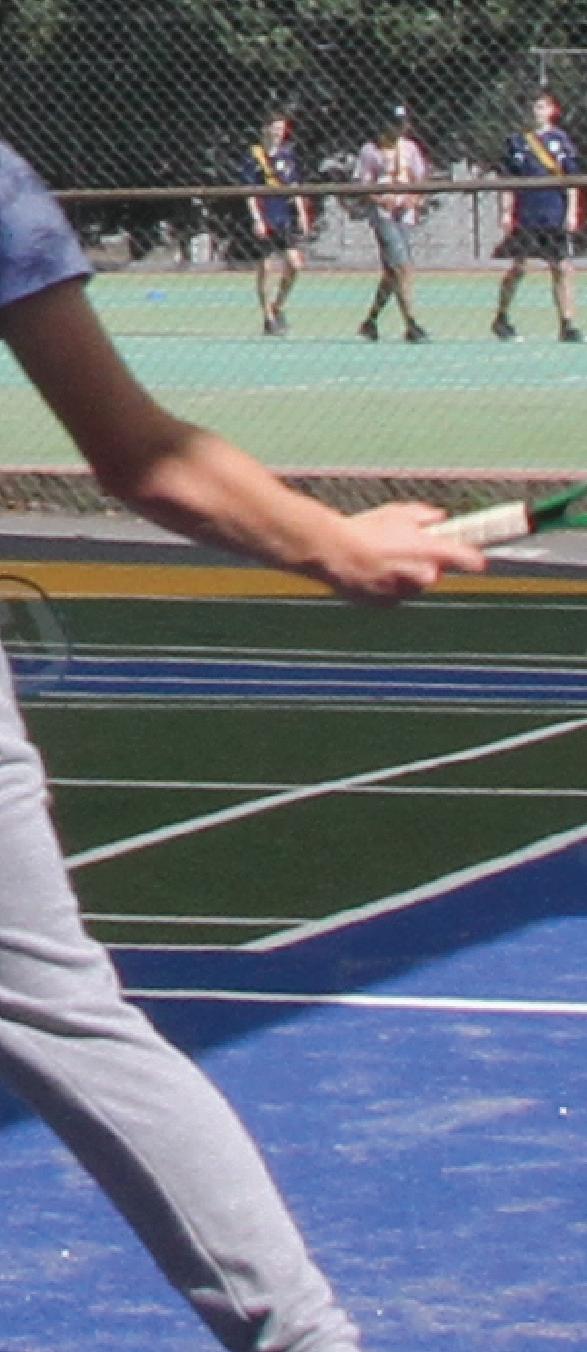


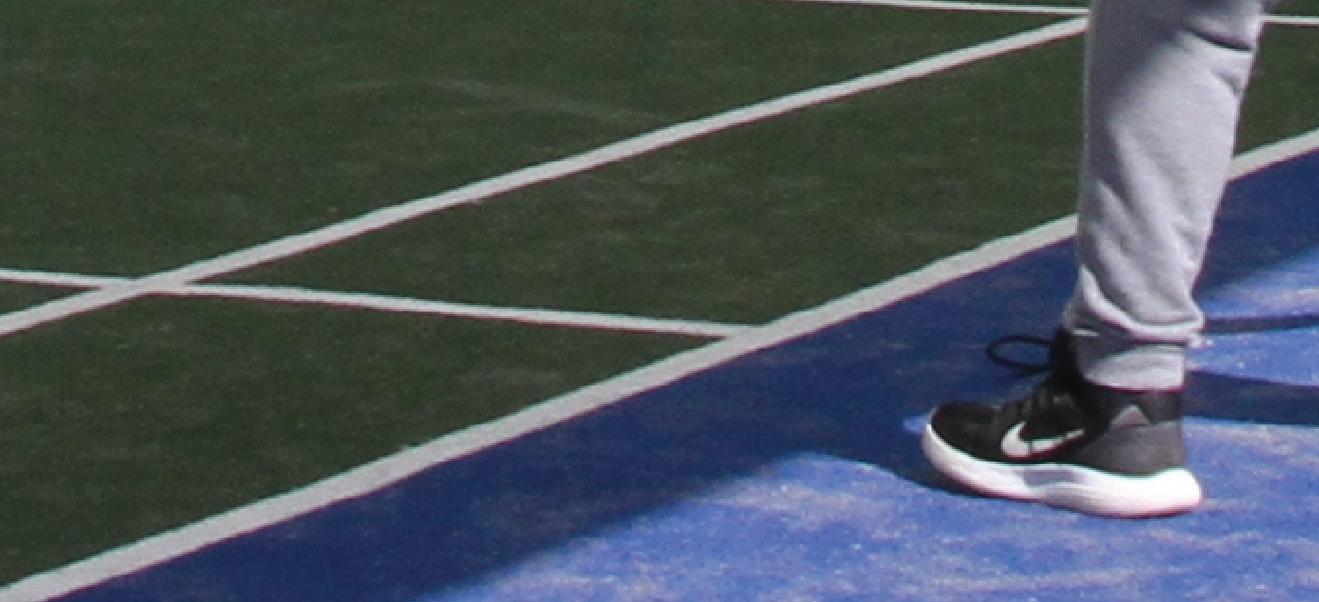



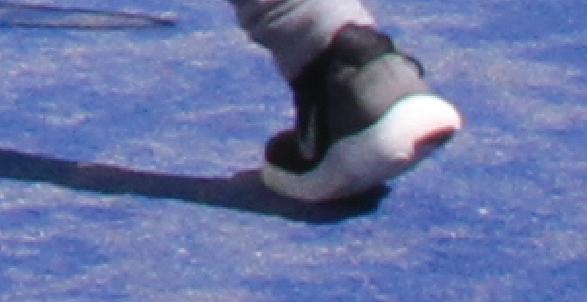



FEEDING LEARNERS HUNGRY GREAT FOOD
Healthier food options for New Zealand’s hungry learners.
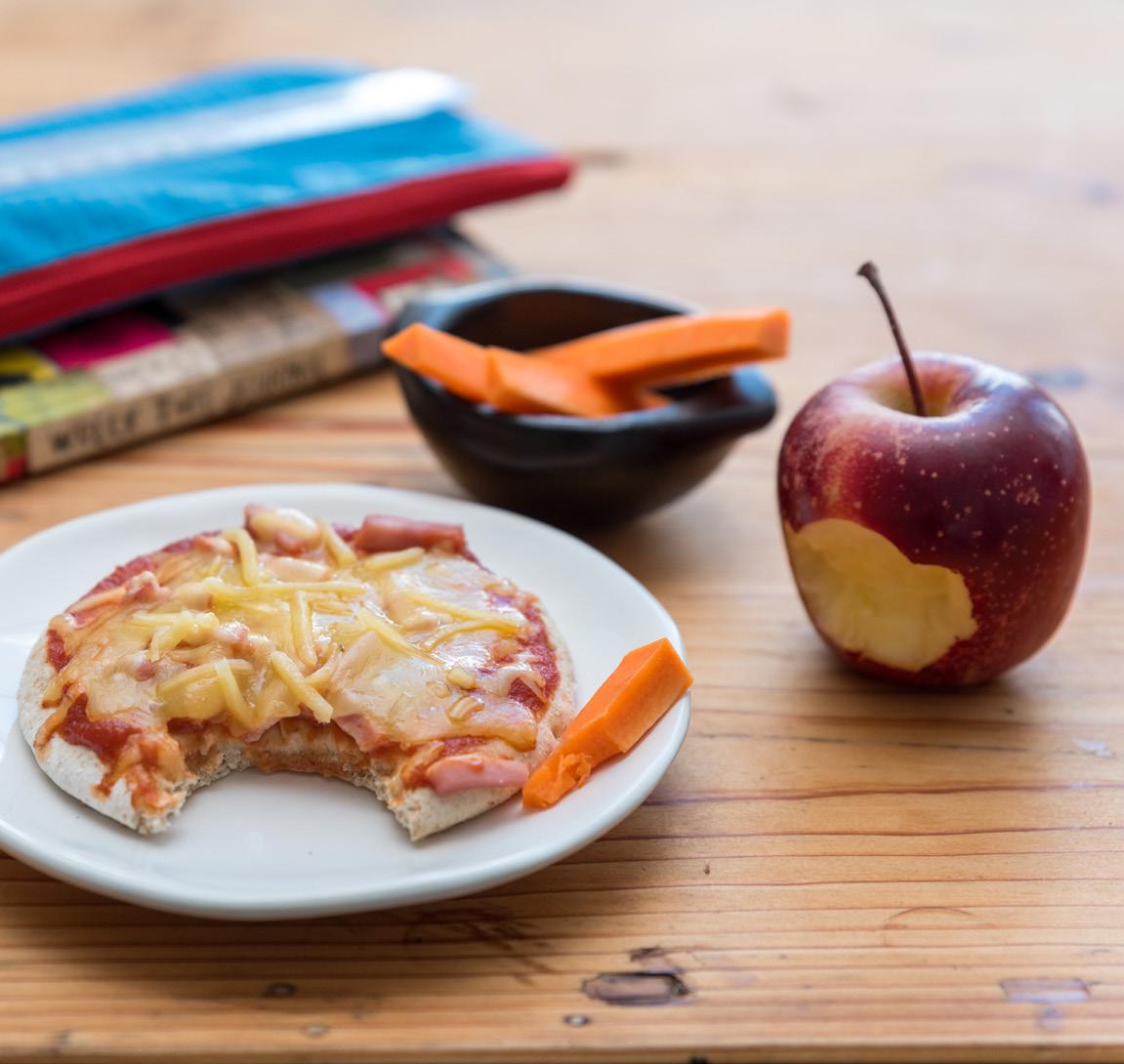
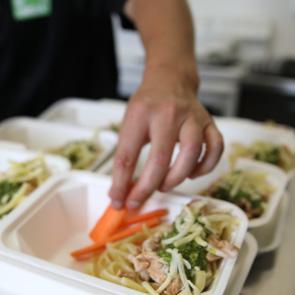
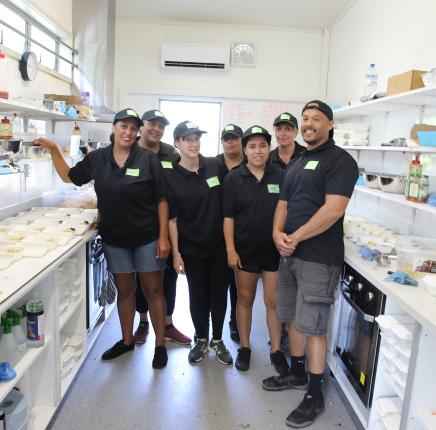

quality, freshly made school lunches.



On-site or delivery service,

to
Professionally audited food control plan.

qualified & 100% local staff.
simple, let our professionals feed hungry students, while your professionals feed hungry minds.
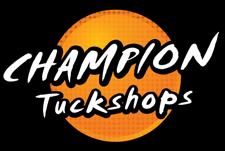
BE PART OF THE JOURNEY. LET’S TALK. 09 361 2655 | www.libelle.co.nz
• Top
•
tailored
suit you. •
• Trained,
It’s
APPROVED LUNCH SERVICE SCHOOL PROVIDER
Establishing better outcomes for tamariki
By Natasha Parrant
The Child and Youth Wellbeing government website has been created with the hope to better improve education, health, and wellbeing for young people.
The website published a story about ‘Creating safe, stable and nurturing environments for tamariki to learn and play’ to show what Aotearoa is doing to ensure Aotearoa’s youth are supported.
A Manawatu-based organisation is teaming up with Aotearoa schools and other non-governmental organisations (NGOs) to establish better outcomes for tamariki.
MentorED (Ngā Whakaruruhau Mātauranga) is a charitable trust based in Palmerston North and aims to represent, support, and advise primary and intermediate school pupils who have difficulties and emotional and educational needs, due to unfortunate circumstances like suffering from family abuse, being in state care or living in transitional housing.
“Some aspects of mainstream schooling can be challenging for these children. We want to help create a trauma-informed education system that is aware of and caters to, the varying educational and emotional needs of every child,” MentorED programme co-ordinator Fiona Cain says.
“Our volunteer mentors are vetted, trained, and thoughtfully matched with a child. They then work to build trusting relationships with the child through fun, social, and emotional education and activities,” MentorED co-founder and volunteer Mercedes Strutt says.
“We aim to boost confidence and wellbeing in order to help children navigate the challenges of life, using a PACE approach (Playfulness, Acceptance, Curiosity, and Empathy)
– it’s a way of thinking which deepens the emotional connections in our relationship with others.”
MentorED’s volunteers come from various roles like teachers, social workers, scientists, parents, grandparents, and more. Together the experienced, knowledgeable, and supportive team share similar morals like being empathetic, patient, and committed to tamariki.
The team like doing fun things - they even have Mercede’s therapy dog Rocco the labradoodle, who visits schools weekly as part of mentoring tamariki. The dog helps children aged 6-13 years old.
Along with one-on-one mentoring, MentorED is also sponsoring access to school camps and paying for digital education platforms.
“Traumatic childhood experiences can have a lasting impact on health, wellbeing, and life opportunities. Promoting acceptance, empathy, and resilience by creating safe, stable, and nurturing environments for children to learn and play is essential to mitigating these harmful impacts,” Fiona says.
MentorED believes that supporting children going through challenging times can raise school engagement, confidence, and wellbeing, and ensure school pupils have good quality education.
Teachers involved in the programme are complimenting the volunteer mentors saying they’re positive role models, provide consistent support and help pupils through one-on-one sessions, which teachers can’t always do.

MentorED works with various schools, agencies, and NGOs including Oranga Tamariki, the Ministry of Education, NZ Police, Women’s Refuge, Caring Families Aotearoa, and SuperGrans Manawatū.
Wonderful water
We all need to have enough fluid to be able to function at our best.
In particular, children are at risk of dehydration, especially when either in hot weather or when they are exercising.
But here’s the thing about hydration - by the time they feel thirsty they are probably already dehydrated — so it’s up to teachers and care givers to ensure they are drinking enough.
As well as being less heat tolerant than adults, young children have a higher proportion of body water than adults, making them less heat tolerant and more likely to get dehydrated, especially when being physically active and in hot climates.
Encouraging children to drink fluids regularly is important as they may not remember to have a drink themselves.
WATER WORKS
Water is the best choice of fluid to combat dehydration. Avoid sports drinks, fruit juices, soft drinks and flavoured mineral waters, since they all contain sugar and are acidic, which can lead to tooth decay.
The recommended daily intake of water for children is:
• 5 to 8 years old: 5 glasses (1 litre)
• 9 to 12 years old: glasses (1.5 litres)
• 13 years old and over: 8 to 10 glasses (2 litres).
Remember that children need even more water when they are exercising. They should drink before, during and after physical activity — even if they aren’t thirsty.

TIPS TO HELP KIDS STAY HYDRATED
Make sure they always pack a water bottle
• Choose water rather than sugary or fizzy drinks
• Remind them to drink before a sports game
• encourage them to have a few mouthfuls of water during any breaks in the game
• Make sure they have a big drink afterwards to make up for any sweat they have lost.
THE WARNING SIGNS OF DEHYDRATED
Mild dehydration can be treated by giving a child more to drink. But serious dehydration — for example, if they are unwell — can be very serious. It’s important to know what to look out for.
If a child has a fever, diarrhoea, or vomiting, or is sweating a lot on a hot day or during intense physical activity, watch for signs of dehydration. These include:
A dry or sticky mouth
• Few or no tears when crying
• Eyes that look sunken
Peeing less or fewer wet diapers than usual
• Dry, cool skin
• Irritability
• Drowsiness or dizziness.
STAYING HYDRATED
It’s been said that you are what you eat, and there is no denying that the food we eat impacts our health throughout our lives.
Part of our diet also includes what we consume in liquid form so it can also be said we are what we drink too.
Not enough fluid intake leads to dehydration, with as little as one percent to five percent of body water is lost, symptoms start to occur, including thirst, vague discomfort, lessened movement, impatience, and increased pulse rate.
Health effects of chronic, mild dehydration and poor fluid intake include increased risk of kidney stones and urinary tract cancers and some colon cancers as well as heart valve disorder and diminished physical and mental performance.
50 | Term 4, 2022 www.principalstoday.co.nz Working Space | Health and Wellness
Link: www.mentored.org.nz


Proudly supplying NZ schools with drinking water systems www.merquip.co.nz | 09 636 0 636 | info@merquip.co.nz ✔ Boiling and chilled drinking water on tap ✔ Highest capacity units available - easily cope with school staff breaks ✔ No noise or unsightly cupboard vents - easy to retrofit ✔ Most compact & energy-efficient units in their class ✔ Over sink, or separate drained drip tray ✔ Only brand to achieve Gold Global Greentag certification ✔ Bottle fillers and drinking fountains ✔ Fully sensor-operated touch-free models available ✔ Combination models available ✔ Green ticker counts bottles saved from going to landfill ✔ Vandal resistant options ✔ Indoor/outdoor options Two great thirst quenching solutions, For teachers and students with more than a thirst for knowledge the answers are quite academic; two great thirst quenching drinking systems from our extensive range. And we’re not just giving ourselves top marks, here’s what some enlightened clients think! Check out full testimonials from some very satisfied clients on our web site. www.merquip.co.nz/About+Us school of thought. ...with close to 200 students in our hostel, we never run out of hot or cold water during meal times. This is great for the environment as well as being safe due to the auto sensor, meaning no buttons are needed to be touched when refilling your own bottle.
Christine
Mackie, Palmerston
North Boys’ High
School
Todd Hoar, Samuel Marsden Collegiate School
ONE
Minimising sports injuries
Almost one-third of all childhood injuries occur during sports activities. As we roll into the warmer months this means kids are returning to the fields.
Joe Dale, sports expert and founder of VPS Medicine, offered guidance on how to minimise the risk of sports injuries.
Don’t skip the warm ups – stretch
The vast majority of minor sportsrelated injuries I’ve encountered could be avoided with regular and sensible warm-up regimes.
This should involve dynamic stretching, which will allow the joints to become lubricated, as well as allow the tendon, muscle and ligament around the joints to get used to being stretched.

Strengthen the right muscles
Spraining the ankle ligaments and hamstrings are both very common sporting injuries, but can often be prevented by strengthening the appropriate muscles.
Hence, it’s vital to spend some time in the gym strengthening the muscles that you’ll be using - the stronger your muscles are, the more easily they can protect the surrounding joint.
Build up slowly, know your limits If someone hasn’t exercised for a long time, take it easy to begin with.
Even if they’ve kept fit in other ways, each sport is unique in the way it uses the joints and muscles - so build up slowly and try taking it gently for the first couple of sessions to allow the body to adapt.
Don’t forget to warm down
After completing any sporting activity, a warm-down is vital to help get rid of the waste products built up during exercise.
Without a proper warm-down, the waste products such as lactic acid can linger in the muscles and lead to serious DOMS (Delayed Onset Muscle Soreness).
Relationships in the Workplace
Developing positive relationships in the workplace is critical for career success.
By understanding yourself and getting to know your colleagues, you can build lasting work relationships. Being part of a cooperative team built on trust and effective communication will improve your job satisfaction.
Good workplace relationships are built upon:
Getting to know your colleagues and management.
• Open communication is crucial for building trust with others.
• Understanding and valuing your co-workers means you will be valued too.
• Sharing knowledge, information and ideas with colleagues helps build effective teams.
• Teamwork, communication and problem-solving skills are crucial to working well together.
When everyone does their fair share of work and gives credit where it is due, the workplace flourishes.
Here are some helpful tips:
• Understand your strengths and weaknesses. As self-awareness helps us become more accepting of others.
Identify your needs in relation to your job and what others need from you.
• Ask questions and listen to your colleagues to find out what’s important to them.
• Be aware of your tone and body language as well as the words you say. Keep your tone even and arms relaxed rather than crossed.
Pay attention to those around you and notice if someone needs assistance.
• Remember to ask for help yourself. Speak to management or a trusted colleague if you are experiencing difficulties.
• Everyone needs to feel their work is appreciated. Acknowledge the work of others and you will be acknowledged too.
• Be positive. Positivity is contagious.
If you are feeling stressed or need some support, contact a Vitae clinician on 0508 664 981 or email assistance@vitae.co.nz
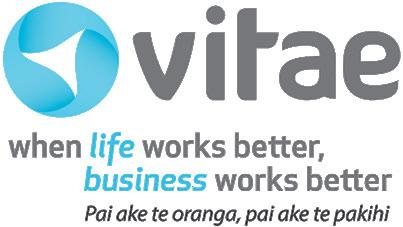

52 | Term 4, 2022 www.principalstoday.co.nz Working Space | Health and Safety Sometimes it’s
good
to
be
alone –
but not always.
Sharing
a
burden
can help reduce the
load. Who can you talk to? Speaking to a Vitae counsellor doesn’t cost a cent. Call 0508 664 981 to make an appointment or book online @ www.vitae.co.nz
ARE YOU SAFE TO DRIVE?

Health, Driving and Substance
UNIT DETAILS
Five
Unit
ACCESSING THE RESOURCE
Impairment has been developed to raise awareness of how medication can impair driving. This is a sizeable and serious problem in New Zealand, affecting drivers of all ages.
credit NCEA Level 3 resource. Students examine the relevant determinants of health, and the implications for the wellbeing of people and society. From this analysis, they recommend health-enhancing strategies. High quality data is provided along with resources designed using SOLO Taxonomy.
supports assessment for Achievement Standard 91461: Analyse a New Zealand health issue.
The curriculum resource is freely available at education.nzta.govt.nz/health-ncea-l3/ Background information available at www.nzta.govt.nz/medication Thank you Haley Charles, Upper Hutt College, for developing this resource. RESEARCH SHOWS 2 OUT OF 3 DRIVERS USED MEDICATION THAT MAY IMPAIR DRIVING It’s illegal to drive if you’re impaired
Bringing a
The forest sector of New Zealand has recognised that our activities can often be hard to see and hard to understand. We want students around New Zealand to learn how a sustainable forest sector works, where trees are grown, how they are replanted, and what happens to the wood. Trees have covered the New Zealand landscape for millions of years, but now only 30% of our indigenous forests remain with much cleared for agriculture. Currently there is very little harvesting of our precious native forests and they make up much of our conservation reserves across New Zealand. Pine forests cover only 7% of our land mass, but are our 3rd largest export earner. Pine makes up 90% of our harvested crop and is in much demand by countries such as China, Korea and India for packaging, pallets, framing for houses and paper making. 40% of all timber grown in New Zealand is processed here to supply our housing needs, paper, cardboard, and increasingly biofuels as our economy moves away from fossil fuels. The forest sector is a growing and vibrant economy and we want to showcase our workplaces and the new technology that is driving this success.
All harvested crops in New Zealand are replanted. Seedlings are grown in nurseries around the country and planted by hand. This massive task means there are 40,000 people employed directly by the forest sector. This number is growing by the year as many wood products are increasing in popularity and replacing steel, concrete and plastics. Plantation forests are full of employees carrying out many tasks needed to care for the trees and plan the harvest, along with replanting. Much is invested in road building, soil and water maintenance, environmental impacts, and quality and measurement of the trees.
of trees to
school
Wood is Good
Wood is Good is an industry led primary school engagement programme that links through the eight Wood Councils of New Zealand to bring log trucks, local foresters, wood themed prizes books and games, and a love of trees to school students around New Zealand. Now entering its third year, the team from Wood is Good has visited many schools around New Zealand to talk all things wood and forestry while bringing a loaded log truck to the school, along with log truck safety, story reading, tree games and drone flying. This FREE and organised programme can be booked by contacting the National Program Coordinator. Do you know what a forester does?

Grow Me
The Grow Me programme is also entering its third year to bring hands on experiences to secondary schools around New Zealand. Organised FREE “Forestry Big Day Out” bus trips take students to visit a range of worksites around the forest sector, visit a logging crew or a sawmill or a port operation. Local professionals can be organised to visit schools for presentations or to engage with individual classes on topics they might be working on. Maths, Geography, Computers, Biology find how you can use these subjects in forest sector careers. Students can be shown the pathways to entering the forest sector, degree options and scholarships, apprenticeships and training. Want to know more? Contact our Secondary Schools Engagement Coordinator.

What some schools say...

love
your
Two school engagement programmes aim to bring this knowledge to schools around New Zealand, and it all starts with one thing: love of trees. • Vickie Humphries • woodisgoodnz@gmail.com • 021 114 5611 • www.woodisgood.co.nz • Melina Vlahos • woodcouncilforestry@gmail.com • 027 607 1600 • www.growmeforestry.co.nz We are very grateful for all your time and resources put into our school! We loved the visit, the prizes and the learning that was undertaken! The people who came were a privilege to have visit us! A huge thanks to you all. Taonui School Feilding, August 2021 The kids really loved being in the cab of the truck with the driver. It was a multi layered approach out of the classroom, in the classroom and in the truck. Great resources were shared with us. The people involved with us were fun. Paparoa Range School Greymouth, May 2021
Great exhibit and the students were buzzing after the visit. We have had parents tell the teachers that their child came home and discussed the blind spots, where they were and why they need to be avoided, so it’s great that the information is being spread to parents as well. Thanks very much for the visit. Port Chalmers Dunedin, June 2021 primary schools secondary schools







Water skills for life
The warm weather is here and that means it’s time to dust off your boardies, drag out the old towels and head for the drink.
Spending time in, on and around our lakes, rivers, and oceans is engrained in our DNA. But, tragically for far too many kiwi whanau this summer will be the last for many of our treasured tamariki.
For as much as we love the water, we don’t have the skills and knowledge to enjoy it safely.

Drowning is the number one cause of recreational death and the second highest cause of death as result of unintentional injury among young people aged 1-24 years.
Only 27 percent of New Zealand schools provide a minimum acceptable combination of eight or more water-based lessons of 26–30 minutes’ duration per year. The minimum should in fact be 10 lessons of at least 30 minutes.

Faced with the reality that more children are leaving school without the necessary water safety skills, should we accept that more children will drown, or address the issue, starting in schools?
The ways that our children enjoy the water has changed and we need to give them better practical skills to make sure no one loses their life unnecessarily.
Which is why we redeveloped the Water Skills for Life program to set the national standard for aquatic education in New Zealand primary schools.
It is linked into the national education curriculum and gives children the skills and knowledge they need to assess risks and make smart decisions around water.
This programme has been designed by educators from across New Zealand with input from world leading experts in aquatic education. The focus is to achieve the end outcome of culture change for this age group.
For our precious children these are the formative and most important years when water safety can be embedded and a life-long step-change achieved.
Water Skills for Life is made up of seven competency areas that contains 27 core skills, establishing broad fundamental competencies for life-long water safety.


It provides basic information about how to stay safe around water, how to recognise hazards and risk factors associated with water activities, how to avoid them and what actions should be taken if things go wrong.
Water Skills for Life can be taught through four learning levels for students, starting out in Year 0 up to Year 8. Within each learning level we show you how you can work with your students across the seven competency areas, including overall water safety and awareness.
For our precious children these are the formative and most important years when water safety can be embedded and a life-long stepchange achieved.
It is the time when children are most receptive and sets them up for further learning and resilience throughout their lives.
The Water Skills for Life programme helps build the capabilities of the swim teachers and schools to help them deliver water skills learning experiences for students across a broad and diverse range of abilities, ages, and cultures.



We’re here to protect Aotearoa’s future. Learn more about what we’re doing and how you can protect your tamariki at: www.waterskills.org.

56 | Term 4, 2022 www.principalstoday.co.nz Working Space | Pool Maintenance Repaint with EPOTEC NT EPOXY Advise on preparation and repair Supply of the most appropriate paint system Latest Epoxy and Acrylic technologies to suit your needs Call our technical experts on or find your local EPOTEC Approved Applicator at www.cotec.co.nz 09 837 0897 x 3
Keeping it green
The experts from Kennards Hire have produced 10 handy tips to make sure that your lawns look and last as well as possible.
1 Do a good scan of your grounds and remove any sticks. Rake up any leftover leaves so your lawns are receiving maximum sunlight and oxygen.
2 Make sure all of your lawn care equipment is in good working order.
3 Aerating your lawns will reduce soil compaction and increase air circulation. A well aerated lawn will become more efficient in absorbing rain and irrigation water, instead of it just running off the surface.
4 Testing your lawns’ pH levels will establish how acidic or alkaline your soil is. This will help you to determine the condition of your soil, and what your soil may require to nourish and sustain a healthy lawn.
5 If your lawns are suffering from any dead patches, or are a bit sparse in some areas, then it’s time to sow some new seed. Remove dead grass and fill with loose soil, then sow your seed. Make sure you use the same seed as the rest of your lawns. If you’re not sure of your lawn type, cut out a few pieces and take it down to your local garden store, they should be able to help you identify your grass type.
6 Keep your cutting height high to begin with. Make sure that you don’t cut your lawn more than one third of its height, as this may expose your lawn to disease and the lingering weather extremes of winter.
7 Grass clippings are a form of organic fertiliser and a great way to keep your lawns healthy. By using a mulching mower and returning the grass clippings to your lawns, you are essentially retuning 15 percent more nutrients back into your soil just by mowing your lawns.

What to do with old
and
8 The key to healthy lawns in summer is a deep root system. To create a deep lawn root system, you need to train the grass roots of the lawn to search deeper for water. This is done by reducing the time between watering, and increasing the duration that you irrigate. Watering infrequently forces the lawn to search deeper into the soil for its water supply with its root system - and the increased watering durations allows the water to soak deep into the soil for the root systems to seek out.
9 There is nothing worse than a patchy lawn that is riddled with weeds. Use a spray unit and use a Bindii and broad leaf herbicide to apply directly to the weeds.
10
Grass grows fastest in the warmer months, so when moving from spring into summer, decreasing your cutting height down to 2.5cm won’t affect it too much.
During cooler months, grass grows much slower so it’s a good idea to raise your cutting height a little so as not to damage it.
of NZ education providers are throwing away
‘KEEP OF THE GRASS’ signs in favour of weather-proof, durable artificial grass that keeps kids being active.

SmartGrass Sports turf and artificial landscaping grass has dramatically enhanced the appearance of the outdoor area at Wairakei School, adding vibrancy and colour that the students love.



Shane
The area didn’t look very inviting and the kids didn’t use it. Now we’re finding our children are here all the time, practicing cartwheels, somersaults and dance moves.
To create an outstanding outdoor space for children
play and learn at your school, get in touch with SmartGrass
www.principalstoday.co.nz Term 4, 2022 | 57
concrete, hard to maintain areas
high traffic spaces? Problem solved with Hundreds
their
Principal
Buckner, says:
to
today.
“ “ 0800 887 369 smartgrass.co.nz hello@smartgrass.co.nz Property | Grass Maintenance Giving your school lawns a little extra TLC leading into summer means you will reap the benefits of lush green grass throughout the entire season.
Outreach with Libraries Horowhenua
Libraries for Children and Young Adults are essential for information and development.

Outreach to our local schools improves student access to reading resources, services, and programmes. Collaborating also helps us to respond to curriculum needs.
It creates strong authentic relationships with librarians, teachers, students and whānau and supports reading for pleasure at home and during the holidays.

Outreach Services
Library talks
explorer
Kete Horowhenua tutorials
inclusion
support and resources
Storytime Archive
Digital
Curriculum
info@horowhenua.govt.nz 06 368 1953 tetakere.org.nz te.takere
Horowhenua
Welcome to Libraries
Our Services Curriculum and class visits Book swaps Tutorials Kete Horowhenua Researching skills Childrens Services Libraries for Children and Young Adults are essential for information and development. Our children’s libraries equip children with lifelong learning and literacy skills, enabling them to participate and contribute to the community. Our Branches Te Takeretanga o Kura-hau-po Te Awahou Nieuwe Stroom Shannon Library info@horowhenua.govt.nz 06 368 1953 tetakere.org.nz te.takere






















































































































































































































































 By Timmi Aplin-Barrett
By Timmi Aplin-Barrett










































































